






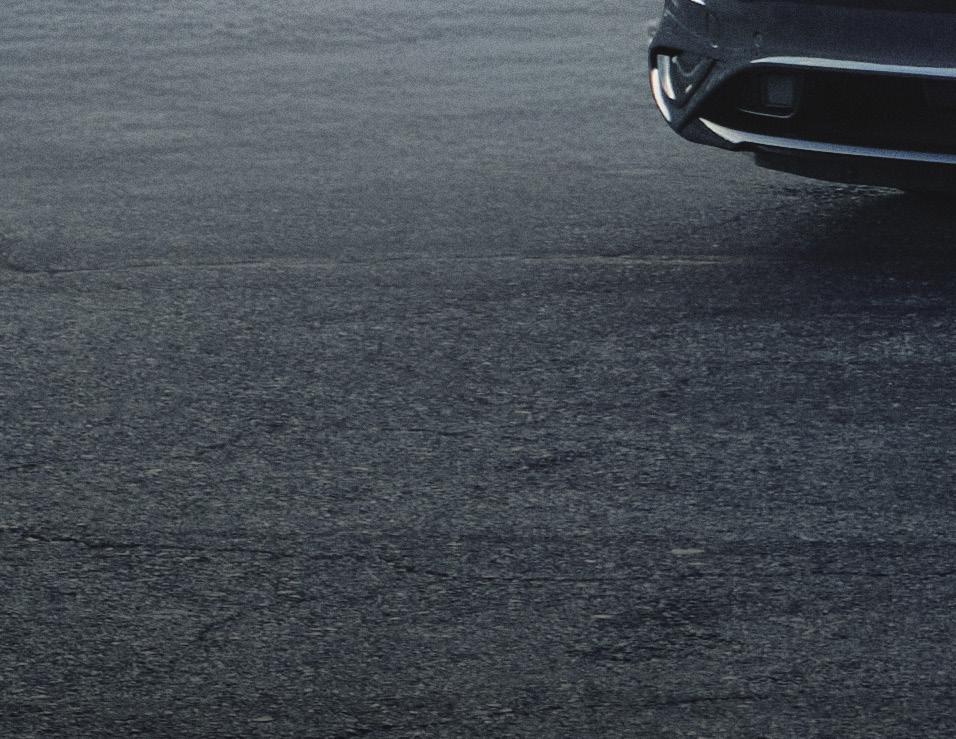



























pebblebeachconcours.net
Cars become a canvas for some of the world’s most innovative artists.
Italian proof positive that good things come in small packages.
The world’s oldest continuing model, the Rolls-Royce Phantom, celebrates its centennial.
The

Ferrari’s 312T






Thanks so much for joining us today. Together, we have much to celebrate!
A century back, in the mid-1920s, the automobile was coming into its own. Early experiments had established the car’s basic structure, systems for fuel distribution were improving, and networks of roads and motorways were growing. The emphasis was shifting to focus on advancing automotive technology and refining style. We were on the cusp of what many consider to be the Golden Age of the Automobile.
It was a time that gave birth to many of the marques and models that we now love and revere. So today we are celebrating not one but four centennials—for Chrysler, Invicta, Moretti, and the Rolls-Royce Phantom.
A hundred years ago Walter P. Chrysler set out to build his automotive empire, and in less than a decade it joined Ford and General Motors as one of America’s “Big Three” automakers, turning out top-of-the-line coachbuilt classics as well as a full lineup of cars to meet every budget and need. Coming decades would witness beloved creations like the Town and Country, and Chrysler design great Virgil Exner would point the way to the future with his “Forward Look” and Idea Cars.
Invicta, in England, built many fewer cars—likely no more than a thousand—but those cars circumnavigated the globe and set several distance records, and its lowchassis 4½ Litre S Type remains much admired and greatly desired today. Moretti, over in Italy, focused first on motorcycles and microcars before creating the diminutive but sporting gems that distinguish it from a multitude of other small firms.
Also turning one hundred is the world’s longest-lived car model, the Rolls-Royce Phantom, a hallmark for luxury, now in its eighth generation.
Aside from these centennials, the largest contingent of cars here this year mark the 75th anniversary of Formula 1. With the support of manufacturers such as Ferrari, Mercedes-Benz, and McLaren, we’ve mounted three full classes covering F1 from its origin in Grand Prix racing right up to the present. And we also feature displays celebrating the Shelby Cobra, Land Rover Expedition Vehicles, and BMW Art Cars.
My thanks go to the many owners sharing their cars here, the judges providing their expertise, and everyone joining us today to celebrate great cars.
I also offer a special thank you to the members of our Car Selection Committee, some of whom have volunteered their time for the full 20 years of its existence, to research, select and seek out the cars shared here. Their efforts are reflected on our show field each year—and I know they are already hard at work finding the cars for our 75th celebration in 2026.
Then, as now, we hope you will gather here with us, a community coming together over cars.
Sincerely yours,
Sandra Button Chairman

Ferrari Classiche documents the heritage and enhances the value of Ferrari road cars more than 20 years of age. With an official Certificate of Authenticity, owners gain access to meticulous restorations and service performed by teams of specialized factory technicians. Under their guidance, the Ferrari Classiche program has now expanded to select dealers around the world.


Welcome
Pebble Beach, where history continues to be made.
This week, the automotive world turns its focus toward the 74th Pebble Beach Concours d’Elegance. The Concours is a perennial highlight on the Pebble Beach Resorts calendar, and we are pleased to welcome the caretakers of these great cars, the world’s top designers and manufacturers, expert judges, and passionate spectators.
The Concours is central to the history of Pebble Beach dating back to the 1950s when the event first brought focus to collector cars. In the decades that followed, many firsttime displays made their debut here, and the 1990s gave birth to the Pebble Beach Tour d’Elegance, which kicks off the week in grand fashion. Every August, the Concours produces an energy and sense of anticipation like nothing else, and our entire team cannot wait to see what unfolds this year.
Much has unfolded at Pebble Beach since last year’s Concours, not the least of which is the ongoing renovation
of the 90-year-old Lodge main building. In February, we began a complete renovation of the building, so during the 74th Concours you will see many changes to its public spaces, including Stillwater, the Tap Room, and the lobby lounge and patio. When complete, the redesigned Lodge promises to be equally timeless but more modern and expansive, offering more places for people to celebrate meaningful moments and special events. The project is scheduled to be completed by November 1. Please look for an announcement of the grand opening, and enjoy the new experiences made possible by these renovations.
For all the fanfare and glamor that accompany the Concours, this spectacle is only possible due to the yearround effort put forth by both the Pebble Beach Concours and Pebble Beach Company teams, along with the support of more than 1,000 volunteers. Their care, attention to detail, and passion to host this event pave the way for the owners and their cars to gather here and are essential to making this the world’s foremost celebration of great cars.
Seventy-four years into the event’s history our commitment to the Monterey community has never been deeper. Since its inception in 1950, the Pebble Beach Concours’ charitable impact has resulted in more than $45 million in total donations. We remain on pace to continue the trend of exceeding the prior year’s donation.
History has been made on these grounds for over a century and we are eager for another chapter to be added this week. We are thrilled to have you as our guest and invite you to enjoy every minute of your time here—all while making some history of your own.
Sincerely yours,

David Stivers Chief Executive Officer Pebble Beach Company
Sophistication, without compromise.

A car that doesn’t make you feel something is a car that stops short of amazing. That’s the Standard of Amazing.
Experience Amazing






































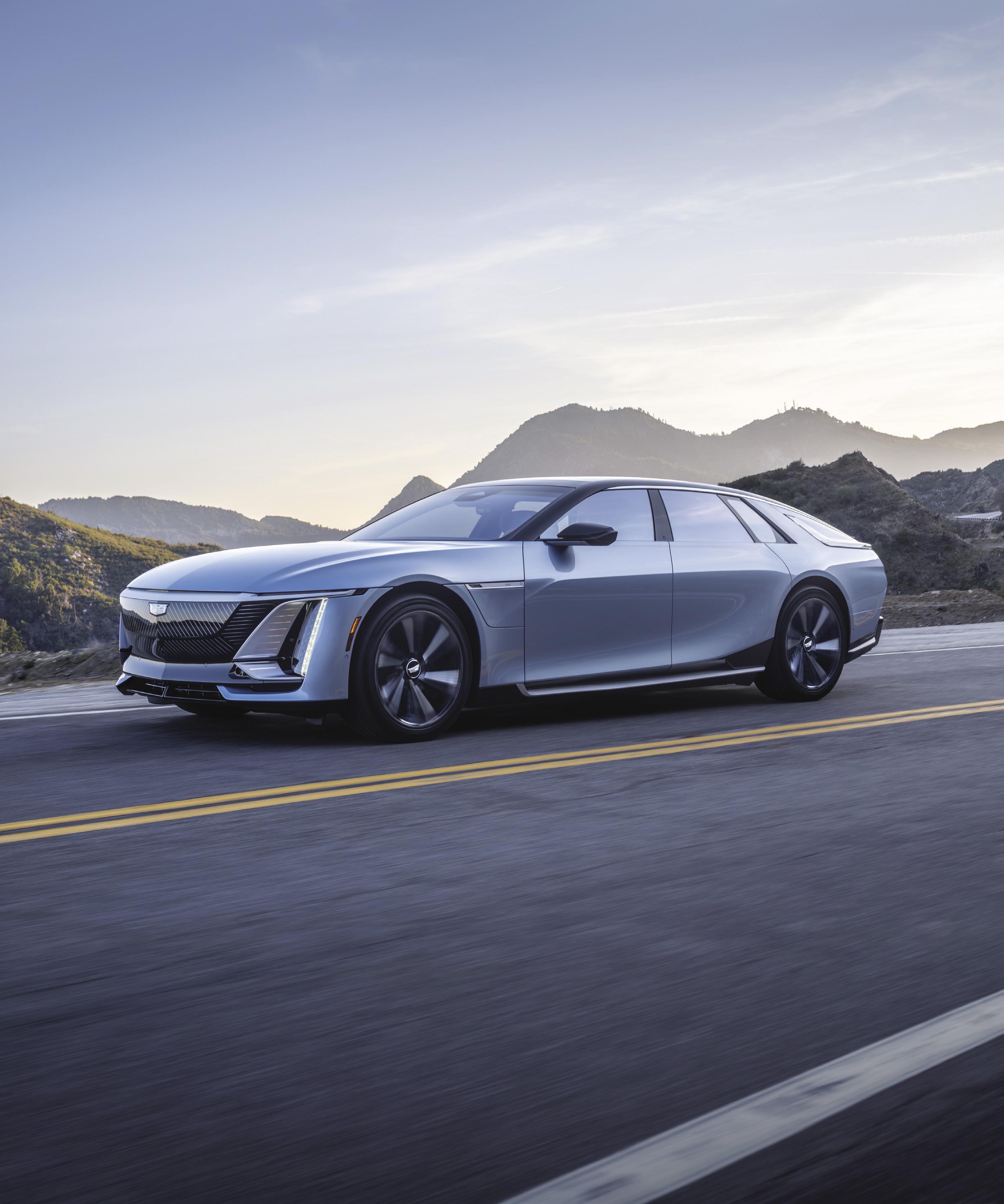

David Burgess-Wise, an author, a motoring historian, and a member of the Historic Advisory Panel of Britain’s National Motor Museum, is the former manager of Ford’s European Corporate History Office. The author of some 35 motor books and countless articles, he has been writing about early motor cars for over 60 years. A regular contributor to Britain’s The Automobile and Octane magazines, his lifetime love of pre-1940 automobiles extends to ownership of a sporting boat-tailed 1926 Delage DISS and a 1924 Sunbeam 14/40 coupé.
Colin Comer is a respected Shelby historian and collector. His five definitive books on the cars and the people of Shelby American, published in three languages, have received international acclaim. In fact, Shelby Cobra Fifty Years was named “the greatest car book of all time” by Esquire. Colin, his wife Cana, daughter Remington (named after Shelby Chief Engineer Phil Remington) and son Briggs (named after America’s Greatest Sportsman Briggs S. Cunningham) live in River Hills, Wisconsin, just “fifty-one miles from Road America.”
PUBLISHER
Pebble Beach Company
EDITOR-IN-CHIEF
Sandra Button
MANAGING EDITOR
Kandace Hawkinson
ART DIRECTOR & DESIGN
Nicole Doré
SENIOR EDITOR
Martin E. Button
PROOFREADERS
Tessa Avila
PRODUCTION
Chris Benzel
Printed in Canada by Hemlock Printers
Pebble Beach®, Pebble Beach Resorts®, Pebble Beach Concours d’Elegance®, Pebble Beach Concours™, Pebble Beach Tour d’Elegance®, Pebble Beach RetroAuto™, Pebble Beach Classic Car Forum™, Pebble Beach® Automotive Week, Pebble Beach Golf Links®, The Hay™ Golf Course, The Lodge at Pebble Beach™, The Inn at Spanish Bay™, The Links at Spanish Bay™, Spanish Bay®, Casa Palmero®, 17-Mile Drive®, The Lone Cypress™, Stillwater Cove™, and their respective underlying images, are trademarks, service marks and trade dress of Pebble Beach Company.
Copyright © 2025 Pebble Beach Company. All rights reserved.
Mark Dixon has been writing full time about classic cars for 35 years and has a particular passion for prewar machinery. The roads around his Herefordshire cottage in the west of England, UK, are perfectly suited for old vehicles, he says, since much of the county has hardly changed in the last 50, 100, or even 500 years.
Ken Gross is an award-winning journalist, historian, and museum curator. A longtime member of our Pebble Beach Concours Car Selection Committee, he has curated a wide range of classes here, including every Hot Rod class, as well as those focused on Porsche 917, Ford GT40, Tatra, Tucker, Miller Racing Cars, and Sport Customs, among others. He also serves regularly as a Chief Class Judge.
Maurice Hamilton has attended more than 500 Grands Prix since 1977. He worked as a motor sport correspondent for The Guardian, The Independent and, for 20 years, The Observer, and was a commentator and summarizer for BBC Radio’s Grand Prix coverage between 1989 and 2010. The author of more than 40 books, Maurice writes for magazines and websites across the world. One of his most recent ventures is “Racing Legends,” a series of children’s paperbacks on Formula 1, and his latest book, Formula 1 Cars: The greatest F1 cars from 1950 to the present day, is due to be published by Collins this September.
Peter Larsen has co-authored several books with Ben Erickson on French cars and coachbuilders, including an ongoing series about Joseph Figoni where the latest volume about Bugattis that received bodies by Figoni has recently been published. Peter judges at a number of international concours, including the Pebble Beach Concours d’Elegance, where he also serves on the Selection Committee. Ron Verschoor first attended the Pebble Beach Concours d’Elegance in 1989, served as editor for the Classic Car Club of America for a dozen years, and has owned a Chrysler Imperial Ghia Limousine.
Cover: Art by Tim Layzell
Contents: Michael Furman
Masthead & Front Matter: Kimball Studios, Pebble Beach Company Lagorio Archives
Sandra Button: Maria Teresa Tenaglia/ The NB Center
David Stivers: Channing Benjamin
Our Charities: Pebble Beach Company, Pebble Beach Company Foundation, Julian P. Graham, William C. Brooks, Kimball Studios, Sherman Chu, McPherson College, and Academy of Art University
Our Judges: Kimball Studios, Sherman Chu
Formula 1: Daily Express/Hulton Archive/Getty Images, Michael Tee/LAT Images/Getty Images, Don Price/Fox Photos/Hulton Archive/Getty Images, George Wingard Archive, Popperfoto/Getty Images, Frederick Simeone Foundation Inc., Revs Institute Archive, Dana Mecum Archive, Bruce R. McCaw Archive, Bruce Meyer Archive, David Phipps/Sutton Images/Getty Images, Duncan Dayton Archive, Chris MacAllister Archive, Tom Hartley Jnr. Archive, Denis Bigioni Archive, Nicholas Schorsch Archive, GP Library/Universal Images Group/Getty Images, SBH Archive, Ken Griffin Archive, Steve Powell/Getty Images, David Phipps/Sutton Images/Getty Images, Toshifumi Kitamura/Poo/AFO/Getty Images, Clive Mason/Getty Images, and Dan Istitene/Formula 1/ Getty Images.
Chrysler: Underwood Archives/Getty Images, Kimball Studios, Bill Paullus, Brett Crannell, Robb Hallock, David Burton, Steve Burton, Alan W. McEwan, Steve Snyder, and Ron Verschoor Archive
Virgil Exner: Peter Larsen Archive, Kimball Studios, Steve Burton, Jeff Field, Robb Hallock, Dan Hembal Archive, Maine Classic Car Museum, Alan W. McEwan, Glenn Mounger, and Steve Snyder
Concepts: Kimball Studios and Manufacturers
Invicta Centennial: David Burgess-Wise Archive, Kimball Studios, Alan Brown Archive, William E. Connor Archive, Shaun Lynn Archive, and Andrew Pisker Archive
Shelby Cobra: Colin Comer Archive, André Michael Ahrlé Archive
Winners & Trophies: Kimball Studios, Julian P. Graham/ Pebble Beach Company Lagorio Archives. William C. Brooks/ Pebble Beach Company Lagorio Archives, Steve Burton
Land Rover: Jaguar Land Rover
BMW Art Cars: BMW, Peter Parks/AFP/Getty Images, and Georgeon/Rossi/Gamma-Rapho/Getty Images
Moretti: John Edgar Photo/William Edgar Archive, Karl Ludvigsen Archive, Revs Institute/William Hewitt
Photograph Collection, Revs Institute/Robert Canaan
Photograph Collection, Dr. Dennis & Sue Adair Archive, Lawrence Auriana Archive, Mark Brinker Archive, Andrew Meikle Archive, Michael Schwartz Archive, Elad Shraga Archive, Michael Sizemore Archive, and Alex Vazeos Archive
Rolls-Royce Phantom: Kimball Studios, Julian P. Graham/Pebble Beach Company Lagorio Archive, Stephen Brauer Archive, Jim George/Pete DeAngelo Archive, The Lehrman Collection, Jon Leimkuehler Archive, Victor Muller Archive, Peter Reynolds Archive, and Nicholas & Shelley Schorsch Archive
Rearview Mirror: Dean Batchelor/Ron Kellogg Collection, Al McEwan, and Steve Burton

Join us throughout 2026 for a year packed with concours, auctions, parties, behind-the-wheelexperiences, and so much more — all built to take your car love to the next level.
See the full schedule at hagerty.com/events
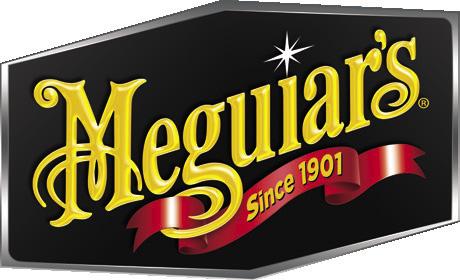



The Pebble Beach Concours d’Elegance brings together our passion for cars with the opportunity to raise money for people in need.We thank the judges, entrants, sponsors, spectators, and volunteers of this Concours who have helped us make a difference in the lives of many people.Working together, we have raised over $45 million for charity since the Pebble Beach Concours began in 1950. Last year alone, we raised over $3 million, and we are on track to raise a similar amount this year.
Even though Monterey County is iconic—with its stunning natural beauty, world-class golf courses, and its designation as a travel destination—there is great need in this community. Sixty-seven percent of third-grade children cannot read at their grade level. Twenty percent of children under the age of 17 live below the poverty line. More than 50,000 residents require monthly food assistance.
Through our primary charitable partner, Pebble Beach Company Foundation, proceeds from the Concours benefit more than 100 local nonprofits, with an emphasis on those serving children and focusing on their health and education. The Concours’ annual charity drawing— bolstered this year by generous gifts from Mercedes-Benz, INFINITI, and Lincoln—directly benefits several charities, including the Boys & Girls Clubs of Monterey County, Montage Health Foundation, MY Museum, Natividad Foundation, Salinas Valley Health Foundation, Seneca Family of Agencies, and United Way Monterey County.
Pebble Beach Company Foundation is celebrating 50 years of giving. It now impacts the lives of over 100,000 children annually in Monterey County to provide youth with the building blocks of success, starting with literacy and education, especially for those with the greatest need. As Pebble Beach Company Chief Executive Officer David Stivers notes, “Pebble Beach Company and the Pebble Beach Concours d’Elegance are a great complement to
one another thanks to our shared commitment to worldclass excellence, timeless style, and giving back to our community.”
This past year, the Foundation awarded grants and scholarships to more than 100 of the region’s best youthfocused nonprofit education programs. In keeping with its focus on education, the Foundation is also working with the Concours to oversee the scholarships created to honor Phil Hill, Jules “J.” & Sally Heumann, and John Lamm and encourage the next generation of automotive enthusiasts.
To achieve its ever-expanding mission, Pebble Beach Company Foundation relies on the generosity of its donors, whose contributions make a major difference in the lives of Monterey County children and in the health of the region overall. To fund its many grants, the Foundation receives significant contributions from the Pebble Beach Concours d’Elegance and other annual events at Pebble Beach Resorts as well as thoughtful personal gifts from those simply looking to foster the community around them.

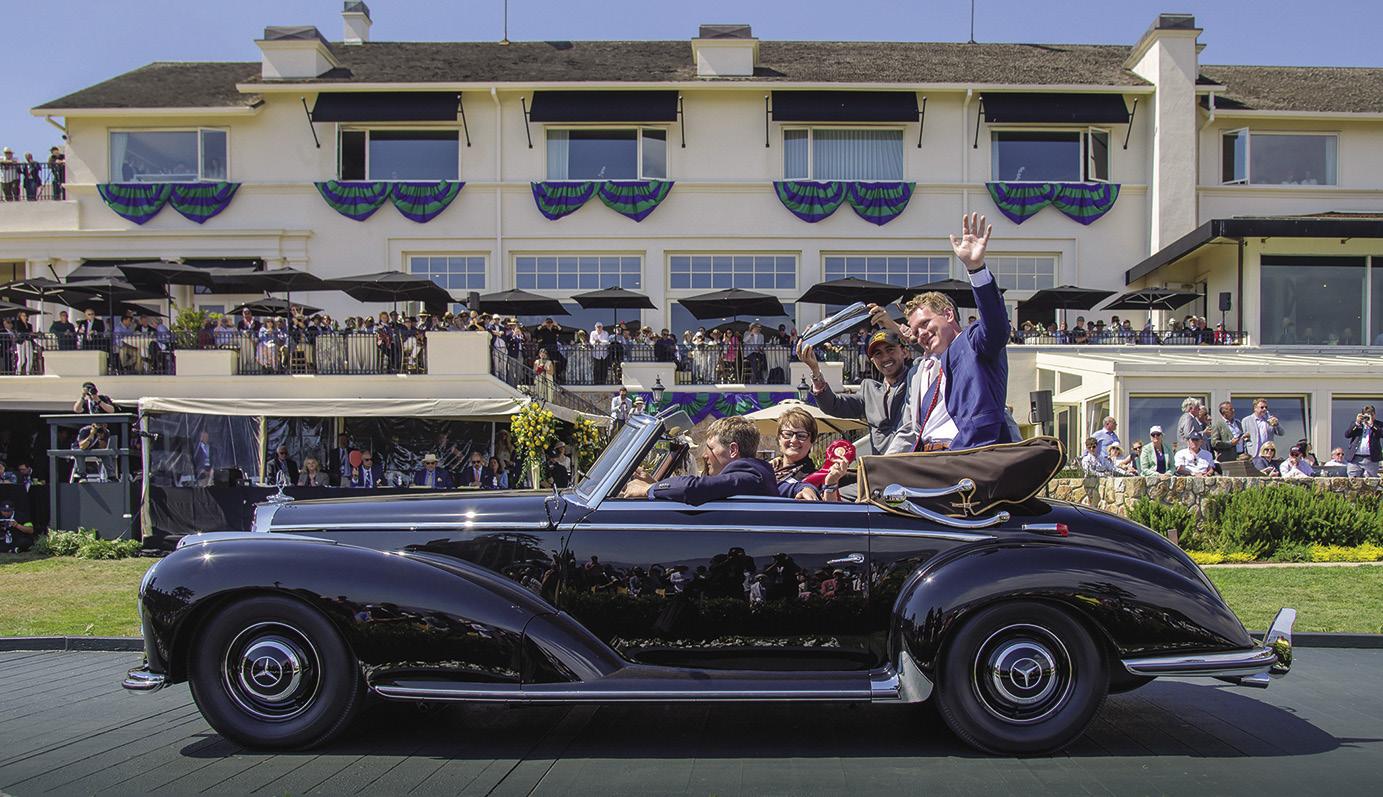
We are proud to note that, through the Pebble Beach Company Foundation, we are supporting three Phil Hill Scholars, one Jules “J.” & Sally Heumann Scholar, and one John Lamm Scholar for the coming academic year at McPherson College. These scholarships go specifically to students of the automotive arts—automotive restoration, design, and communications.
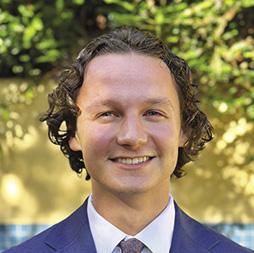
Noah Durham
Phil Hill Scholar
Noah Durham understands the importance of preserving classic cars—not just for their craftsmanship and engineering but also for the memories they hold. He is particularly interested in vintage Toyota Land Cruisers because of the memories they spark from family camping trips. “It’s important to preserve classic cars, and the craftsmanship, engineering practices, and history embedded in them,” he says. “They are also sentimental to many people.” This past summer, Noah interned at Eclectic Motor Company in Maryland, working in its trim shop. After graduating, he hopes to work in a shop and later have his own, working on four-wheel drive vehicles.

Ryder Konczak
Phil Hill Scholar
Ryder Konczak loves the hands-on skills he has honed at McPherson College. His passion for working on cars began at a young age, inspired by his grandfather, who bought, restored, and sold various vehicles. “I think classic cars are important because they tell stories of the past,” Ryder says. “They are a physical history—a time capsule you can interact with and be transported to a different era.” He plans to focus his interests on engine and drivetrain restoration. After college, Ryder is interested in working at a shop or private collection and staying involved in industry events.

Caleb Pezold
Phil Hill Scholar
Caleb Pezold’s fascination with cars and engines was sparked by working on them alongside his father. Together, the two restored a 1953 Chevrolet Pickup. Caleb admires the bold designs and distinctive style of Studebakers and enjoys engaging in all areas of restoration. “I enjoy how so many different components go into making a great automobile,” he says. Caleb recently interned as a mechanic at the Evergreen Car Collection in Lebanon, Missouri. Ultimately, he dreams of opening a restoration shop with his father, combining their expertise to serve their local community and share their love for classic cars.




Mason Cox
Jules “J.” & Sally Heumann Scholar
From the moment Mason Cox picked up a hammer and sheet metal, he knew exactly what he was meant to do. Having interned at BBT Fabrication, where he gained experience in high-end fabrication, he plans to specialize in sheet metal fabrication, focusing on vintage panel restoration, modification, and customization. While he “grew up around American muscle cars,” he is increasingly “fond of European sports cars, especially Italian-bodied models. They have a specific character and design that I find attractive and unique to the late ’60s.” On campus, Mason serves as head of the C.A.R.S. Club car show committee and is on the Automotive Leadership Team.

Hayden Russell
John Lamm Scholar
After spending nights and weekends rebuilding his car’s motor while working full-time in corporate banking, Hayden Russell realized he was ready for a career change. Following his passion, Hayden became a full-time student at McPherson College, pursuing automobile restoration. “Classic cars represent the technological advancements, design philosophies, and social values of their times,” says Hayden. “Preserving these cars isn’t just about keeping a piece of machinery alive — it’s about maintaining a link to the past, ensuring future generations can appreciate the craftsmanship and innovation that came before them.”
The Academy of Art University has long partnered with us in honoring Phil Hill by providing two-year scholarships to its highly regarded Industrial Design program. The following two Industrial Design students will be joining the prior 24 AAU Phil Hill Scholarship recipients.

Leopold Sabharwal
Phil Hill Scholar
Leo is a designer shaped by eight formative years at a Waldorf School, where creativity, nature, and hands-on learning were core values. Raised in a multicultural household in San Francisco, he brings a rich, empathetic perspective to his work. Passionate about designing experiences that foster genuine human connection and enhance quality of life, Leo is currently studying at the Academy of Art University. There, he is leading the revitalization of the school’s Industrial Designers Society of America (IDSA) chapter to foster greater community and collaboration among design students.

Jinghan Yang
Phil Hill Scholar
Jinghan Yang is an international student from China currently studying in the United States. From a young age, he has demonstrated exceptional hands-on abilities and a sharp eye for detail. He is often captivated by outstanding designs, pausing to appreciate their elegant lines, balanced proportions, and nuanced surface transitions. A chance encounter introduced him to industrial design, sparking his passion for automotive design. At the Academy of Art University, Jinghan aims to continually refine his skills, deepen his expertise, and create truly inspiring work.



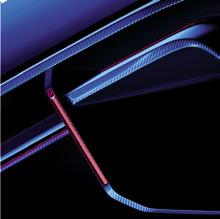











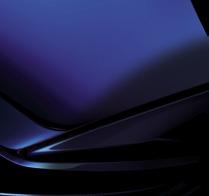







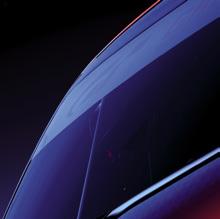



















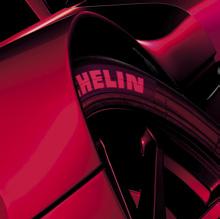








Consumption And Emission Values Of Urus SE: Fuel Consumption (Weighted Combined): 2,079 L/100 Km (Wltp); Power Consumption (Weighted Combined): 39,5 Kwh/100 Km (Wltp); Co. Emissions (Weighted Combined): 51,25 G/Km (Wltp); Co2 Efficiency Class (Weighted Combined): B (Wltp); Fuel Consumption With Discharged Battery (Combined): 12,9 L/100 Km (Wltp); Coefficiency Class With Discharged Battery: G (Wltp)
lamborghini.com



Chris Bock, Chief Judge | Nevada City, California
Chris Bock has served as our Chief Judge since 2013. He attended his first Pebble Beach Concours d’Elegance back in 1963 at the young age of 18, he was first appointed a Class Judge a decade later, and he continued to serve among our Judges over the ensuing decades, often acting as Chief Class Judge for American Classics. Mr. Bock is also on our Concours Selection Committee, a group of about fifteen experts who choose the cars that are invited to participate in this event, and he plays key roles in overseeing field and ramp operations on Concours Sunday, making certain that all runs smoothly. He has been an entrant on five occasions— often showing Packards, a marque to which he is devoted. Apart from the Concours, Mr. Bock has also served as President and National Head Judge of the Classic Car Club of America and as editor of The Cormorant for the Packard Club. He is a retired real estate broker and a foster parent.

Stephen F. Brauer, Chief Honorary Judge | St. Louis, Missouri
Stephen Brauer is Chairman and CEO of Hunter Engineering Company, which designs, manufactures, and sells computer-based automotive service equipment to manufacturers and dealers worldwide. In June 2001 President George W. Bush appointed Mr. Brauer as U.S. Ambassador to Belgium, where he served until September 2003. He is a past member of the Smithsonian National Board and is active in numerous charitable and civic organizations. Mr. Brauer is a longtime collector of American classic cars, Springfield Rolls-Royce and postwar coachbuilt Rolls-Royce and Bentley Motor Cars. He first showed a car at the Pebble Beach Concours—a 1937 Rolls-Royce Phantom III Barker All Weather Tourer— in 1991, and he has continued to share a car here almost every year. He joined our Honorary Judges in 2004 and has served on our Concours Selection Committee since its founding in 2005, choosing the cars to be invited to our competition field.
Alfonso Albaisa | Yokohama, Japan
Alfonso Albaisa is senior vice president for Global Design for Nissan Motor Co., Ltd. As such, he is responsible for developing bold and expressive designs for both Nissan and INFINITI brands, leading global design teams to reinforce a common essence across all models within each brand and deliver inspiring and exciting designs for customers around the world. Albaisa began his career at Nissan Design International (today’s Nissan Design America) in 1988 and held several senior design positions. In 2004 he was named design director for Nissan Design America, between 2007 and 2010 he was a vice president at Nissan Design Europe, and in 2012 Albaisa was appointed design director, leading global design strategy for Nissan. Prior to becoming head of global design for Nissan, Albaisa served as executive design director for INFINITI, leading the premium brand’s new design language. In 2016 he served as corporate vice president for Design Business Management and Strategic Design and was promoted to senior vice president in charge of Nissan Global Design in 2017. Albaisa graduated from Pratt Institute in New York in 1988 and attended the Center for Creative Studies in Detroit, Michigan.
Davide Loris “Dave” Amantea | Cambiano, Italy
Dave Amantea is the Chief Design Officer of Automobili Pininfarina. After earning a degree in Car Design in 2006 from Instituto Europeo di Design Turin, he started his career at the FCA Group as an Exterior Designer, then moved to other companies, such as Jaguar Land Rover where he was an Exterior Design Manager. He joined Automobili Pininfarina in 2018 as Head of Exterior for the electric hypercar Battista and was appointed Chief Design Officer in 2022.
Silvio Angori | Cambiano, Italy
Silvio Pietro Angori is Vice Chairman of the Board and Chief Executive Officer of Pininfarina Group. He joined Pininfarina in 2007 as Chief Operating Officer. During his tenure, Angori led the Company through a major industrial and financial restructuring of its business, enhancing Pininfarina as a design icon. From 1994 to 2007 he worked at ArvinMeritor Inc. (now Meritor Inc.), a leading global components and systems supplier. He held different management positions with increasing responsibility, leading cross-border businesses in Europe, the Americas, and the Far East. Angori holds an MBA from the Booth School of Business at the University of Chicago and a Master’s Degree in Theoretical Physics
from La Sapienza University in Rome. He is a member of several entrepreneurial and cultural associations, such as Unione Industriali, AMMA, and since 2019, he has served as Chairman of the Italian Car Design and Engineering Association and as Vice President of ANFIA (Italian National Automotive Association). In 2018, Automotive News World awarded him the Eurostar Prize for the outstanding turnaround of Pininfarina. That same year, he received the “L.A. Creativity Award” from the Italian Institute of Culture in Los Angeles.
Valentino Balboni | Ferrara, Italy
Valentino Balboni is one of the foremost Lamborghini experts, having driven 80% of Automobili Lamborghini’s production while serving as its longtime test driver. He started in 1968 as an apprentice mechanic, worked in customer service, and was appointed test driver in 1973. He initially tested production cars, including the Miura, Countach, Espada, Jarama, Urraco and Jalpa, and later became the Research and Development test driver, first developing the Diablo. In 2009 Lamborghini produced a limited special edition of the Gallardo named the Valentino Balboni LP550-2 to honor his 40 years of devotion to the company. He is now an independent consultant, focusing on vintage Lamborghini restorations.
H.H. Rana Manvendra Singh of Barwani | Indore, India
His Highness Rana Manvendra Singh belongs to the erstwhile royal family of Barwani in Madhya Pradesh. Keenly interested in automobiles from an early age, he started India’s first vintage and classic car restoration workshop in 1978. Today he is a well-known and respected authority on vintage and classic cars in India. He has been featured on numerous television programs and co-authored Automobiles of the Maharajas with Sharada Dwivedi. A founding member of the Vintage and Classic Car Club of India, Singh serves as Curator for the new Oberoi Concours d’Elegance in India. He formerly served in that role for the Cartier Concours d’Elegance. He also helped to organize both the 2012 Maharaja and 2018 Raj classes for the Pebble Beach Concours and was awarded the 2018 Lorin Tryon Trophy.
Mitja Borkert | Sant’Agata Bolognese, Italy
Mitja Borkert was appointed Design Director of Lamborghini’s Centro Stile in Sant’Agata Bolognese in April 2016. He is responsible for the further holistic development of the design DNA of Lamborghini and its design strategy, while coordinating and motivating his
talented and highly skilled design team. He has already contributed to the design of the Urus, Terzo Millennio, Huracan EVO, STO, Tecnica, Sterrato and the Super Trofeo versions, Vision GT, Sian, Countach LPI800-4, the Essenza SC-V12 and SC-63, and diverse one-off projects. The latest contribution includes the new “iconic and essential” Lamborghini design philosophy showcased in the Revuelto, Urus SE, Temerario and Lanzador Concept Car. Borkert graduated from the Design University of Pforzheim where he studied Transportation Design. In 1997 he interned at Porsche AG, and in 1999 he joined Style Porsche in Weissach, where he contributed to the design of several cars, including the Panamera Sport Turismo Concept, the Porsche Boxster 987 facelift, the Cayenne, Macan, 904 Living Legend, 917 Concept, 911 Safari, and Mission E. Borkert is a car guy but he also enjoys motorcycles, especially the world of supersport bikes and MotoGP. He seeks to give adrenaline a shape.
Filip Brabec | Herndon,Virginia
Filip Brabec is Senior Vice President, Product Management, at Audi of America, with responsibility for product definition and configuration of current models as well as setting the lineup of future U.S. vehicles in concert with AUDI AG. A leader in product planning for the company since 2006, Brabec now oversees two important arenas that contribute significantly to expanding the Audi brand and product platform in the U.S. market. He and his staff ensure that information about the current Audi of America product lineup is completely and properly distributed. And he works on a highly integrated basis with teams from the parent company in Germany on development planning of new products and technologies for future Audi models in the United States.
Marcus Breitschwerdt | Stuttgart, Germany
Marcus Breitschwerdt is a true Mercedes-Benz veteran with 30+ years of service. Having joined the corporate management trainee program as a controller, over the years he has held such positions as head of mobility and environment strategy, later taking responsibility for the marketing and portfolio strategy of Mercedes-Benz Cars. He served as President and CEO of MercedesBenz Canada then of Mercedes-Benz U.K. In 2014 he was entrusted with creating and leading the new Mercedes-Benz Cars Europe Sales and Marketing Region. Afterwards Breitschwerdt served as global Head of Mercedes-Benz Vans, realigning the division in terms of its business, strategy, and technology. Since 2022, as Executive Vice President, he is taking care of the entirety of the Mercedes-Benz heritage, as a core component of the brand and an expanding business of strategic importance.
Chris Brownridge | West Sussex, England
Chris Brownridge is Chief Executive Officer of RollsRoyce Motor Cars. Brownridge began his career with BMW in 1995. He has held a number of senior sales and marketing positions at BMW, including Chief Executive Officer of BMW Group UK and Ireland from 2021 to 2023. He joined Rolls-Royce Motor Cars as its Chief Executive Officer last year and is based at the home of Rolls-Royce in Goodwood, West Sussex, England.
Klaus Busse | Torino, Italy
Klaus Busse is the Head of Design for Maserati, a role he has held since October 2015. Under his leadership, Maserati has developed its current lineup, including the award-winning MC20. From 2015 to 2021, he also oversaw the design of Alfa Romeo, Fiat, and Lancia, shaping vehicles such as the Alfa Romeo Tonale Concept, Fiat Centoventi Concept, and Fiat 500 Electric. Since 2021, Busse has also led Stellantis Design Studio, the global creative agency of Stellantis, serving external clients across industries, from product and industrial design to brand experiences. Before his tenure in Italy, Busse spent a decade in the United States as Head of Interior Design for FCA North America, where he and his team transformed the interiors of Chrysler, Jeep, Dodge, and Ram into an award-winning lineup. His career began with ten years at Mercedes-Benz Design in Germany. A recognized leader in automotive design, Busse has received numerous accolades, including the Automotive News All-Star Award for Design (2013), Industry Innovator of the Year (2015), and Autocar’s Design Hero (2021). He was also named one of Motor Trend’s 50 Most Influential People in the Automotive Industry in 2019 and 2021.
Christine Cheng | Birmingham, Michigan
Christine Cheng is the global design director for Lincoln, responsible for leading the long-term design vision of Ford Motor Company’s luxury automotive brand. Cheng is a design leader with nearly two decades of experience driving the design and development of award-winning vehicles for leading automotive brands. She joined Ford Motor Company in January 2023 and led diverse teams across the F-Series truck lineup. Prior to Ford, Christine held design leadership positions at General Motors, including their luxury brand, Cadillac. She brings together a team of creative, digital, and human-centered experience designers to focus on delivering exceptional luxury and market-leading designs. Her knowledge of luxury and automotive is extensive; Cheng is excited to see Lincoln evolve and transform. Cheng holds a BS in Transportation Design from ArtCenter College of Design.
Michelle Christensen | Irvine, California
Michelle Christensen is a creative executive and awardwinning automotive designer, perhaps best known for her role in leading the design of the 2017 Acura NSX and becoming the first woman to lead the design of a supercar. Now as Global Vice President of Design at Karma Automotive, Christensen brings a unique, multidimensional leadership forged by her foundation in design and merged with her pragmatic approach to strategy and business. A graduate of the prestigious ArtCenter College of Design, her work spans luxury sedans, supercars, concept vehicles, and corporate rebranding, showcasing her versatility and innovative approach to leadership, brand, and design. Her designs have earned the coveted Road & Track “Performance Car of the Year” and Green Car Journal “Luxury Green Car of the Year,” and Christensen has been recognized on the Motor Trend “Power List,” Worth Magazine “Groundbreaking Women List,” Marie Claire “Women on Top” Award, and Moves Magazine “Power Women 2020.”
Miles C. Collier | Naples, Florida
Miles C. Collier is the Founder of the Revs Institute, a globally renowned automotive research institute, housing the remarkable Miles Collier Collections of historic automobiles as well as an extensive library and digital archive. His 2022 book The Archaeological Automobile reflects his lifelong advocacy of the automobile as the most significant artifact of the 20th century.
Robert T. Devlin | San Francisco, California
Robert Devlin has served among our Pebble Beach Concours Class Judges, often as a Chief Class Judge, for 39 years, focusing primarily on Ferrari, Porsche, and Postwar Custom Coachwork. Recognized as the world’s foremost authority on the Pebble Beach Road Races as well as the early Pebble Beach Concours d’Elegance, he is the author of two books on this event: Pebble Beach: A Matter of Style and Pebble Beach: The Art of the Poster, and he has authored or coauthored more than 125 articles in various automotive magazines and event programs. He also taught the History of Automotive Design for five years at the Academy of Art University in San Francisco.
Doug Field | Birmingham, Michigan
Doug Field is Ford’s Chief EVs, Digital & Design Officer, overseeing the design and vehicle hardware engineering of, and leading the development of, Ford’s electric vehicles and digital systems within Ford Model e. The latter includes overseeing software development, digital product design, and advanced driver assist systems. Field joined Ford from
Apple, where he served as vice president, Special Projects, and had overall responsibility for development of Mac hardware. Before that, he was senior vice president of Engineering at Tesla, where he led the development of the Model 3, and he was the first employee and vice president of design and engineering at Segway after beginning his career as a development engineer at Ford from 1987 to 1993. Field earned a Bachelor’s degree in Mechanical Engineering from Purdue University and also holds Master’s degrees in Engineering and Management Science from the Massachusetts Institute of Technology.
Lord Norman Foster
Norman Foster is the Founder and Executive Chairman of Foster + Partners, a global studio for architecture, urbanism and design, rooted in sustainability. His projects include the German Parliament (Reichstag) in Berlin, the Great Court of the British Museum, the Museum of Fine Arts in Boston, The Prado in Madrid, airports in Hong Kong and Beijing and headquarters buildings for JPMorgan and Hearst in New York, Apple California, Bloomberg London, Comcast Technology Center Philadelphia and the Hongkong and Shanghai Bank, Hong Kong. Current research projects with the European Space Agency and NASA, are exploring solutions for habitations on the Moon and Mars. He is President of the Norman Foster Foundation, based in Madrid with a global reach, promoting interdisciplinary thinking and research to help new generations of architects, designers, and urbanists to anticipate the future. He became the 21st Pritzker Architecture Prize Laureate in 1999. He received the Royal Gold Medal (1983) and AIA Gold Medal (1994). In 1997, he was appointed by Queen Elizabeth II to the Order of Merit and in 1999 was granted a Life Peerage in the Queen’s Birthday Honours List, taking the title of Lord Foster of Thames Bank.
Ed Gilbertson | San Francisco, California
Ed Gilbertson served as Chief Judge of the Pebble Beach Concours from 1999 to 2013 and was a member of the Selection Committee from its inception through 2022. He was previously Chief Class Judge for the Ferrari classes for 15 years. Gilbertson is also Chief Judge Emeritus for the Palm Beach Cavallino Classic and the Ferrari Club of America. He founded and is Chairman Emeritus of the International Chief Judge Advisory Group and the International Advisory Council for Preservation of the Ferrari Automobile. He is past President of the Ferrari Owners Club and former Regional Director of the Ferrari Club of America. He is a retired mechanical engineer and portfolio money manager.
Ralph V. Gilles | Auburn Hills, Michigan
Ralph Gilles was appointed Chief Design Officer of Stellantis in January 2021 and is responsible for shaping and directing design for the Chrysler, Dodge, Jeep, Ram, Maserati, and FIAT (Latin America) brands. He is also a member of the Top Executive Team at Stellantis. Since first joining the company in 1992 as a designer, Gilles has put his extensive academic background in industrial design and business administration to use, holding various positions with increasing responsibilities at the company. He is an avid car enthusiast and enjoys spending time at the track.
Fabrizio Giugiaro | Turin, Italy
Fabrizio Giugiaro, car designer and architect born in Turin in 1965, comes from a background of artists—from his grandparents, who are painters and musicians, to his father, Giorgetto, car designer of the century. The project that marked Fabrizio Giugiaro’s car design debut was the BMW Nazca M12 supercar in 1991, when he was only 25 years old, but soon his experience in style centers led him to manage teams of hundreds of designers for dozens and dozens of projects a year, including not only concept cars but also production models, such as the Alfa Romeo Scighera, Bugatti Chiron, Volkswagen W12 Record Nardò, Maserati 3200 and MC12, Lamborghini Calà and Gallardo. He pioneered the development of Hyper SUVs, from the Parcour-powered Lamborghini and the Audi Nanuk in 2013 to the recent GFG Kangaroo and GFG Vision 2030 (the first full-electric car to run the entire length of the famous Mille Miglia). Most recently, he unveiled the one-off Peralta S based on a Maserati carbon fiber supercar chassis. Fabrizio currently leads Giugiaro Architettura, an all-around design company, while in charge of the development and growth of GFG Style, an advanced, totally independent style center based in Turin, Italy.
Patrik Gottwick | Stuttgart, Germany
Patrik Gottwick has a strong background in the automotive industry, with a specialization in trading. As both a passionate car collector and dealer, his love for the threepointed star led him to Mercedes-Benz, where he has built a career over the years. After holding various roles within the company, he now serves as the Head of Sales and Marketing for Mercedes-Benz Heritage in Stuttgart, Germany.
Ivo Groen | Gothenburg, Sweden
Ivo Groen is Vice President Head of Creative Design for Lynk & Co. Design in Gothenburg, Sweden, which he joined in March of 2021. Born in 1967 in Amsterdam, Ivo emigrated to the U.S. at the age of 13 and obtained his degree in Transportation Design with Honors at ArtCenter College of Design. After an internship at Renault Design,
in 1990 he started his career at Style Citroën in Paris. After a decade there, the Peugeot family offered him the responsibility of Prospective and International Cooperation projects, eventually launching the Peugeot 107 and Citroën C1 in 2005. During this time, he oversaw PSA’s Advanced Design studio, designing for the Peugeot & Citroën brands and overseeing Peugeot Design programs for Chinese, Latin American, & Russian markets. Ivo was Chief Designer of the DS 7 “Crossback,” followed by the DS 9 Flagship sedan and the new DS 3 and DS 4 models. His passion for classic cars has expanded into activities such as judging concours events in Europe and writing a regular column in Autoweek Classics magazine over the past six years.
McKeel Hagerty | Traverse City, Michigan
McKeel Hagerty is the CEO and Chairman of the Board of Hagerty, an automotive enthusiast brand offering integrated membership products and programs as well as specialty insurance focused on the global automotive enthusiast market. McKeel Hagerty has served as a judge at the Pebble Beach Concours d’Elegance for 24 years and is a board member of the Petersen Automotive Museum in Los Angeles. Known for his passion-based approach to life and business, Hagerty has made saving driving and fueling car culture for future generations the company’s purpose. In 2016–2017, he was elected by his peers as the board chairman of YPO, the largest global organization for chief executives.
Adrian Hallmark | Crewe, England
Adrian Hallmark joined Aston Martin Lagonda in September 2024 as Chief Executive Officer. Prior to joining Aston Martin, Hallmark was Chairman and Chief Executive Officer at Bentley Motors, a position he held starting in 2018. For almost 30 years prior to that, he had board-level experience with luxury automotive brands including Porsche and Jaguar Land Rover.
Frank Heyl | Berlin, Germany
Frank Heyl is the Design Director of Bugatti as well as the Managing Director of the Bugatti Rimac GmbH design center in Berlin, Germany. Heyl’s design expertise has guided many Bugatti creations: Chiron, Divo, Bolide, Mistral and—most recently—Tourbillon. His design philosophy is tailored toward a sense of timelessness. With cars like the Bugatti Type 35, still revered for its genius even 100 years later, authenticity and purity are key defining features that permeate the design team’s thinking. Heyl fell in love with the Pebble Beach Concours and the Monterey area when he first visited in 2010. His dream is to walk the lawn with his grandchildren one day and show them some of the cars he helped create.


Kevin Hunter | Newport Beach, California
Kevin Hunter is Executive Design Director Toyota North America, at CALTY Design Research, Toyota’s North American design studio. Hunter is responsible for overseeing product design development at CALTY’s office in Ann Arbor, Michigan, working with Toyota’s operations in Japan and North America. He also serves as an Executive Advisor to CALTY’s advanced design studio in Newport Beach, California. Hunter has served in a number of roles at CALTY, including Chief Designer, Vice President, and President. CALTY creates innovative vehicle designs for the Toyota and Lexus brands. The most recent accomplishments under Hunter’s direction are the 2012 Lexus LF-LC concept that became the 2018 Lexus LC500, 2014 Toyota FT-1 Sports car concept that became the 2020 Supra, 2021 Toyota Sienna, 2021 Lexus Electrified Sport, 2022 Toyota Tundra, 2023 Toyota Sequoia, 2023 Toyota EPU concept, 2024 Toyota Tacoma, 2024 Toyota Land Cruiser, 2024 Land Cruiser ROX concept, 2025 Toyota Camry, and 2025 Toyota 4Runner.
Derek Jenkins | Malibu, California
Derek Jenkins is Senior Vice President of Design and Brand at Lucid Motors, a Silicon Valley–based luxury electric automaker. In this role, he oversees exterior and interior design, user experience, colors and materials, vehicle accessories/apparel, and brand strategy and creative. The company’s first vehicle, Lucid Air, won MotorTrend’s Car of the Year in its first year of production. Before joining Lucid, Jenkins was the Director of Design at Mazda North America, overseeing the 2016 MX-5 Miata, Shinari Concept, CX-5, Mazda6, and Mazda3, 2017 CX-9. Prior to that, he was Chief Designer for Volkswagen North America, overseeing Scirocco and Microbus concepts, the Ragster, and Concept T. He began his career at Audi.
Tisha Johnson | Douglas, Michigan
Tisha brings over 25 years of design experience to Slate. She holds a BS in Transportation Design from ArtCenter College of Design, and most of her career has been spent
at Volvo Car Group, where she last held the role of Global Vice President of Interior Design. She worked on EVfocused show cars and many production vehicle programs, including the C30, C70, and S90. However, much of her focus was on transforming the product portfolio to an exclusively electric lineup, including the C40, EX30, and EX90. She simultaneously led Polestar’s global design team. In her role, she was responsible for interior design of the electric performance brand from early inception and start-up. She and her teams defined and delivered interior designs for the Polestar Precept show car and Polestars 1 through 4. Johnson has also held design leadership roles at Herman Miller and Whirlpool Corporation, where she was Global Vice President of Design for each group respectively between 2020 and 2022. She received the Design Grand Prize at the 2019 Festival Automobile International in Paris and was named Industry Innovator of the Year at the 2017 Detroit Auto Show.
HRH Prince Michael of Kent, GCVO | London, England
A senior figure in the British royal family, HRH Prince Michael of Kent, GCVO, is well known in the motoring fraternity. As well as being the President of the Royal Automobile Club, he is an Honorary Member of the Bentley Drivers’ Club, the British Racing Drivers’ Club, and Club della Mille Miglia, and he serves as Patron of the Brooklands Museum Trust, the Veteran Car Club of Great Britain, the Institute of the Motor Industry, First Gear, and Roadsafe. He is also an Honorary Fellow with the UK’s Chartered Institution of Highways and Transportation and President of the Council for Motorsport UK. As a vintage car enthusiast, he was part of the 1992 team that broke the 1,000-mile record for cars over 5,000 cc in a 1929 Bentley. A competitive rally driver, he also has served as a judge at concours from the UK to India.
Felix Kilbertus proudly serves as the Chief Creative Officer at Pininfarina, the legendary Italian design house, celebrating its 95th anniversary in 2025. Felix oversees
a team of over 150 creatives worldwide, working from offices in Miami, New York, Turin, Milan, and Shanghai. Pininfarina Design today focuses on Architecture, Product Design, and Nautical and Transportation Design as well as all aspects of Automotive Design. Kilbertus was Head of Exterior Design at Rolls-Royce Motor Cars from 2016 to 2023, overseeing designs like the Spectre, Ghost, Cullinan Series II, and the Coachbuild editions. The redesigned Spirit of Ecstasy was a highlight during the brand’s historical transition to full electrification. Work from an earlier stint at Pininfarina includes the BMW Gran Lusso concept of 2013. While heading Fiat Exterior Design in Turin, projects included the refreshed FIAT 500 models and the 124 Spider as well the Tipo series. Starting in 2003, Kilbertus worked as a designer at the Advanced Design department at Renault in Paris and from 2008 onward with Nissan in Tokyo.
Tom Kristensen | Hobro, Denmark
A true legend of motor sport, Tom Kristensen graduated from a junior karting career in his home country of Denmark to success in international Formula 3, becoming both German and Japanese champion. This led to testing Formula 1 cars under the Michelin brand with Williams and Jaguar. It was in endurance racing that Kristensen found his natural home, winning his Le Mans debut with Porsche in 1997 and recording six consecutive Le Mans 24 Hour wins between 2000 and 2005. In 2013, Kristensen won his ninth Le Mans, making him the all-time champion there, as well as winning the World Endurance Championship with Audi. He also holds the record for wins at the prestigious Sebring 12 Hours, placing first overall six times, in 1999, 2000, 2005, 2006, 2009, and 2012. In 2013, Kristensen was inducted into Motorsport’s Hall of Fame.
Stefan Lamm | Sindelfingen, Germany
In July 2024 Stefan Lamm became Director of Advanced Design at Mercedes-Benz. Since the summer of 2020, Stefan has served as Head of Advanced Design for Mercedes-Benz in Germany. Before that, he ran the California Advanced Design Studio for five years as Vice President of Design in Carlsbad, where he and his team created several concept cars and visions for the brand. Stefan began his career in 1994 at Opel, where he held several positions, including Chief Designer, responsible for several production cars and show cars such as the Insignia Concept. In 2005 he joined Ford of Europe as Director of Exterior Design, where he developed designs for the Fiesta, Ford Kuga/Escape, Mondeo/Fusion, Focus, S-MAX, and the latest RS Generation, as well as several concept cars,
such as the Iosis and Ford Evos Concept. In 2015 Lamm joined the Volkswagen Group as Head of Exteriors at SEAT Barcelona, Spain.
Ralph Lord Montagu of Beaulieu | Beaulieu, England
Lord Montagu serves as President of the National Motor Museum of the United Kingdom, a charity founded by his father, Edward. The museum is located on the Montagu family estate at Beaulieu in the south of England and houses a collection of 280 vehicles and extensive libraries and archives. Lord Montagu is playing a large part in the future development of the motor museum, particularly in building an international network to support the charity’s mission. The Montagu of Beaulieu Trophy, awarded annually at the Pebble Beach Concours d’Elegance to the most significant car of British origin, was originally presented in 1982 by Edward Montagu.
Flavio Manzoni | Maranello, Italy
Flavio Manzoni was appointed the Ferrari Chief Design Officer in January 2010. From 2007 to 2010 he was Director of Creative Design at the Volkswagen Group, where he was involved in designing most of the recent Skoda, Bentley, Bugatti, and Volkswagen cars as well as redefining the aesthetic philosophy of these brands. From 2001 to 2006, he worked at Fiat Group as Head of Design for Lancia, Fiat, and LCV. He has also held design positions at Lancia and Seat. Manzoni holds a degree in architecture with a thesis in industrial design from the University of Florence. He has an honorary Master’s degree in Humanities, Modern Philology, and Cultural Industry from the University of Sassari, and an honorary Master’s degree in Design from the University of Firenze.
Dave Marek | Los Angeles, California
Dave Marek is the Executive Advisor for ACURA, with advisory responsibility for all projects at American Honda Motor R&D. He began his career at Honda R&D Americas in 1987, and as Design Project Leader he oversaw projects such as the 1994 Honda Accord Wagon, 1997 Acura CL, 2003 Honda Element, and 2006 Honda Ridgeline. Marek graduated from ArtCenter College of Design and serves as an instructor there today. He also supports several museums, serving on their boards, and he creates fine art and graphics for numerous clients.
Dr. Tom Matano | San Francisco, California
Tom Matano served as the Executive Director of the School of Industrial Design at the Academy of Art University in San Francisco from 2002 through 2024 and added Emeritus to his title at the beginning of this year.
Matano has over 30 years of experience in the automotive design industry, holding positions at GM Design in the United States, GM Holdens in Australia, and BMW in Germany. In 1983 he joined Mazda’s American design team, and from 1999 to 2002 he worked at Mazda headquarters in Japan as an Executive Designer in charge of the Chief Designers group. For Mazda he oversaw the designs of the MX-5/Miata, FD RX-7, and many other projects. At the Academy, he added the Automobile Restoration program to preserve important skills for the next generation of enthusiasts.
Lisa Materazzo | Dearborn, Michigan
Lisa Materazzo joined Ford in September 2023 as global chief marketing officer. Materazzo leads advanced product planning and marketing activities across all three customer centered business groups: Ford Blue, Ford Model e, and Ford Pro. She also oversees Ford Performance and the Lincoln luxury-vehicle business. Materazzo previously was group vice president, Toyota Marketing, where she spent 20 years over two tours. On Materazzo’s watch, Media Post recognized Toyota as “Automotive Marketer of the Year” for its strategic consistency and innovation in the midst of market disruption. She consolidated customer communications across the enterprise to create a seamless, connected experience, and she helped the company increase its appeal to African-, Hispanic- and AsianAmerican customers. Materazzo led marketing for Toyota’s Lexus and Scion brands during pivotal periods in their expansions. Earlier in her career, she directed automotive marketing for AOL/Verizon.
Kim McCullough | Pompton Plains, New Jersey
Kim McCullough is the Chief Marketing Officer for Parella Motorsports Holdings, owner of Trans Am, SVRA, F4, and IGT. In addition to her work for Parella Motorsports, she is focused on bringing more women into the automotive industry through her work on the Board of Directors of the TechForce Foundation and as a founding member of Women in Motorsports North America. Prior to joining Parella Motorsports, McCullough ran marketing operations for Mazda, Nissan, Toyota, and Jaguar Land Rover. She was recognized as one of “100 Leading Women in the North American Auto Industry” by Automotive News
Jordan Meadows | Long Beach, California
Jordan Meadows has served as the Vice President of Exterior Design at Scout Motors since October 2023. With a significant career in automotive design, Meadows has held key positions, including Head of Exterior Design at Slate Auto and Exterior Design Team Leader at Ford
Motor Company. His experience spans from 1998 as a Senior Designer at Jeep and Dodge, to roles such as Design Manager at Mazda’s North American Operations and Team Leader at Volkswagen AG. In addition to his industry work, Meadows authored Vehicle Design: Aesthetic Principles in Transportation Design, published by Routledge Press, and has served as an Instructor at the ArtCenter College of Design since September 2014. His academic credentials include a Master’s in automotive design from the Royal College of Art and a BFA in Industrial Design from the Rhode Island School of Design.
Gordon Murray, CBE | Surrey, England
Having spent 20 years as Technical Director to two Formula 1 teams—from 1969 to 1990—Gordon Murray has a wealth of technical, design, and engineering experience. At Brabham he was instrumental in two world championship wins (1981 and 1983) before three consecutive championship wins with McLaren Racing (1988, 1989, and 1990). In 1990—after 50 Grand Prix wins—Murray moved away from Formula 1 to establish a new company for the group, McLaren Cars Limited. His first project there, the F1 road car, is still regarded as one of the world’s best-engineered cars. A racing version won two World Sports Car Championships and the 24 Hours of Le Mans in 1995. His work with McLaren Cars culminated in the Mercedes-Benz SLR McLaren. Murray left McLaren in 2005, founding Gordon Murray Design Ltd. in 2007. The innovative British company is a world leader in automotive design, with complete in-house capability for design, prototyping, and development. In April 2022, Murray moved to the position of Group Executive Chairman to concentrate on leading design and strategic development. In May 2019, he was made a Commander of the British Empire (CBE).
Dan Neil | Raleigh, North Carolina
Dan Neil is the Pulitzer Prize-winning automotive critic for The Wall Street Journal and the author of Assouline’s The Impossible Collection of Cars.
Steve Nichols | Woking, England
As a teenager, Steve Nichols wanted to be a F1 designer, not an obvious path for a young man growing up in Utah. This meant a degree in aeronautical engineering and a first job at Hercules designing rocket motors and familiarizing himself with a new material, carbon fiber, years before its introduction in motorsport. Nichols then spent two spells at McLaren, the first bringing his experience with carbon fiber to the McLaren MP4/1, working alongside John Barnard in a design department initially consisting of just
three people. When John left for Ferrari, he became Chief Designer and saw firsthand the triumphs and tensions of the Ayrton Senna/Alain Prost pairing, while also acting as Ayrton’s race engineer. Nichols was the Chief Designer of the McLaren MP4/4, the most successful Formula 1 car of all time, winning 15 out of 16 races during the 1988 season in the hands of the legendary Senna and Prost. Nichols followed Prost to Ferrari but returned to McLaren several years later at the request of CEO Martin Whitmarsh in a broad and hugely satisfying role covering all aspects of the F1 team. Nichols is now Co-founder and Technical Director of Nichols Cars, Ltd.
Ken Okuyama | Tokyo, Japan
Ken Okuyama is the CEO of Ken Okuyama Design. After studying automotive design at ArtCenter College of Design in Pasadena, California, he worked as a chief designer for General Motors, a senior designer for Porsche AG, and a design director for Pininfarina S.p.A., and was responsible for the Ferrari Enzo, Maserati Quattroporte, and many other cars. He then served as a department chairman at ArtCenter College of Design and started the ArtCenter College of Design Award at the Pebble Beach Concours. In 2007, he founded his own brand, Ken Okuyama, and his own consulting company, producing one-off cars like the Kode57, eyewear, and interior products, and providing consultancy services to numerous corporations.
Robin Page | Crewe, England
Born in Coventry, England, Robin Page started his career as a Design Engineer Apprentice at Jaguar Cars Ltd. After completing a BA (with honors) degree in Transport Design, in 1995 he started work at Rolls-Royce and Bentley as a designer. After the takeover of Bentley by the VW Group in 1998, Page competed for the interior of the new Continental GT and won the design. In 2001 he was promoted to Head of Interior Design for Bentley. He then penned the design of the Continental GTC, Flying Spur, and the interior for the State Limousine for Queen Elizabeth II. In 2013 Page led the Volvo interior design team in the creation of the award-winning trio of concept cars and the final creation of the New 90 cluster, 60 cluster, and new XC40. In 2015, he received the Interior Designer of the Year award, and in 2017 was promoted to Head of Volvo design, introducing such projects as the 360c Concept, the XC40/C40, and the Concept Recharge. After the launch of the EX90, Page received the Car Design News award for most supportive leader in the industry. In 2023 Page returned to Bentley as Design Director.
Marek Reichman | Gaydon, England
Marek Reichman joined Aston Martin Lagonda in 2005 and is the Executive Vice President and Chief Creative Officer responsible for design developments. During his professional career he has held design roles at Ford, BMW, Land Rover, Rover Cars, and Nissan. Prior to joining Aston Martin Lagonda, he was Design Director at Ford North America. Reichman holds a BA in Industrial Design from Teesside University and an MDes in Vehicle Design from the Royal College of Art, London. In 2011, he received an honorary doctorate from Teesside University.
Frank Saucedo | Costa Mesa, California
Frank Saucedo is the former Director of GM Advanced Design, California. A native Californian, Saucedo’s first position was with Opel in Germany, where he started as a designer and went on to become chief of Opel’s first Advanced Design Studio. Upon returning to California, he took a position at the former GM Advanced Concepts Center and later joined the Volkswagen Design Studio. In 1999, General Motors invited him to open a design studio in California. Today, GM’s Advanced Design Studio in Los Angeles employs a staff of more than 70. Saucedo’s portfolio includes Opel vehicles such as the 4200 Corsa, Astra, Omega, and Tigra. At GM Advanced Design, he created the Borrego, Chevy SS, Pontiac Solstice, Cadillac Ciel, Cadillac Elmiraj, and Chaparral 2X concepts, and, most recently, a trio of concept Cadillacs named InnerSpace, SocialSpace, and PersonalSpace. He recently retired after 34 years with GM and has taken on a new challenge as Chief Design Officer with Meyers Manx, helping build the next generation of the iconic brand as an EV.
Named one of the “Top 100 Female Athletes of the 20th Century” by Sports Illustrated, Lyn St. James has set 21 national and international speed records. As a seven-time competitor in the world’s largest sporting event—the Indianapolis 500—St. James earned Rookie of the Year honors in 1992 and competed in 15 IndyCar races. She has competed all over the world, including twice at the 24 Hours of Le Mans (in 1989 and ’91), with victories in the IMSA Series at Watkins Glen, Road America, Daytona, and Sebring. She is a recipient of the prestigious “Spirit of Ford” award, the “Guiding Women in Sports” award, the “Office Depot Visionary Sportswomen of the Year” and is named on the Automotive News list of the Top 100 Women in the Automotive Industry. She serves on the board of ACCUS (Automobile Competition Committee of the United States) and on their Diversity
and Inclusion Task Force. She is the co-founder of Women in Motorsports North America and was inducted into the 2022 Automotive Hall of Fame.
Freeman Thomas | Dana Point, California
Upon graduating from ArtCenter College of Design in 1983, Thomas began his career at Porsche AG as a member of the 959 Design team. In 1990 he joined Audi AG as a Chief Designer, co-creating the 1994 VW Concept 1/New Beetle, and then penned the iconic Audi TT. In 1996 he became a Chief Designer for Volkswagen AG. In 1999, he joined DaimlerChrysler as VP Advanced Design Strategy, leading multiple preproduction programs and design concepts, including the Dodge Tomahawk motorcycle and the Noble American Sedan that became the iconic Chrysler 300. In 2005 he joined Ford Motor Company, leading North American Advanced Design and later Global Advanced Design with studios in Irvine, Dearborn, London, and Shanghai. After retiring from Ford, he co-created the CTR and SCR for RUF Automobile GmbH, and in 2020 he co-led the acquisition of the iconic Meyers Manx brand, being named its CEO and CCO and recently Vice Chairman.
Andreas Thurner | Los Angeles, California
Andreas Thurner started his career at Rolls-Royce Motor Cars in 2004, supporting the production development of the Phantom Drophead Coupé and Phantom Coupé. Thurner is the designer responsible for highly acclaimed cars like the first generation Rolls-Royce Ghost, Wraith, Dawn, and Phantom VII SII family. The Ghost was named the most successful Rolls-Royce ever produced and was awarded the “Best of the Best—For the Very Highest Level of Design” by Red Dot. After appointments to lead the global Advanced and Innovation Design Team at BMW Group in 2013 and as Vice President of Global Design and Architecture at the EV startup Karma Automotive in Irvine, California, in 2019, Thurner incorporated Thurner Design in 2020, a pinnacle marketing and design agency with global operations and customer base.
Franz von Holzhausen | Los Angeles, California
Franz von Holzhausen is the Chief Designer at Tesla, reporting directly to Elon Musk and responsible for all Tesla Design programs, charged with establishing a world-class design language for all Tesla products. He joined Tesla in 2008 to design the all-new Model S. He also contributed to the first-generation Roadster and has since led the design of the Model X, Model 3, Model Y, Semi, the all-new Roadster, Cybertruck, Cybercab, and Robus, as well as Tesla Superchargers, and the Powerwall
and Solar products from Tesla Energy. He holds a variety of patents for Tesla. He was named one of MotorTrend’s top 50 most influential automotive executives and one of the top 25 designers of all time by Automobile Magazine Prior to joining Tesla, he worked on the New Beetle and the Audi TT at Volkswagen, designed the Pontiac Solstice and Saturn Sky at General Motors, and pioneered the Nagare surface language at Mazda.
One of the most influential automotive designers in recent times, Prof. Dr. Gorden Wagener has led the worldwide design unit of Mercedes-Benz and all its brands since 2008. As Chief Design Officer of the company since 2016, his goal for the brands of the Mercedes Benz Group is to build the most desirable cars in the world. Wagener approaches this ambition with his design philosophy of “sensual purity,” which defines the specific luxury of the different brands. Wagener’s designs set new impulses in luxury and satisfy a desire for beauty and the extraordinary. This outlook is reflected most recently in the EQS, the Mercedes-AMG SL, the Mercedes-Maybach S-Class, the Vision EQXX, the Project Geländewagen & Project Maybach, Vision Mercedes-Maybach 6 Coupé and Cabriolet, and the Vision AMG.
Dr. Frank-Steffen Walliser started his role of Chairman and CEO at Bentley Motors on July 1, 2024. With a background in engineering and a notable career at Porsche, Dr. Walliser brings expertise to Bentley that is set to take the brand to new heights in the luxury automotive market. From Stuttgart, Germany, Dr. Walliser pursued mechanical engineering, specializing in combustion engines and technology management, establishing a strong academic foundation. His professional journey began at Porsche in 1995, where he demonstrated talent and dedication over nearly three decades. In 2010, he became the overall project leader of the Porsche 918 Spyder super sports car. His leadership extended to motorsport and street legal GT cars, where, starting in 2014, he guided Porsche to numerous victories, including the 24 Hours of Le Mans in the GTE category and the 24 Hours of the Nürburgring. In 2019, he took on the management of Porsche’s 911 and 718 product lines, and by 2022, he was overseeing overall vehicle development. His commitment to innovation, sustainability, and engineering excellence aligns perfectly with Bentley’s Beyond100 strategy, a mission to becoming a leader in sustainable luxury mobility.
Jay Ward | Orinda, California
As Creative Director for Franchise at Pixar, Jay Ward consults on all Cars-related projects globally, providing guidance for Marketing, Consumer Products, and Theme Park activations. He also serves as a liaison with automotive manufacturers and museums working on Pixar-related projects around the world. Ward was the automotive and creative consultant on all three Cars films, all Cars short films, and helped create “Cars Land” at Disney’s California Adventure Park. Most recently he collaborated with Porsche on creating the Sally Special, a bespoke 911 Carrera which sold for a record $3.6 million dollars, all of which went to charity. In addition to his direction on Pixar franchise projects, Ward has worked in the art departments of Monsters Inc., Ratatouille, and Brave, and served as Associate Producer of the 2008 Pixar short film Presto. He also created the Pixar campus classic car show, the “Pixar Motorama,” hosting vehicles from Jay Leno, Chip Foose, and the Petersen Automotive Museum, as well as his own classic cars. Away from Pixar, Ward co-created hot rod shows and contributed to several automotive publications.
Todd Willing | Dearborn, Michigan
Todd Willing has headed Ford Design since August 2024, leading design for Ford and Lincoln vehicles worldwide. He previously was global design director for Ford Model e. Willings automotive journey began in high school as part of a work experience program offered by Ford’s Australian Design Studio. During his time at Ford, Willing has played a pivotal role in shaping iconic Ford vehicles, working on products destined for markets around the world. He has had assignments in Japan, Germany, England, and the U.S., and he led the Ford Asia-Pacific design studio in Melbourne, Australia. He was part of the design teams behind vehicles including the 2007 Ford Mondeo, 2009 Ford Fiesta, and 2010 Ford Focus and was exterior chief designer on the 2017 Ford GT. While serving as global design director for Ford Trucks and SUVs, Willing led teams responsible for the F-150, Super Duty, Ranger, Bronco, Maverick, Explorer, and Expedition vehicle lines. Willing holds a bachelor’s degree in industrial design from Monash University in Australia.
Stephan Winkelmann | Bolognese, Italy
Stephan Winkelmann has been Chairman and CEO of Automobili Lamborghini since December 2020, a position he previously held from 2005 to 2016. He also previously served as Chairman of Bugatti and CEO of Audi Sport and has held major roles with many other automotive groups. In 2014 Winkelmann was appointed Grand Officer in the Order of Merit of the Italian Republic.
David Woodhouse | La Jolla, California
David Woodhouse is Vice President, Nissan Design America. He was appointed to this role in June 2019 and is responsible for leading all Nissan and INFINITI design activities in North America. He also serves on the company’s Global Nissan Design Management Committee. Prior to joining Nissan, Woodhouse was both Global Strategic Design Director and Lincoln Design Director at Ford Motor Company. His previous automotive experience encompasses over 30 years, much of it with global premium brands including Mini, Cadillac, Range Rover, and BMW. Woodhouse is an avid automotive enthusiast who writes on the subject and collects, restores, and competes with vintage race cars. He holds a Master of Design in Vehicle Design from the College of Art in London and a Bachelor’s Degree in Industrial Design from Coventry University in England.
Kazunori Yamauchi | Tokyo, Japan Japanese game creator Kazunori Yamauchi is renowned for the Gran Turismo game series that has sold over 90 million units worldwide. Joining Sony Music Entertainment in 1992, he was involved in the startup of the Sony PlayStation. Transferring to Sony Computer Entertainment in 1994, he produced his first game title, Motor Toon Grand Prix, and in 1997 the first of the Gran Turismo series, which sold approximately 10.85 million units worldwide. Yamauchi went on to establish Polyphony Digital in 1998 and serves as its President. He has also served as a board member of the Japan Car of the Year awards since 2001.
Andrea Michele Zagato | Rho, Italy
Andrea Zagato, born in Milan in 1960, is the thirdgeneration leader of the renowned Zagato marque, established in 1919. Holding a degree in Economics and Commerce from Bocconi University, he specialized in corporate finance with a focus on automobile design. Starting his career in the family business, he gained experience in various departments including communications, finance, and contract management. Notable achievements include negotiating with Fiat for the Alfa Romeo SZ and RZ and spearheading the creation of the limited-series Lancia Hyena. In the ’90s, he partnered with Marella Rivolta, leading Zagato’s transition into a modern Total Design Center and Coach-building Atelier. Today the firm continues to build upon its legacy of innovative design and advanced engineering by applying the same Milanese philosophies of functionalism and rationalism as Founder Ugo Zagato had more than 100 years ago.

CONCOURS SELECTION COMMITTEE
Chairman
Sandra Button
Richard S. Adatto
Chris Bock
Stephen F. Brauer
Martin E. Button
Colin Feichtmeir
David Gooding
Ken Gross
Paul Hageman
Peter Hageman
Evan Ide
Julius Kruta
Peter Larsen
Al McEwan
Miles Morris
Jonathan Sierakowski
CONCOURS ADVISORY BOARD
Camilla Brauer
John Clinard
Bob Cole
Bruce Meyer
David Sydorick
ANNOUNCERS
Master of Ceremonies
Amanda Stretton
Awards Show Announcers
Martin E. Button
Nic Waller
Morning Announcer
Barbara Rose Shuler
CONCOURS MANAGEMENT TEAM
Vice President
General Manager
Judith Ann Raible
Vice President
Business Development
Tour d’Elegance Director
Sean Jacobs
Brand Marketing & Creative
Nicole Doré
Content Strategy & Communications
Kandace Hawkinson
Operations Director
Gabrielle Garza
Participant Relations Director
Michaela Papazian
Production Director
Jeff Burghardt
Finance & Operations Manager
Quintin Souza
Volunteer & Concours
Village Manager
Sandi Pappani
RetroAuto & Classic Car
Forum Manager
Cindy McGrane
Media Center Manager
Greg Guggenheim
Administrative Coordinator
Ashlyn Archibeque
Digital Systems & Ticketing Lead
Jonathon Huber
Hospitality Coordinator
Chrissy Liguori
Installations & Operations Coordinator
Cameron Kincaid
Media & Marketing Coordinator
Camryn Garcia
VOLUNTEER EXECUTIVE COMMITTEE
Corporate Hospitality
Ben Beesley
Shannon Highfield
Rob Pappani
Security
Christian Haun
Michael McNamara
Showfield Operations
Paul Cain
Mike Pelly
Lawrence Walker III
Field Layout
Paul Pilotte
Tom Rakestraw
General Admission Ticket Sales
Katy Castagna
Tina Engquist
Info/Office Reception
Jane Durant-Jones
Military Liaison
Distribution Manager
Ed Cahoon
Ramp Operations
Chris Bock
Show Field Management
Dennis Palma
Spectator Transportation
Louis Lee
Wanda Lee
John Whitacre
Tour d’Elegance
Dennis Palma
Rob Pappani
Interns
Nicolas Bremeau
Ava Carson
Lucas Cuda
Rachel Dreyer
Claire Wilson

AT 12:30 PM PT AUG 17





Pebble Beach Concours d’Elegance extends a special thank you to all our sponsors who generously underwrite this event. Their important financial support allows us to maintain our commitment to excellence and continue our efforts to benefit worthwhile charities.







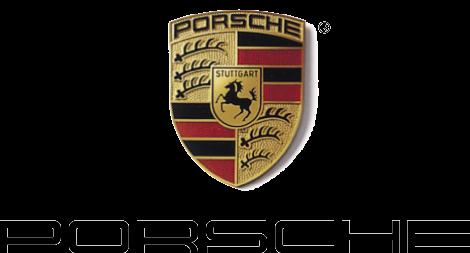

































































Our posters this year celebrate a range of cars that pushed the boundaries of style and speed, helping to redefine what a car could do and be.

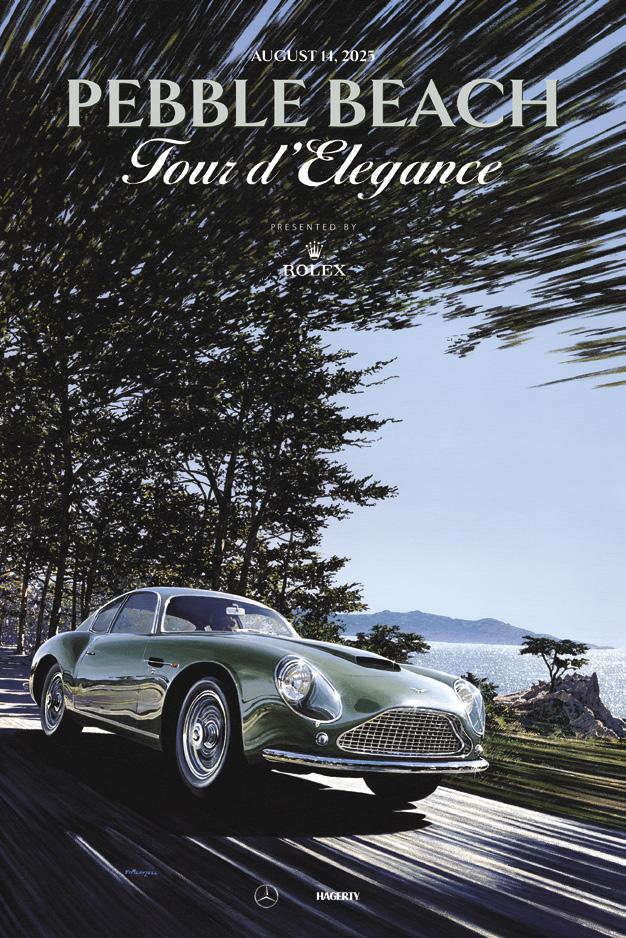
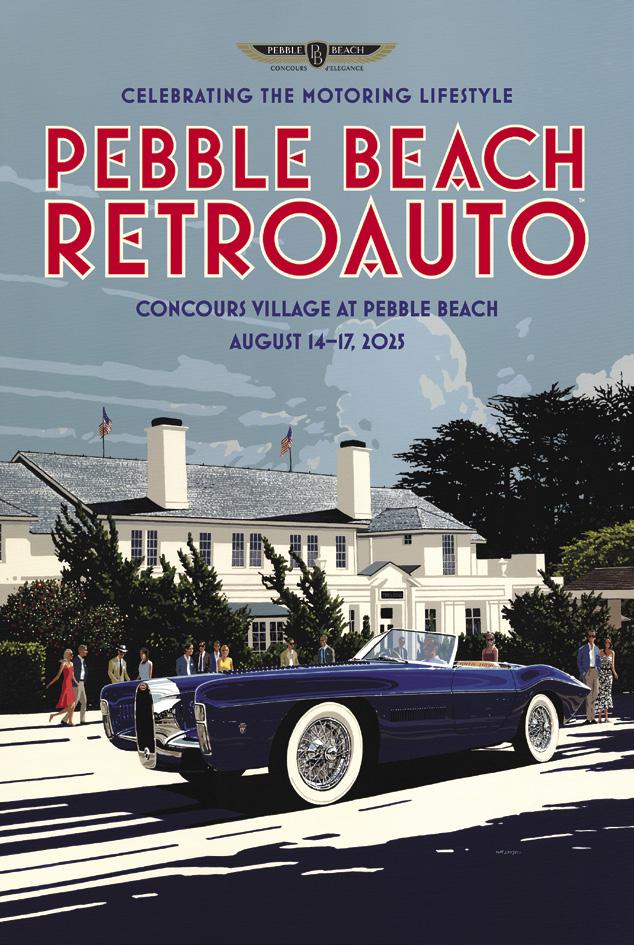
Beginning a century back, Invicta built quick and capable touring cars. In the hands of early racing great Violette Cordery, the marque set several long-distance records, circled the globe, and garnered two Royal Automobile Club Dewar Trophies. The low and sporting S-Type, powered by a 4.5-litre straight six Meadows engine, debuted at the 1930 Olympia Motor Show. Our Concours poster celebrates two S-Types. To the fore is the 1931 S-Type first owned by race driver Charles Needham that competed in numerous races and rallies, including the 1932 Alpine Trial, winning the Glacier Cup. A 1932 S-Type is seen in the distance.
Our Tour poster celebrates a rare Aston Martin DB4GT bodied by Zagato that first appeared at the 1961 Turin Motor Show. Aston Martin first unveiled the DB4GT model at the London Motor Show in October 1960. The chassis for our poster car was shipped from the UK to Italy to be bodied by Zagato. A production run of 25 cars was planned but just 19 were built. This car is one of seven left-handdrive models and one of just two with a full scoop on the bonnet. As the Turin Motor Show exhibit, it was completed with several special features, including custom trim, a polished grille, and bumpers front and rear.
In 1951, in an effort to reintroduce itself, Bugatti introduced the Type 101. Seven chassis (improved Type 57s) were created and just six cars were built. The last chassis, which received a supercharged engine and was showcased on its own, eventually made its way to Virgil M. Exner, the creative genius who had introduced the 1950s tailfins and the Forward Look while at Chrysler. He sought to make a modern Bugatti, retaining key styling cues such as the horseshoe-shaped radiator, while giving it a striking lean and more angular look. The finished car debuted at the 1965 Turin Motor Show.
The paintings for all three of our 2025 posters were created by Tim Layzell, a world-renowned artist with a portfolio that celebrates not only the world’s great cars but many of its greatest motoring events. Tim sometimes paints with an eye for realism and great attention to detail, reflecting nostalgic elements of our automotive history, while at other times he demonstrates his own distinctive “pop art” style, where strong lines and solid blocks of color emphasize movement and focus the eye on the subject. You can learn more at www.timlayzell.com.







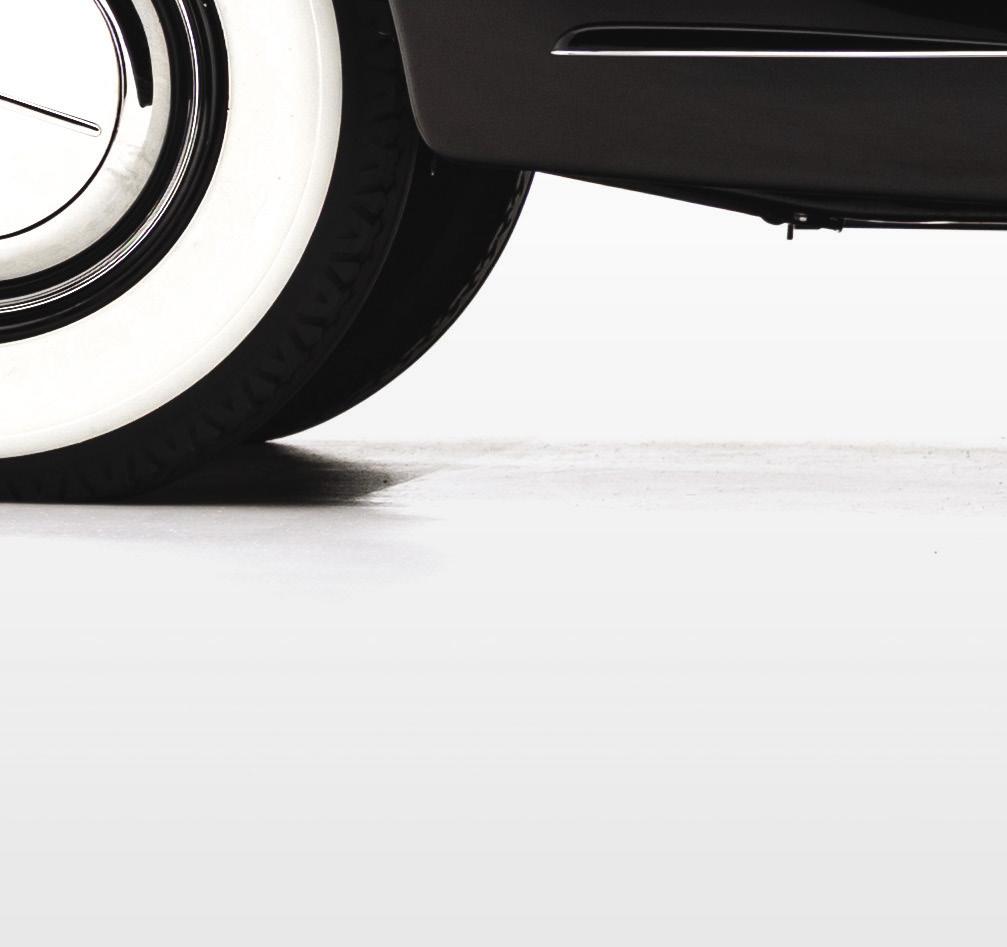











Juan Manuel Fangio in a Lancia-Ferrari D50 is just ahead of Mike Hawthorn in a BRM P25 on the starting grid of the British Racing Drivers’ Club International Trophy at Silverstone in 1956. The race was won by Stirling Moss in a Vanwall.

by Maurice Hamilton
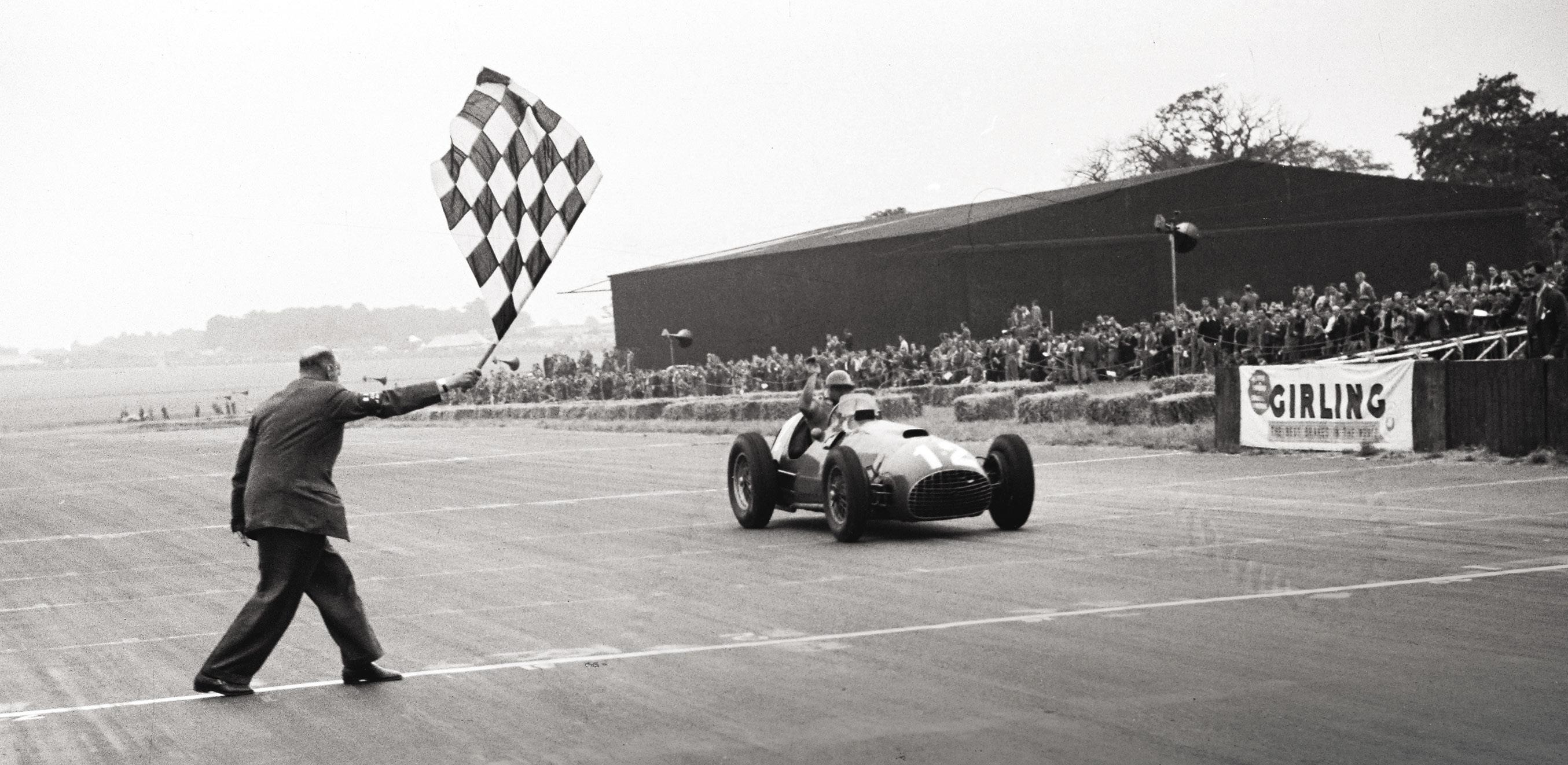
he greatest Formula 1 car of all time? It depends on when one of these exceptional machines first caught your imagination, accelerated your pulse rate, and caused a sharp intake of breath. Depends, too, on who was behind the wheel. Chances are, that driver will have been elevated to hero status, the car in question having allowed the exploitation of what you rapidly recognized as a God-given talent. This combination of man and machine will have become seared in the memory, embedded in the cerebral function that immediately prompts a warm glow when triggered by an image—or, better still, as will be appreciated this weekend, the rekindled sight of it and, if you’re lucky, the sound. Especially the sound.
This car will, of course, be from a “Golden Era,” no matter the period in question. That’s because it’s your Golden Era; a subjective choice driven by this internal surge of happy recall. Another important aspect of such personal preference is that each car has its own significant story to tell, a single chapter in the evocative volume created by F1 racing across 75 years.
The extraordinary evolution of motor sport’s technical prowess is plain to see by viewing these cars in
chronological order, each having been the competitive yardstick of its time. The fastest F1 car of the day continues to be exactly that. A combination of guttural sound and tingling performance has the same effect regardless of whether the driver in linen headgear can be seen wrestling a large steering wheel, or whether he is deep within the all-enveloping cockpit of a modern aerodynamic missile cornering at mind-boggling speed.
It is also apparent that the various back stories of these cars provide a broad history of F1, as demonstrated by the rapidly advancing technology, the relentless quest for safety, and the changing circumstances in which these cars raced. Such a transformation seems gradual within the prism of your own spectating experience. It’s only when the wider picture is displayed at memorable gatherings such as this one that the colossal scope and variation of the revolution becomes apparent.
It’s no surprise to find that, among our exhibits with a competitive DNA, Ferrari forms the central core of this automotive innovation. It could scarcely be any other way with the only team to have been racing since the inception of Formula 1 in 1950.
Before becoming an automotive icon, Enzo Ferrari started out as a racing driver, competing in the early Grand Prix races that predated F1. Ninety-nine years ago—almost to




The Lancia D50, with V8 engine, was the primary competition for Mercedes-Benz in Formula 1 racing in the mid-1950s.



Lance Reventlow bankrolled the first American-built Formula 1 racecar, the 1960 Scarab, but it did poorly, with just one 10th place finish in the season.


the day—Ferrari would have noted a dominant display by Delage in the very first British Grand Prix. Held on the banked track at Brooklands, the race lasted for four hours. By finishing first and third, Delage bolstered the French firm’s reputation as the leading manufacturer of racing cars. The story behind the Grand Prix was not so complimentary. There were just three finishers—and the surprise was there were that many. The race had been run at a blistering pace in every sense of the word.
The Delage’s exhaust pipe passed along the right-hand side of the car, and in no time the body panels were scorched, as were the driver’s feet as the pedals turned to hot plates. While taking on tires and fuel, the driver would limp from the car and plunge his feet in a tray of cold water. At one stage the leader, Robert Benoist, was in such pain that a Monsieur Dubonnet was asked to take over the car for a couple of laps. M. Dubonnet did not have the benefit of practice and he wore a blue lounge suit and a beret as he climbed into the simmering cockpit.
At least the Delages were running, which was more than could be said for the majority of the nine starters. The pair of Delage 15 S8s were split by a Bugatti 35, then considered to be one of the most brilliant of racing car designs. Fittingly, both pioneering models are here today. Also here are some even earlier Grand Prix racers, including a 1910 Fiat S61, one of three such cars sent stateside to compete in early U.S. Grand Prix, as well as the Vanderbilt Cup and the first running of the Indianapolis 500; and a 1921 Duesenberg that competed in the first post–World War I French Grand Prix at Le Mans.

Early motor races were long and punishing affairs on rough roads linking major European cities such as Paris and Madrid. A rise in speed was matched by an increase in danger, not only for the driver (and, quite often, his riding mechanic) but also for bystanders. The answer in 1906 was to establish a “course” starting and finishing in the same place, thus providing an opportunity for organizers to install some form of spectator control. These events grew bigger and better in every respect, culminating in a significant cash reward, or “Great Prize,” for the winner. The term “Grand Prix” was born and flourished in successive decades.

Enzo Ferrari formed Scuderia Ferrari in 1929 to enter Alfa Romeos on behalf of the Italian motor manufacturer. When the relationship between the two sides deteriorated nine


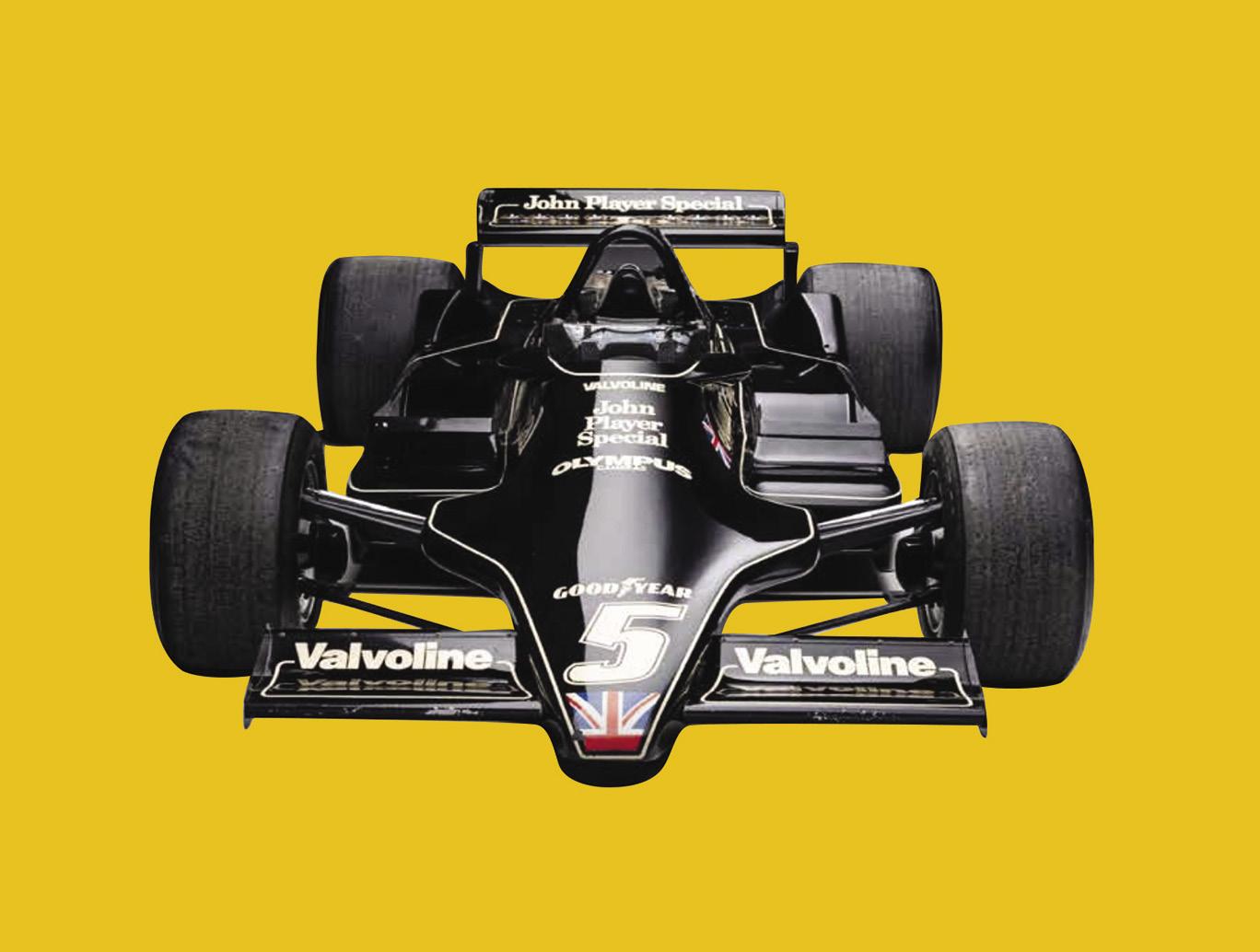


The Lotus 49’s revolutionary configuration bolted a Ford Cosworth DFV engine to the back of the chassis where it acted as a fully stressed member with the gearbox and rear suspension attached directly to it.

years later, Ferrari began building his own cars and entered the Mille Miglia sports car race. Raising his sights after the end of World War II, Enzo Ferrari produced a Grand Prix car and won the first of many World Championships in 1952.
One of the earliest F1 cars here this weekend—the Lancia D50 from 1955—is a perfect example of both Enzo Ferrari’s sense of sometimes-ruthless opportunism and his crafty reading of the rules, two traits exhibited by the “Old Man” until his death in 1988. Such cunning was particularly evident in the early Fifties as Ferrari made the most of disarray within the F1 world.
In 1950, the motor sports governing body, the Fédération Internationale de l’Automobile (FIA), sought to bring different racing formulas into line by conceiving a unitary class to be known as “Formula 1” and a related World Drivers’ Championship. (In order to justify “World” status, the FIA initially included the Indianapolis 500 in the championship, but that practice ended in 1961 because oval circuit and road racing have little in common.) After a year away, Alfa Romeo returned in force and cleaned up, but its withdrawal from motor sport cut the feet from under any hopes of competitive racing in 1952. It was immediately apparent that the race promoters faced the prospect of Ferrari domination as the red machines walked all over a shambling BRM outfit and a number of ancient and windblown cars that had seen better days. One by one race organizers began to apply for F2 events. The governing body seemingly nailed the lid on F1 when they

granted these F2 races world championship status. And— would you believe it?—Ferrari had a perfect F2 car waiting in the wings. The uncomplicated and powerful Ferrari 500, in the hands of Alberto Ascari, was in a league of its own. The advent of a 2.5-liter formula in 1954 ensured that F1 returned to its preeminent status and tempted Lancia into the fray.
Established in 1906, Lancia had a reputation for building motor cars of quality and technical innovation. In 1952, Gianni Lancia (son of founder Vincenzo) launched an ambitious competition program, first focusing on sports cars then turning his attention toward Grand Prix racing. The Lancia D50 was the result. Unfortunately, the original plan to take part in the 1954 season was blighted by delays, and further setbacks ensued when lead driver Alberto Ascari, the double World Champion, was killed while testing a Ferrari sports car on May 26, 1955. Faced with mounting financial pressures, Lancia agreed to have Ferrari assume control of its race team; its competition department moved lock, stock, and carburetor barrel from Turin to Maranello. Now known as the Lancia-Ferrari D50, the car was finally ready for 1956.
Victory for Juan Manuel Fangio in Argentina, Britain, and Germany was backed up by Britain’s Peter Collins, who scored his maiden Grand Prix win in Belgium followed by another in France, all of which would ensure the D50’s place in F1 history. For a car that had limited success during a comparatively brief period, the Lancia D50 struck fear into its rivals as readily as it captured the imagination

Above: The McLaren MP4/4 dominated Formula 1 in 1988, winning 15 of 16 races.
Below: The McLaren MP4/23A was built to contest the 2008 F1 World Championship for Vodafone McLaren Mercedes and carried Lewis Hamilton to his first World Drivers' Championship.

due to a stubby, aggressive appearance, with the lusty V8 engine contributing to the impression of menace.
The focal point of Grand Prix car construction was about to head north from Italy to England, where the Cooper Car Company would turn F1 design inside out. The effect of the Cooper T51 (the T55 on display here being a derivative) on F1 history was huge, the British car becoming the first to win the F1 World Championship with the engine mounted behind the driver.
Appropriately, given our location, the title was clinched at the very first United States Grand Prix. Jack Brabham went to Sebring, Florida, the final race of the 1959 season, knowing that fourth place or higher would bring the Australian his first World Championship. That seemed assured when his title rivals, Tony Brooks and Stirling Moss, ran into problems.

Brabham was leading comfortably when, within sight of the checkered flag, his Cooper ran out of fuel and spluttered to a halt. With Brooks rapidly making up ground after a time-consuming pit stop, Brabham knew he had to get his car across the line unaided. The final 400 yards were uphill. As Brabham pushed the Cooper, he was overtaken by three cars, including Brooks’ Ferrari. Fortunately for Brabham, the remaining runners were more than a lap behind.
An exhausted Brabham collapsed as he and the Cooper rolled across the line nearly five minutes later—and in the necessary fourth place. Cooper’s day was made complete when Bruce McLaren scored his maiden victory to become the youngest Grand Prix winner at the age of 22.
The temporarily converted airfield circuit would be the first of no less than 12 different race tracks holding world championship Grands Prix in the United States. No other country comes close to such a variety of venues. Following



one-off visits to Sebring and California’s Riverside, Watkins Glen would provide a permanent setting for 20 years.
In 1964, Graham Hill enjoyed what was fast becoming F1’s most flamboyant finish as the lavender-suited Tex Hopkins greeted the winner at “The Glen” by jumping high in the air while flourishing the checkered flag. Hill was driving a BRM P261 that would go on to win six Grands Prix between 1964 and 1966, the last of these at Monaco with Jackie Stewart at the wheel. The Scotsman used the BRM’s tractable 2-liter V8 to good effect on the classic street circuit despite this being the first race for a new 3-liter formula.
One of the serious 3-liter cars in the pipeline—the FordCosworth DFV—would provide a mechanical bedrock in F1 for years to come. That was no surprise, since the V8’s debut in 1967 had been nothing short of sensational, helped greatly by Colin Chapman’s latest creation, the Lotus 49.
The Lotus boss had initially been more concerned about finding a competitive power unit than designing a car to carry it. Chapman asked Ford of Britain if they would be interested in funding a Grand Prix engine. Seeing an involvement with frontline motor sport as a useful means of polishing its image, Ford agreed to commit a minimum of £100,000 toward an engine designed by Cosworth Engineering, a specialist company in England’s Northamptonshire.
Believing that his car should be relatively simple and not distract the team from sorting the Cosworth engine, Chapman defined the dimensions of the 49 by those of the V8 in the rear. The result was a slim monocoque with the engine attached to a bulkhead behind the cockpit, while serving a load-bearing role. The rear suspension was effectively bolted to the back of the V8, contributing to a car with timeless, economical lines.

Making its debut in the 1967 Dutch Grand Prix, the 49 was a winner straight away in the hands of Jim Clark. When Team Lotus was rocked by the death of Clark a year later, Graham Hill rose magnificently to clinch the 1968 championship at the final round.
McLaren came to the fore in 1974, when Emerson Fittipaldi won the title with a Ford-powered McLaren M23, but Ferrari was again on the rise. In 1976, Ferrari’s 312T2 won regularly in a season best remembered for Niki Lauda’s extraordinary recovery following a fiery crash during the German Grand Prix. The Austrian returned after just six weeks and battled to the wire with James Hunt, the 1976 championship going to the Englishman by a single point. Given that today’s F1 cars become obsolete after 10 months, Hunt’s accomplishment was all the more remarkable because it celebrated the fourth successive competitive season for the McLaren M23.
Lauda, a driver sparing in his praise, had no hesitation in describing the Ferrari 312T2 as “a gem of a car.” Clay Regazzoni’s win in a 312T2 in Long Beach was a success, not just for Ferrari, but also for Chris Pook, the former travel agent who had convinced the Long Beach city fathers of the benefits to be had from running a motor race on their streets. The U.S. Grand Prix (West) would remain a popular and significant part of the World Championship until F1 priced itself out of the market—thanks largely to Bernie Ecclestone, the diminutive Englishman who stood tall in the paddock as the de facto leader of F1 racing. The shrewd former car and motorbike salesman had bought the Brabham F1 team in 1971, and he was quick to spot the potential of having the F1 teams unite as opposed to relying on piecemeal deals that too often favored race organizers.
Lando Norris in the MCL38 clinches the World Constructors’ Championship for McLaren at the 2024 Abu Dhabi Grand Prix.
Meanwhile, Colin Chapman continued to focus on the technology of his F1 cars, and his Lotus 79 would revolutionize racing car design by utilizing the passage of air, not only over the chassis but, primarily, through the sides and underneath to maximize the aerodynamics. The principle of “Ground Effect” had arrived. Not only was the Lotus 79 beautiful to behold, the performance was stunning. Mario Andretti of the U.S. was virtually unchallenged on his way to the World Championship in 1978.
Along with every other F1 technical director, Patrick Head of Williams studied the Lotus 79 from afar and endeavored to capitalize on and improve the ground effect principle. The result of his efforts, the Williams FW07, would announce Williams Grand Prix Engineering as a serious force in Formula 1 as Alan Jones won the World Championship in 1980. By this time Ecclestone’s sharp mind and eye for detail had finally pulled the teams into line and, in the process, begun to make a lot of F1 people rich—not least, Ecclestone himself.
Under the leadership of Ron Dennis, McLaren began a return to the front line in 1980 with the pioneering introduction of a carbon fiber chassis. Dennis had the continuing foresight to commission Porsche to design and build a turbocharged V6 that would be funded by Techniques d’Avant Garde (TAG) and fully integrated with the next generation of MP4 carbon fiber chassis. The resulting collaboration was so successful that the McLaren MP4/2 won 12 of the 16 races in 1984, their drivers having exclusive bragging rights to the championship, and Niki Lauda beating Alain Prost by half a point.
Having revolutionized chassis construction with the carbon fiber McLaren MP4, designer John Barnard moved to Ferrari and introduced the semi-automatic gear change on the Ferrari 640. Flicking paddles behind the steering wheel may be as familiar to today’s motorists as pressing the accelerator pedal, but in 1989 it was a daring innovation with massive benefits in lap time and drivability. The Ferrari 640 qualified for a permanent place in the F1 record of significant race cars that also looked the part.
Following a low period in the early Nineties, Ferrari made a smart move by appointing Jean Todt as Team Principal. The Frenchman’s first step was to sign Michael Schumacher and bring in Ross Brawn as Technical Director. The illusive drivers’ title finally came Ferrari’s
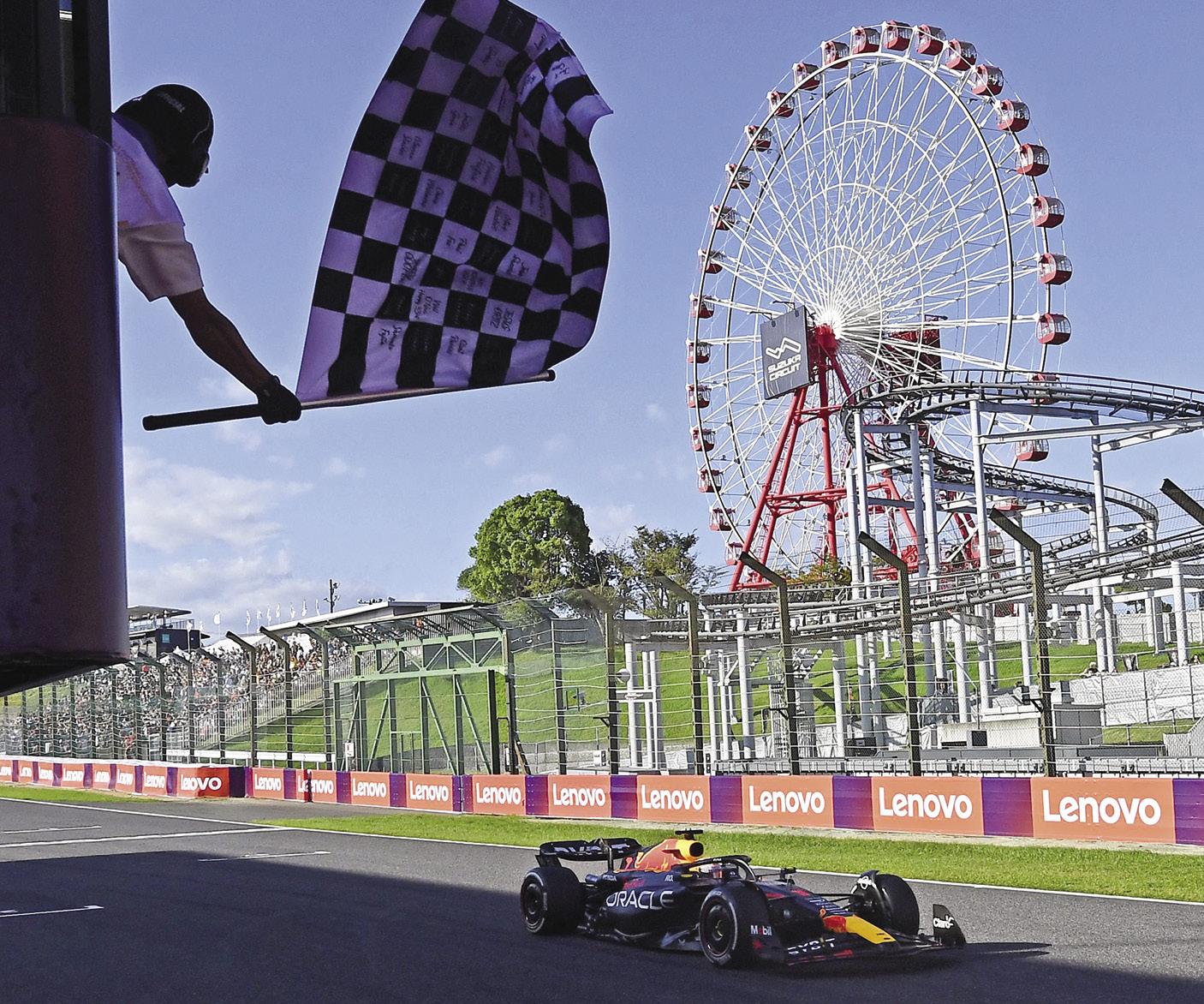
way in 2000, heralding an unprecedented five-year run of crushing control. After winning five consecutive world titles with Ferrari from 2000 to 2004, Schumacher signed off from the Italian team in 2006; his seven wins with the Ferrari 248 were the last in a distinguished run for the legendary driver.
Schumacher’s tally of seven world titles was eventually matched by Lewis Hamilton, with the Englishman taking his first with the McLaren MP4-23 after an unbelievably tense finish as he snatched the title from the Ferrari of Felipe Massa at the final corner of the final race in 2008. Hamilton switched to Mercedes in 2013 and began a hugely successful run that was finally ended by a period of dominance from Max Verstappen and Red Bull. The Red Bull RB20 is the last in a line of cars to have been designed by Adrian Newey before his departure for Aston Martin in 2025. At the same time, Red Bull’s run was ended by another surge from McLaren, as the second-oldest team in Formula 1 claimed yet another Constructors’ Championship in 2024.


battle between Alain Prost and Ayrton Senna being as mesmerizing as it was, at times, destructive. But anyone who witnessed Senna take the MP4/4 to—and sometimes momentarily over—the limit will never forget the image of a racing car seemingly dancing on the road.
Looking back, one of the most memorable McLaren periods came at the end of the 1980s when a link with Honda contributed to the McLaren MP4/4—seen by many as one of the most graceful F1 cars of the past 40 years. The McLaren MP4/4 legend was promulgated spectacularly by the men who drove it, the intense in-house
It was the stuff heroes are made of; a spectacle evident in F1 from the moment that haughty but graceful stylist Guiseppe Farina swiftly guided his Alfa Romeo 158 to the first World Championship in 1950. The greatest F1 car since then? The one that makes you pause, gently shake your head, and smile.







BY RON VERSCHOOR


The opening line of Walter Chrysler’s memoir, Life of an American Workman, tells you everything you need to know about the man: “Being a machinist, I have always wanted to know how things work.”
Writing a dozen years after establishing the Chrysler Corporation, Chrysler saw himself not as a captain of industry, but as a man fascinated by mechanical devices. If Henry Ford was the inventor and Alfred Sloan of GM was the managerial genius, Walter P. Chrysler was the engineer, and his passion for things mechanical was the guiding force for the company that bore his name.
Chrysler was born in Wamego, Kansas, in 1875, and his early history makes no mention of the emerging automobile industry. His father, Henry Chrysler, was a locomotive engineer for the Kansas Pacific Railway, and it was only natural that Walter followed in his footsteps. While Henry envisioned a college education for his son, 17-year-old Walter set his sights on an apprenticeship program with the railway, even taking a job as a floor sweeper at the Union Pacific roundhouse as a means of getting his foot in the door.
His mechanical aptitude put him on the fast track in the railroad industry and by the end of 1907, at age 32, he was appointed Superintendent of Motive Power for the Chicago Great Western Railway, “as high as a man could go mechanically in railroad service.”

—WALTER PERCY CHRYSLER
The following year, while attending the Chicago Auto Show, Chrysler became mesmerized by a Locomobile touring car and “spent four days hanging around the show, held by that automobile as by a siren’s song.” The $5,000 price tag was more than he could afford but with the help of an acquaintance in banking, he purchased the car and reportedly disassembled and reassembled it 40 times, learning every intricacy and nuance of how a fine motor car operates.
Chrysler remained in the railroad industry for another four years, gaining manufacturing experience overseeing production at the American Locomotive Company in
Pittsburgh. The operational efficiencies he implemented caught the eye of one of its directors, James J. Storrow, who was also the interim president of General Motors at that time. Storrow mentioned a position at Buick and, having exhausted the challenges the railroads had to offer, Chrysler recognized the opportunity to combine his mechanical and manufacturing experience with his fascination for the automobile. Reflecting on that pivotal moment, he saw the automobile as “the transportation of the future, and as such, I wanted to be part of it.” The transition from railroads to automobiles was on.
Chrysler’s ascent in the automobile industry, and his impact on it, was nothing short of phenomenal. Charles Nash hired him as Buick’s works manager in 1912, and four years later he was appointed president of Buick by Billy Durant, who was once again in the driver’s seat at General Motors. Clashes with Durant led to Chrysler’s departure in 1919 when his three-year contract expired, but by then he had moved Buick to third place in industry production and second place in profitability, pocketing a tidy $10 million for his accomplishments.


Walter Chrysler’s ability to cut debt, improve operations, and increase production made him a sought-after commodity in the automotive industry. John Willys paid him $1 million a year to turn around the failing Willys-Overland enterprise, and within a few months Chrysler cut its debt from $46 million to $18 million. Chrysler delivered an encore performance at the Maxwell Motor Company, which eventually led to the formation of the Chrysler Corporation.
Chrysler also possessed excellent people skills, attracting top talent and providing them with enough latitude to excel within their respective areas of expertise. Among his most important hires were three engineers: Fred Zeder, Owen Skelton, and Carl Breer. These men were known personalities in the automotive world, as they had successfully revamped the Studebaker lineup, and following their recruitment, Chrysler tasked them with the same assignment at Willys. He spoke glowingly of this trio: “Those three young automotive engineers were wizards. They seemed to be part of a single, extraordinary engineering intelligence. . . . You never would find, hunt high or low, three friends more harmoniously attuned, unless it might be those men of fiction, the Three Musketeers.”


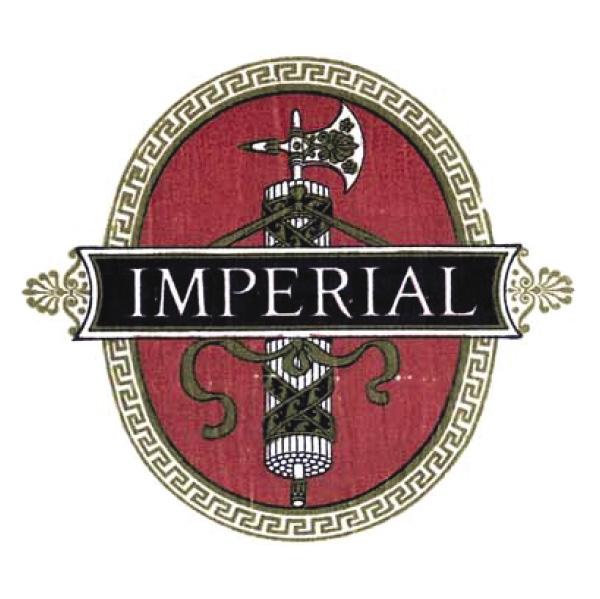
Chrysler Imperials of the early 1930s showcased some of the most lovely coachwork of their day.
Top left: The 1931 Chrysler Imperial CG of Ethel L. Lanaux bears a highly sought after Waterhouse Convertible Victoria body.
Top right: The 1931 Chrysler Imperial CG Sedan of Darrell L. and Jacqueline Davis won its class in 2003.
Lower right: This class-winning 1931 Chrysler Imperial CG of Aaron and Valerie Weiss is bodied with a LeBaron Dual Cowl Phaeton.
Lower left: This racy 1932 Chrysler Imperial CG, shown in 2021 by Mark Smith, is a one-off LeBaron Special Roadster.
Bottom: Chrysler developed special emblems for its top-of-the-line Imperials.


The three men began working on a new car during their tenure at Willys and continued its development at their own company, ZSB Engineering. Power came from a high-compression, six-cylinder engine fitted to an advanced chassis featuring four-wheel hydraulic brakes, tubular front axles, shock absorbers, and full-pressure lubrication. The car was introduced in January 1924 at the Commodore Hotel in New York City, manufactured by Maxwell, but marketed as a separate model named the Chrysler Six.
Technologically advanced, the new Chrysler was positioned as a luxury car but sold in the medium price range, making for a strong value proposition. Its performance virtues were validated by Ralph DePalma, who won the Mt. Wilson
Left: This 1933 Chrysler Imperial CL Custom LeBaron Phaeton has twice won its class, shown by the Cassinis in 2014 and the Academy of Art University in 2024.
Lower left: Another class award recipient, this 1933 Chrysler Imperial CL LeBaron Convertible Roadster was shown by Ed Rittenhouse in 2007.
Hill Climb outside of Los Angeles at the wheel of a Chrysler Six, besting the previous stock car record by two minutes. By year’s end, more than 32,000 Chryslers had been sold, and Maxwell’s corporate fortunes had reversed from a $5 million debt to a $4 million profit.
Buoyed by strong sales and profits, Walter P. Chrysler reorganized the Maxwell Motor Company, and on June 6, 1925, the Chrysler Corporation was born.
Sales tripled for 1925, and Chrysler ranked seventh in production among American manufacturers. Future growth was fueled by brand proliferation, following Alfred Sloan’s “A Car for Every Purse and Purpose” philosophy. The Imperial brand was introduced in 1926 as the top-of-the-line offering, dubbed the E-80 Imperial. Powered by a new, high-compression, 288-cubicinch, inline six-cylinder engine, it produced 92 horsepower, besting that of both the larger Cadillac V-8 and Packard straight-eight. The new Imperial garnered nationwide attention when it paced the Indianapolis 500 that year, driven by Louis Chevrolet.
“America’s Most Powerful Motor Car” boasted Chrysler advertising copy for 1928, with “112 H.P.” A small boost in displacement coupled

with a 6-to-1 compression ratio backed both the claim and the horsepower rating, with Chrysler once again packing more punch than the enlarged eight-cylinder engines from Cadillac and Packard, while priced $500 to $1,000 less than these rivals. In addition to the five standard body styles, the powerful Imperial drivetrain could be fitted with custom coachwork by Dietrich, Locke, and LeBaron.
That same year, Chrysler added three brands to its portfolio. The purchase of Dodge through a dizzying $170 million stock deal turned out to be a wise acquisition as it significantly increased Chrysler’s production capacity. Plymouth made its debut as the entry-level brand, another timely decision as this lower-priced offering served the company well throughout the Depression. And the DeSoto brand, positioned just below Chrysler, broke sales records for a newly introduced marque. Overseas, Chrysler entered four Series 72 roadsters at Le Mans in 1928 and two finished the race, placing third and fourth.
The January 7, 1929, issue of Time magazine featured Walter Chrysler on its cover, naming him “Man of the Year.” Chrysler had joined the ranks of Ford and General Motors to define the “Big Three” American automakers. One year later, the Chrysler Building, an Art Deco architectural masterpiece and the world’s tallest building, opened at the corner of 42nd Street and Lexington Avenue in midtown Manhattan. Chrysler was figuratively and literally on top of the world.


Top left: In the mid-1930s Chrysler introduced the “Airflow,” a series of cars with a modern style inspired by streamlining. This 1937 Chrysler Imperial CW LeBaron Airflow Limousine was shown by Frank A. Kleptz in 2000.
Top right: In the early 1940s, Chrysler introduced the Town and Country station wagon to meet the needs of people with an “active” lifestyle. Showcasing wood, it was soon dubbed a “Woody.”
Lower right: The 1935 Chrysler Imperial C-2 Airflow Coupe of Frank Daly traces the Pacific Ocean on the 2016 Pebble Beach Tour.
“Distinguished both in appearance and performance” was Chrysler’s claim for the all-new Imperial Custom Eight CG of 1931. Chrysler’s first eight-cylinder engine was a 385-cubic-inch straight-eight producing 125 horsepower. Packard’s eight shared the same displacement but the Chrysler engine delivered 15% more power. The inline design required a generous 145-inch-wheelbase chassis, the


ideal platform for some of the most beautiful coachwork of the day. Briggs Manufacturing Company produced bodies for all Chrysler divisions, but its in-house custom designs were marketed as LeBaron bodies, following the acquisition of Ralph Roberts’ design firm in 1927.
Approximately 450 Imperial Custom Eights with LeBaron coachwork were produced for 1931, spanning roadster, convertible coupe, convertible sedan, coupe, and dual-cowl phaeton body styles. The graceful, open
1941 witnessed the debut of two innovative show cars: the Thunderbolt and the Newport, which Chrysler described as ”New Milestones in Airflow Design.” At left: A Thunderbolt poses at the edge of Carmel Bay. Below: The Behring Auto Museum showcases a Newport at the Pebble Beach Concours in 1993.

front fenders seemed to stretch half the length of the car, complemented by the low roof and beltline. Prices for the Imperial Custom Eights began at $3,150, offering superior performance and custom coachwork at the price of a production Packard. A 1931 Imperial CG dual-cowl phaeton would later win Best of Show honors at the 1979 Pebble Beach Concours d’Elegance.
It was difficult to improve on perfection, but the LeBaron designs for 1932 benefitted from tasteful refinements. The one-inch increase in wheelbase was exaggerated through the incorporation of a “false hood” design, first seen on European custom bodies of the late 1920s. With a hood stretching to the base of the windshield and overlapping the cowl, the front end of these Custom Imperials appears to go on for days. In 1933, a CL convertible roadster paced the Indy 500. Combined production of the Imperial LeBaron CL models for 1932 and 1933 was approximately 150.
The Imperial CH series was a one-year offering for 1932, pairing the large eight-cylinder engine with a chassis 11 inches shorter than the CL, making for a sprightly
performer. A one-off 1932 Imperial CH LeBaron Speedster captured Best of Show honors at the 1991 Pebble Beach Concours.
The 1931 to 1933 Chrysler Imperial Customs were truly the pinnacle of classic era styling.
Chrysler’s emphasis on engineering had served the company well during its formative years, but in 1934, the team of engineers pushed the envelope too far. Introduced on January 6 of that year at the New York Automobile Show, the Chrysler Airflow was a rolling showcase of innovative engineering. But the combination of advanced principles such as unit-body construction, cab-forward design and, most obviously, the streamlined styling, resulted in an automobile that was simply too radical for the public’s taste. In retrospect, Chrysler was simply ahead of its time as these features were adopted across the industry a few years later.
In 1935, Walter Chrysler turned over the presidency of the Chrysler Corporation to K. T. Keller. The two men had met at Buick in 1915, and Chrysler hired Keller in 1926. When Walter P. Chrysler died on August 18, 1940, his automotive empire held the #2 spot in car sales, a remarkable accomplishment for a company that was just 15 years old. Chrysler was inducted into the Automotive Hall of Fame in 1967.
Two months after his passing, it was clear that the spirit of innovation Walter P. Chrysler embraced would live on at the Chrysler Corporation. At the National Automobile Show in New York City, two of Chrysler’s most memorable show cars were unveiled, as reported enthusiastically in The New Yorker by Lucius Beebe, who would go on to head the judges at the Pebble Beach Concours in ensuing decades: “Opening night produced a few surprises that even most auto men weren’t prepared for. Two of these were Chrysler’s Thunderbolt, seating three, and its Newport Phaeton, seating eight—four in front and four in back. Both look so much like some dreamy designer’s glimpse of the future.”
Daringly different from anything on the road and sharing no design commonality with each other, both were LeBaron designs. The Thunderbolt, credited to 26-year-old Alex Tremulis, featured an electrically operated retractable hardtop that could be lowered beneath the rear deck. The Newport Phaeton, credited to Ralph Roberts, featured dual wraparound cockpits for front and rear passengers, each equipped with fold-down windshields. Both were powered
Walter P. Chrysler was named Man of the Year by Time magazine and featured on its January 7, 1929, cover.

by a stock 324-cubic-inch straight-eight and rode on standard Chrysler platforms: the New Yorker’s 127.5-inchwheelbase chassis for the Thunderbolt and the lengthy 145.5-inch limousine chassis for the Newport. Five of each were produced and dispatched on a nationwide tour to dealer showrooms throughout the country, where they generated enormous interest in the Chrysler brand. One of the Newport Phaetons paced the Indianapolis 500 in 1941.
Most memorable among Chrysler’s production offerings during the 1940s was the Town and Country series, the brainchild of Chrysler Division President David Wallace. While not the first to employ exterior wood panels as a styling element, Chrysler was clearly the most successful at making utility look fashionable. The Town and Country debuted in 1941 as a station wagon, nicknamed the “Barrelback” for its rounded back end with clever centeropening, split tailgate.
Because Briggs Manufacturing had no experience working with wood, Pekin Wood Products of Helena, Arkansas, supplied the white ash body framing for the rear of the car
WALTER P. CHRYSLER
This elegant one-off 1948 Chrysler Crown Imperial Limousine was built by Derham for Marjorie Merryweather Post.

with Honduras mahogany panels applied to the doors, rear quarter panels, and trunk. The intricate joinery of wood panels required extensive handwork that limited production and just under 1,000 Barrelbacks were built for each of the 1941 and 1942 model years, representing just 1% of total Chrysler production.
While plans for the postwar Town and Country included a full range of body styles, including a two-door brougham, a roadster, a two-door hardtop club coupe, a four-door sedan, and a convertible coupe, only the last two made it into series production. By 1950, the Town and Country offering was limited to a single body style: a hardtop coupe that marked the end of the wood-bodied Chryslers.
Chrysler ceded its #2 sales position to Ford in 1949, a function of dated styling. But that same year, the corporation hired Virgil Exner, who quickly succeeded in turning Chrysler into the style leader. His all-new and eye-captivating designs for the 1955 model year, tagged the “100 Million Dollar Look,” nearly doubled sales over the previous year and increased market share by four points. Cars showcasing the even longer and leaner “Forward Look”—with broad grilles, bright colors, more glass, and dramatic fins—followed just two years later.
Simultaneously, Exner and Chrysler began working with Ghia of Turin, Italy, to create a series of Idea Cars that explored avant-garde design trends. These Chrysler-Ghia one-off prototypes were created by Exner across all brands from Plymouth to Imperial, employing stock Chrysler drivetrains showcasing innovative sports and grand touring designs. A limited run of 132 Ghia Crown Imperial limousines, based on stretched Exner-designed production Imperials, were also built from 1957 to 1965.
On the engineering front, while hemispherical combustion chamber technology was first explored in the early 1900s, the “Hemi” engine term entered the American automotive vernacular through the strong association
with Chrysler’s most powerful engines. Introduced for the 1951 model year, the Chrysler hemi V-8 shared its 331-cubic-inch displacement with the Cadillac V-8 but produced 13% more horsepower. By 1955, horsepower had increased to 300, the ideal model designation for the first of the legendary Letter Cars, appropriately promoted as “America’s Most Powerful Car.” Reliable and powerful Chrysler drivetrains were also favored among EuropeanAmerican hybrids including the French Facel Vega, the Swiss Monteverdi, and the British Jensen and Bristol.
Chrysler briefly explored cutting-edge propulsion technology with its Turbine Car in 1963. Five prototypes were built followed by a limited run of 50 production versions, which were road tested across the country by a handful of lucky consumers. Sadly, these were returned to Chrysler and all but nine were destroyed.
In addition to two Best of Show wins at Pebble Beach, Chryslers have also been recognized with the Charles A. Chayne Trophy for engineering excellence and the Ansel Adams Award, the latter appropriately presented to a Chrysler Town and Country for its touring appeal. Chrysler has long partnered with the Concours to showcase its concept cars on the Concept Lawn, with many of those designs predicting its production offerings.
Chrysler is now part of Stellantis, joining such storied marques as Abarth, Alfa Romeo, Lancia, and Maserati. The emphasis on engineering and innovation fostered by Walter P. Chrysler lives on, ready to address the current wave of automotive challenges—always with a dose of Chrysler style.




The House of Far Niente is a family of wineries built on 45 years of iconic craftsmanship. While each winery brings its own winemaking style and unique expression of terroir, they share a commitment to excellence and together offer a range of wines as distinctive as the moments they celebrate.


Putnam Leasing warmly welcomes our clients to the 2025 Pebble Beach Concours d’Elegance®.
For more than 40 years, Putnam Leasing has been the trusted partner for collectors that know cars. Our bespoke, open-ended leases deliver unmatched flexibility, generous tax advantages, and tailored terms ranging from 24 to 60 months. Putnam Leasing is a company for car enthusiasts comprised of car enthusiasts.
From vintage icons to new exotics and luxury automobiles, Putnam offers leasing programs for model years 1908 through 2025 with residuals as low as $1 and lease amounts of $75,000 and up. Whether clients are adding to their collection or acquiring a truly one of a kind headline car at auction, Putnam Leasing helps clients acquire the cars of their dreams. With offices coast to coast, call Putnam Leasing today.
Moderation is a fatal thing.... Nothing succeeds like excess.
–OSCAR WILDE


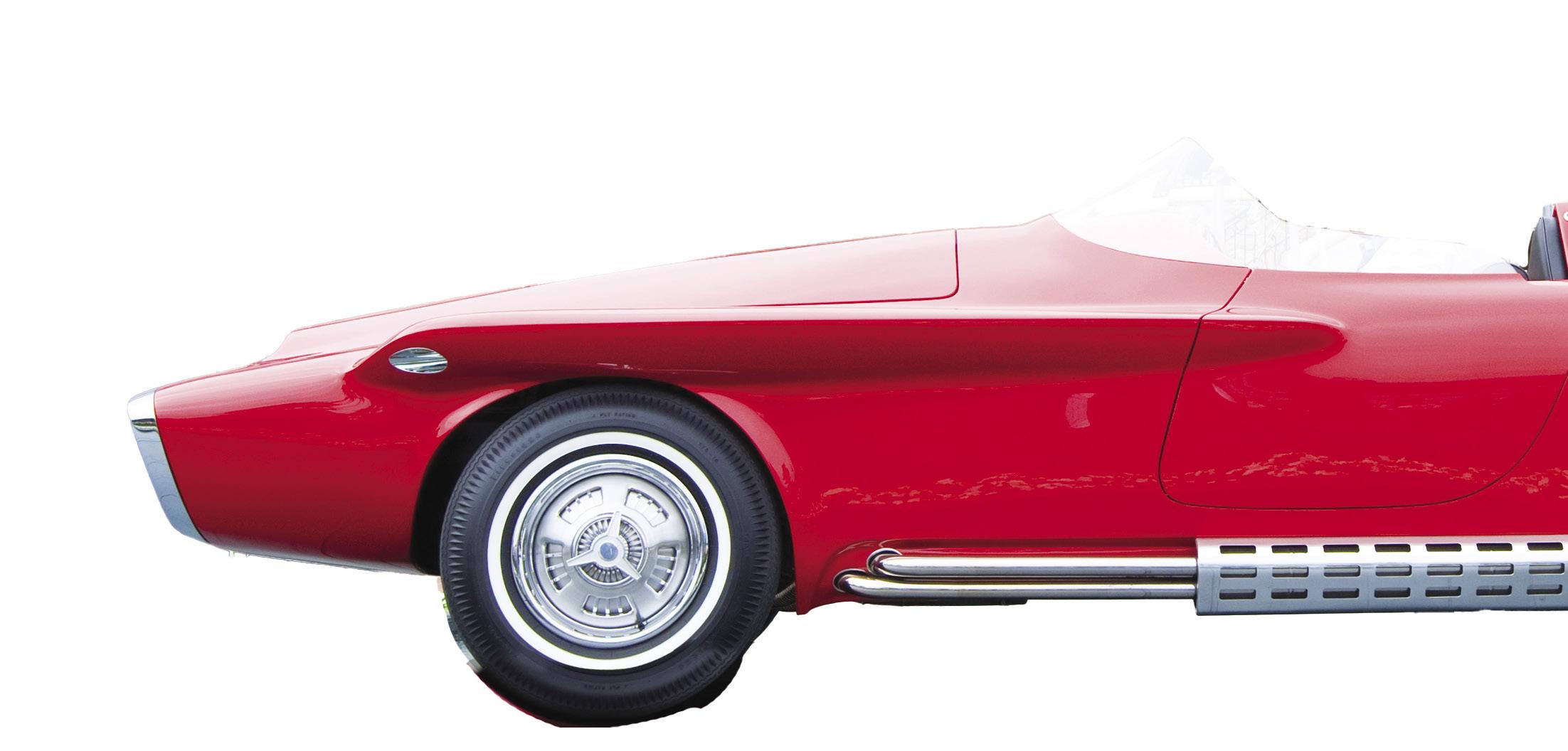

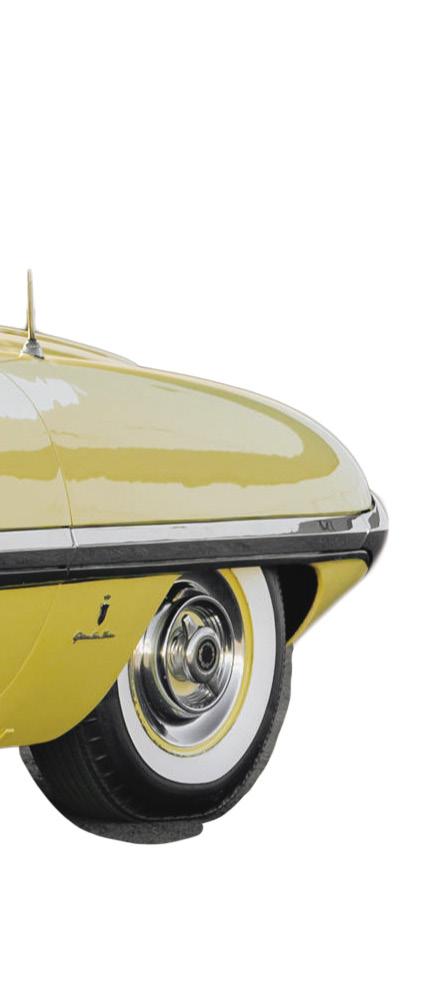
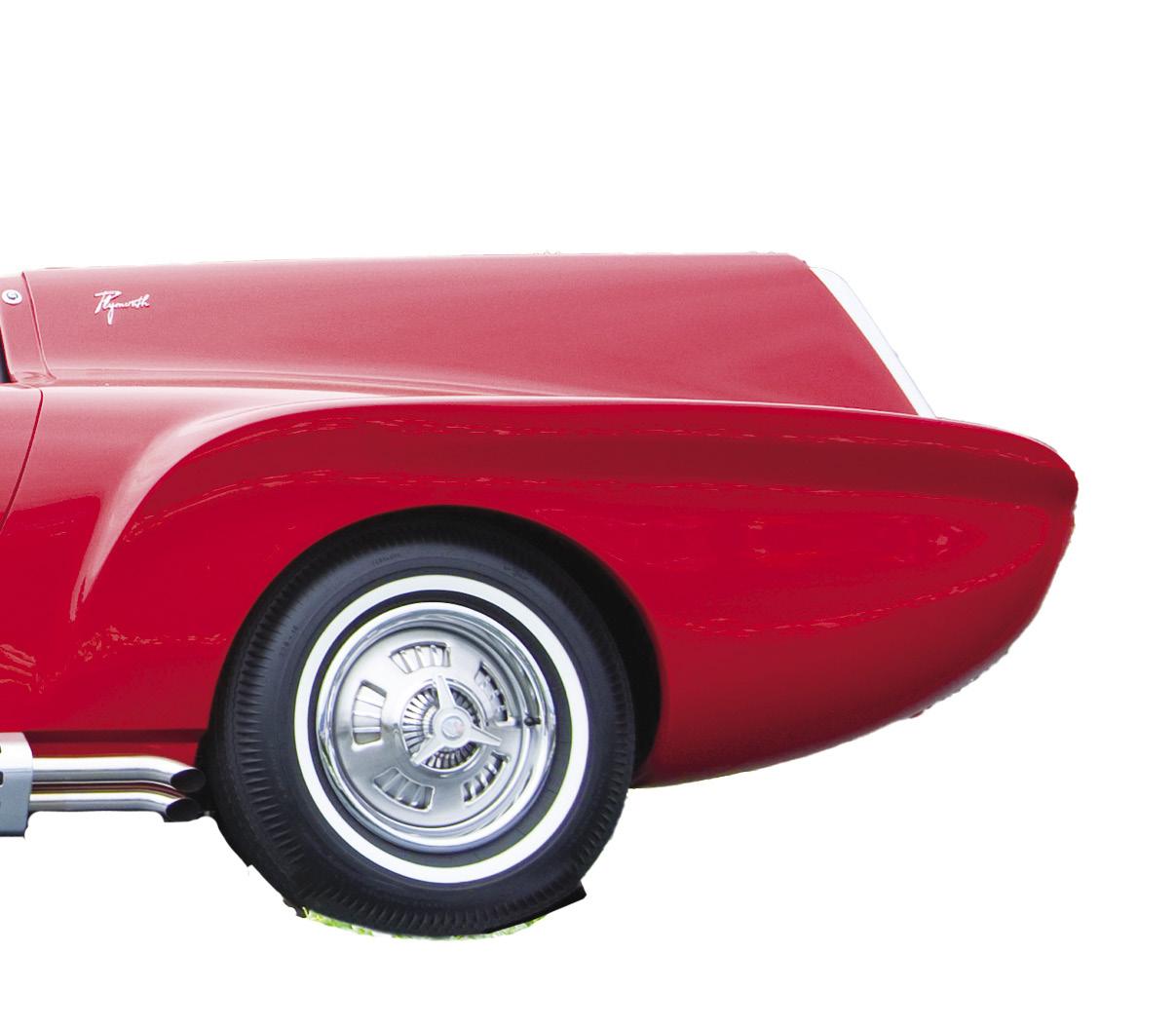
BY PETER M. LARSEN

exTo many, Virgil Exner is the American car designer most often identified with the great tailfins that adorned American cars in the 1950s. While Exner, or Ex as he preferred to be called, certainly made the tailfin an integral part of many of his famous designs and promoted the fin as an aerodynamic aid that stabilized an automobile at speed, this is a one-dimensional assessment. Virgil Exner was one of the most influential, original, and lucid designers America has fostered. He was a complex, worldly, and diplomatic man who had much more than a single arrow in his quiver.
By the age of 26, he was chief stylist at Pontiac. At 29 he was chief styling engineer at Studebaker. In 1949, just as he was turning 40, Virgil Exner was brought in by Chrysler President K. T. Keller and made chief of advanced styling at Highland Park, the Chrysler headquarters in Detroit. There, he would revolutionize the look of American cars—first in 1955 with the 100 Million Dollar Look, and again in 1957 with the Forward Look. He was a daring and creative virtuoso, and no one had a better understanding of the magic of automotive fantasy.
Above: Virgil Exner has left a deep imprint on American car design.
Previous spread (from top): The 1965 Bugatti Type 101C-X, the 1957 Chrysler Super Dart 400, and the 1960 Plymouth XNR showcase the sleek silhouettes, creased lines and tailfins that were among his hallmarks.
Exner’s mid-1950s designs welcomed the Space Age with prominent grilles and smooth, flowing lines.

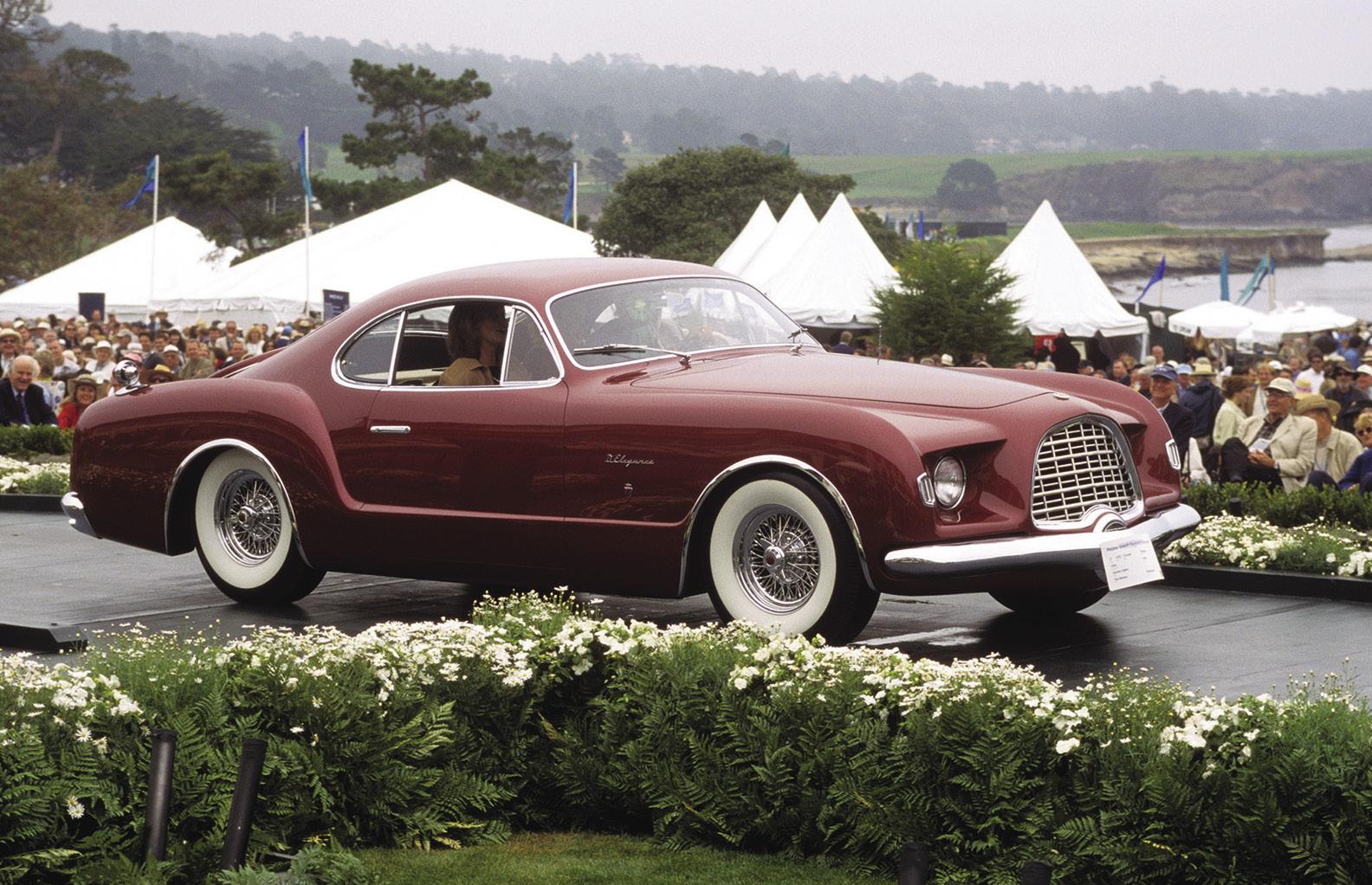
The d’Elegance was an early Exner “Idea Car.” Ghia copied the side treatment and greenhouse to create the Karmann Ghia.
This four-passenger 1953 Chrysler Thomas Special was the first of a short run of 18 cars based on the two-passenger 1952 Chrysler Styling Special (seen on the next page).

The original two-passenger Chrysler Styling Special that debuted at the 1952 Paris Auto Salon reprised the semi-fastback roofline of the d’Elegance but featured a simplified and cleaner side treatment.


Beginning in late 1951, a series of one-off Idea Cars on Chrysler, DeSoto, Dodge, and Plymouth platforms were created, where Ex showed himself to be a master of proportion and mass when designing a body, as well as something of a wizard when creating a lithe silhouette and a breathtaking side treatment. And the names of these Idea Cars were as exciting as the cars themselves, redolent as they were of 1950s aspirations: Flight Sweep, Firearrow, Firebomb, Explorer, Adventurer, and Falcon—a name so good it was eventually used by Ford.
These one-off prototypes, these Idea Cars, were meant for car shows, but they were not called Dream Cars precisely because they were built on existing and fully functional Chrysler Corporation underpinnings. They accelerated, drove, steered, braked, and stopped. In other words, they were not like the tantalizing but often static mock-ups or
Chrysler built three Parade Phantoms in 1952 and later reworked all three to showcase the new “Forward Look.”
figments of the imagination that came out of the styling studios of GM and Ford. They were real automobiles that, at least in theory, could enter into production if the money for tooling were forthcoming.
First came the Chrysler K-310, built on a Saratoga platform powered by a 331 CID FirePower Hemi V8 with a purported 310 horsepower against the standard 180 hp output. Some said the engine was like any other production Hemi—while others were adamant that it had been extensively modified. Unfortunately, as the car is lost, this debate is unlikely to be cleared up. More importantly, as the car was first shown on November 5, 1951, resplendent in dark blue over peacock blue, with its low stance, muscular proportions, judicious use of chrome and lovely wire wheels, it was an ultra-modern yet classic four-passenger coupe that heralded a new era at Chrysler.
The Falcon was designed to compete with Chevrolet’s Corvette and Ford’s first Thunderbird but never made it to production.

Important styling cues that Exner would use repeatedly on future one-off and production designs included a prominent grille, fully exposed wheels, the now famous gunsight taillamps, and a spare tire outlined on the trunk lid which was later popularized as a so-called donut trunk. In mid-January 1952, Ex gave a paper on international automotive styling to the Society of Automotive Engineers, using the K-310 as his springboard. In his talk, he made the following seminal remarks about the wheel, which he saw as a central element of automotive design: The wheel, one of man’s oldest and most vital inventions, is also one of the prettiest and most beautiful designs. It is...the essence of functional automotive design.Why attempt to hide it?
Why indeed? Large, exposed wheels, preferably wires, became a trademark Exner styling element on Idea Cars and top-of-the-line Chrysler production cars. In 1952, the K-310 spawned a convertible version called the C-200, equally enticing in black over light green, but also a lost car. Crucially, these two Idea Cars ushered in Chrysler’s rewarding cooperation with the Carrozzeria Ghia in Turin, which would last into the 1960s.
Plans for creating one-off prototypes had been bandied about from the moment Ex entered the design studios at Chrysler. Secrecy was needed, and if styling prototypes were to be built abroad, they would be well-hidden from prying eyes. At the 1950 Turin Motor Show, Keller approached Ghia and Pinin Farina, asking them each to manufacture an automobile for Chrysler in order to demonstrate their workmanship and coachbuilding skills.
Later that year, Mario Boano, who had taken over Ghia, and Luigi Segre, his head of design, traveled to Detroit to meet Keller and Ex, with Paul Farago, an Italian-American car dealer acting as interpreter. All got along well, especially Segre and Ex, who traveled to Turin to look at the Ghia facility. While Pinin Farina’s bid for the Chrysler work is not recorded, Ghia came up with the so-called Plymouth XX-500, which, while ungainly, showed superior workmanship. It was billed to Chrysler at the unbelievably low price of $10,000, against a projected cost of $80,000 to $125,000 to have similar work done in the United States. It was no surprise then that Ghia won the contract, and in early 1951, the agreement was signed that gave birth to the K-310.
Over the next ten years, Ghia would make more than two dozen Idea Cars. They were shown to widespread acclaim and received copious positive press coverage. Yet it remained hard work for Ex to push his vivid styling ideas, even if they were made beautifully real by Ghia, to mass production in the U.S. Extreme design conservatism reigned at Chrysler, and the look of its products was in the hands of engineering. The futuristic Chrysler Airflow had been introduced in 1934 and nearly cost the company its life. Almost 20 years later, the smell of burnt fingers still lingered at Highland Park, and engineering had little intention of relinquishing its power over the status quo.
While the Idea Car designs would not go into production, Chrysler’s Vice President of exports C. B. Thomas managed to get a tiny and bespoke manufacture of
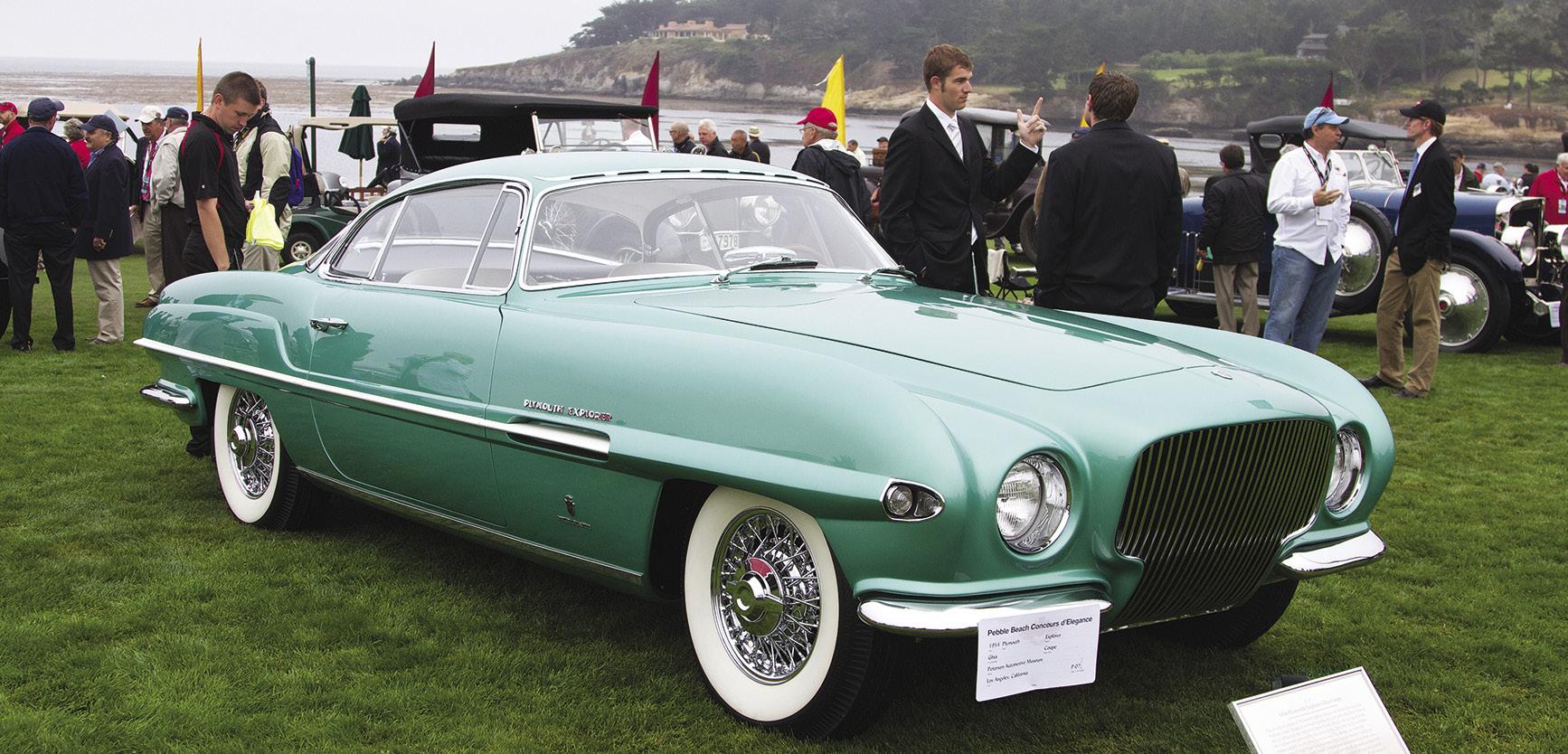

Exner-designed bodies up and running. Thomas contended that there was a wealthy clientele in Europe who would purchase custom-bodied Chryslers, not unlike the way special coachwork had been mounted on American chassis by a number of French carrossiers in the 1930s. In 1936 and 1937, Pourtout had clothed several Chrysler chassis, while Figoni et Falaschi bodied no fewer than 30 in that period. Thomas was authorized to commission so-called Styling Specials. They were not to be shown as Chrysler Idea Cars, so the designs were “moonlighted” by Ex and a few colleagues in his basement and then modeled at Highland Park.
The first of these, called the Chrysler SS (for Styling Special), was a three-passenger fastback with a low roofline built on a shortened 119-inch New Yorker chassis, which was displayed at the Paris Salon de l’Automobile in
Eugene Casaroll licensed Exner’s design for the Dodge Firearrow IV to create the ritzy Dual-Ghia Convertible, a favorite of the Hollywood set.
October 1952. A tasteful design, it featured the open wheel arches first seen on the K-310, a smooth and clean body profile, fenders that flowed from bumper to bumper with a tasteful kick-up that imitated the rear fender curve, and a trapezoidal grille that was to become a signature style element. A second car followed in early 1953, an elegant four-passenger notchback that was built for Thomas himself after Ex had met him and agreed to rework the design.
After that, approximately eighteen of these slightly roomier bodies were made by Ghia in late 1952 and into 1953. These became known as Thomas Specials, all built on a standard 125-inch New Yorker wheelbase and powered by an equally standard FirePower V8. Most of the cars were sold in France via the Société France Motors, although a few went to the Chrysler subsidiary in Antwerp. None were sold in America, and they were not publicized in the States.
Ghia then continued to develop and modernize Ex’s design through 1955, naming the model the Ghia GS-1, somehow forgetting to give credit where credit was due. Exner was magnanimous about it; his creativity was so great, he could afford to be generous.
Exner hit his stride in 1953 with the Chrysler d’Elegance Idea Car, a sporty and elegant short-wheelbase twopassenger rethink of the Chrysler SS that also reprised elements from the K-310, such as the open wheel arches, large wire wheels, donut trunk lid, and gunsight taillights, while the grille was a more purposeful reworking of the trapezoidal front intake from the Specials—a shape that would be repeated on several Idea Cars before finally finding its way onto 1957 production Chryslers.
While the d’Elegance remained a one-off, it spawned a mass-produced car on a Volkswagen platform for which Exner again received no credit—namely the VW Type 14 Karmann Ghia, of which 443,466 coupes and convertibles were built. Ex was magnanimous about that too. He is reported to have said, “I had this car, the d’Elegance, being

1960
PLYMOUTH XNR
The XNR was a radical asymmetrical wedge whose styling cues filtered into the 1960 Plymouth Valiant production cars.


1957 CHRYSLER SUPER DART 400 COUPE
The Super Dart took the revolutionary longer, lower, and wider stance of the 1957 Forward Look to the next level.

built over in Torino in the Ghia shops. Of course, we had prepared a very detailed plaster model for them to work from. At the time, they were working on prototypes for VW for what would become the Karmann Ghia. They had done two or three and Karmann was still not satisfied. This plaster model of mine came in, and lo and behold, when the Karmann Ghia came out, it was scaled right down to the fraction.”
After that, things happened quickly. The d’Elegance was followed in quick succession by Idea Cars earmarked for various Chrysler divisions. The Dodge Firearrow I—a low, sleek, and rounded two-passenger roadster with an oval grille, frameless windshield, and a thick metallized beltline that encased the body—saw the light of day as a mock-up in 1953. It became a running car as the Firearrow II in mid-1954 and was joined late that year by a sleek Firearrow III coupe version. Then came a four-passenger Firearrow convertible, which captured the heart of Eugene Casaroll, owner of Dual Motors, who negotiated the rights to put the design into limited production. Paul Farago re-engineered the car, which became the 1955 Dodge Firebomb, which then formed the basis for the productionized Dual-Ghia, of which 117 were built between 1956 and 1958.
DeSoto received the Adventurer I Idea Car in 1953, an exceptionally pretty two-door coupe that served as Ex’s daily driver and was one of his favorite designs, synthesizing many of his early styling cues. The 1954 Adventurer II coupe showed Ex’s design language evolving
quickly into a longer, lower, wider, and sleeker expression, with fuselage-like rear fenders that ended in a taillight reminiscent of a jet fighter exhaust. Alert as always, Mario Boano copied the overall body proportion and especially the rear-end treatment for his FIAT 8V Supersonic design. Not to be left out, Plymouth was given the 1954 Explorer, with a design similar to the Adventurer II, but on a shorter wheelbase. This was followed in 1955 by the Chrysler Flight Sweep I and II, a coupe and a convertible that premiered hooded headlights, backswept front fenders— and, importantly, fins. Not overly large ones, but fins nevertheless.
Most beautiful in this period was the 1955 Falcon, a meaty and powerful looking yet so very graceful two-passenger sports roadster built on a shortened Chrysler 300 platform. With a hewn-out-of-a-single-block look to the body, the front featured a large, forward-slanted grille flanked by inset headlights, while fins with vertical chromed taillight inserts completed the design. The car was slated for production as a Corvette and Thunderbird competitor when the project was canceled by the still-powerful conservatives on the Chrysler campus. Only three Falcons were built—and Ex took one out for his personal use, parting with his Adventurer I.
On July 24, 1956, Virgil Exner suffered a massive heart attack. Years of living on cigarettes and coffee while constantly battling the powers that be had taken their toll. He was away for five months and returned to a different

The Duesenberg Model D Revival, built on an Imperial chassis and priced at $19,500, never made it to production. Only the prototype was built.
The Bugatti Revival design was based on the last remaining Bugatti 101 chassis, purchased by Exner for himself.

Chrysler, where Bill Schmidt had handled Styling in his absence and now found it difficult to relinquish power. The revolutionary 1957 Forward Look production cars had gotten off to a flying start but were soon plagued by a slew of quality issues that saw 1958 sales sink alarmingly. It was the beginning of the end for Ex, and while there were more Idea Cars, they would not be as cohesive as his 1951 to 1957 efforts.
A beacon of light was the 1957 Chrysler Dart coupe, which had been designed by Ex before his illness: a wedge-shaped aerodynamic design study with a retractable hardtop, an oval inset grille, a rounded side treatment that owed much to the Dodge Firearrows, and large, slick, pointed fins that began at the B-pillar. The car was wind-tunnel tested, and according to Ex, proved that the fins did act as stabilizers at speed—albeit only above 80 mph! After evaluation by Chrysler, the car was sent back to Ghia and given a conventional soft top, thereby becoming the Dart II. It was shown as such at the 1957 Turin Motor Show, and after yet another reworking in 1958 where the fins were shaved a bit, the car turned into the Dodge Diablo.
The Plymouth XNR Idea Car, short for eXNeR, appeared in 1961, the year Ex was effectively let go at Chrysler. A study in asymmetrical design, it showed that Ex’s creativity remained intact. A spiritual successor to the Falcon, it was a daring two-passenger roadster, powered by a Valiant slant-six engine tuned to a purported 250 hp, which made the lightweight XNR a very fast car. It lapped in excess of 150 mph on the Chrysler proving grounds and remained stable at high speed due to its large single fin, which was an extension of the headrest behind the driver. Ex lobbied to have it produced but was denied. His star was fading, embroiled as he was in the backlash from the 1958 Chrysler sales slump for which he was wrongly held responsible, as well as in the catastrophic crash program to downsize Chrysler’s 1962 models.
Ex left Chrysler in 1964 and set up his own design consultancy named Virgil M. Exner Inc. In the following years he created a number of breathtaking automobile designs that were heavily influenced by Classic Era proportions and aesthetics: long hoods, short rear decks, exposed wheels, and hints at prewar fender lines. Ex called
EXNER

them Revival Cars—concepts to illustrate what cars would look like if certain defunct makers were still in business. The first designs were presented in an article in the December 1963 issue of Esquire and included a Stutz and a Packard two-door coupe, a Duesenberg dual-cowl phaeton, and a Mercer roadster. Later additions to the line were a Pierce-Arrow four-door sedan, a Jordan Playboy hardtop, and a Bugatti roadster. All were made into a 1966 line of plastic model kits by Renwal that have a cult following, even today.
The Mercer was built in 1965 by the Carrozzeria SibonaBasano in Turin, Italy, as a one-off on a stretched Shelby Cobra chassis, thereby becoming the Mercer Cobra, while the Bugatti was constructed on the last existing Type 101 chassis, which Ex had purchased for himself. The chassis was shortened and bodied by Ghia in 1965 for Ex’s personal use.
A single prototype was built by Ghia in 1966 for a planned Duesenberg revival, with the involvement of Fred Duesenberg. It was a very large four-door sedan on a 1966 Imperial platform and shared nothing with the Duesenberg design Ex had presented in 1963. Classic elements abounded with a prominent modernized Duesenberg radiator shell, twin-blade bumpers, and classic fender accents to the wheel arches. The car received massive publicity, but the project fell apart financially, and the car remained a one-off.
The Stutz Blackhawk was the only Revival Car to enter into production. Two prototypes were made in 1969 by the Carrozzeria Padane in Modena on a Pontiac Grand Prix
The Stutz Blackhawk Revival went into production in 1971, based on a Pontiac Grand Prix platform, and Elvis Presley famously bought the prototype.
platform, and the car went into production in 1971. Only the first 25 units remained true to Ex’s original design brief, which was a paragon of Classic Era proportions with an upright radiator shell, a very long hood, an ultra-short deck, a split windshield, a distinct fender line along the side profile, a greenhouse that ended over the rear axle line, and the semi-horizontal continental spare tire mounted in a deeply curved indentation in the trunk lid. Unfortunately, the excesses and design deviations of subsequent Stutz models have overshadowed the strangely fascinating beauty and elegance of the originals.
While these Revival designs have been unfairly maligned in some quarters, they nevertheless exerted a massive impact on American car styling from the late 1960s through the early 1980s. Without them, there would have been no Lincoln Continentals Mark III, IV, and V. No 1967 Cadillac Eldorado. The list goes on, celebrated in the dominance of the personal luxury segment in the ’70s, as well as countless neoclassic designs and conversions built by small-volume makers into the ’90s.
Few designers have left such deep marks on mid-twentiethcentury car design as did Virgil Exner. He has gone down in history—unfairly—as a sort of high priest of the tailfin. But that’s a legacy that ignores his great and varied talent, his many stirring designs, his at-times-intoxicating vision, his widespread influence, and not least, his sure hand and great taste. It is time the world’s assessment of Virgil M. Exner is set right.
The Author wishes to thank Christopher Hoffman and Mark Taylor for their assistance in the preparation of this article



No institution has had a greater impact on automotive design than ArtCenter.
From the 1963 Corvette Stingray to the 2027 Slate truck—and countless innovative vehicles along the way—our alumni have created some of the road’s most iconic machines.



And that’s just for starters. Whether it’s the shoes on your feet, the phone in your hands, the games you play or the movies you love, ArtCenter influences the world around you.
If you’re driven to create, there is only one destination.

A-01 1901 De Dion-Bouton Motorette New York Vis-à-Vis
A-02* 1903 Mercedes Simplex 60 HP J. Rothschild et Fils
Stephen & Angi Samuels, Columbia, South Carolina
Rob Walton, Scottsdale, Arizona Roi des Belges
A-03 1907 Rolls-Royce Silver Ghost Barker
Seven-Passenger Tourer
A-04 1908 Welch Model 4L Seven-Passenger Touring
A-05 1911 Rolls-Royce Silver Ghost Lawton Tourer
A-06 1912 Packard 30 Four Brougham
A-07 1915 Packard 3-38 Six Five-Passenger Phaeton
B-01 1916 Stutz 4C Bearcat
B-02 1917 Packard 2-25 Twin Six Runabout
B-03* 1918 Pierce-Arrow 48 Coupe
B-04 1920 Pierce-Arrow 51 Six-Passenger Touring
B-05 1923 Pierce-Arrow 33 Four-Passenger Landaulet
B-06 1923 Rolls-Royce 20 HP Barker Tourer
B-07 1927 duPont Model E Touring
B-08 1928 Lincoln L Dietrich Five-Passenger Sedan
C1-01 1930 Cadillac 452 Murphy Convertible Sedan
C1-02 1930–31 Cord L-29 Brooks Stevens Custom Speedster
C1-03 1931 Pierce-Arrow 42 Convertible Coupe
C1-04 1933 Pierce-Arrow 1236 LeBaron Convertible Coupe
C1-05 1934 Pierce-Arrow 840A Convertible Coupe
C1-06 1935 Auburn 851 Speedster
*Exhibit Only
Anne Brockinton Lee / The Lee Collection, Sparks, Nevada
Bob & Linda Welch,West Vancouver, Canada
Bradley & Andrew Greene, Portola Valley, California
John Bentley, Harrogate, United Kingdom
The Collection of Howard A Schaevitz, Edgewater Park, New Jersey
Wynn McCaw, Bellevue,Washington
Robert & Linda Mollno, San Marino, California
Dan Haynes, Lodi, California
Ross & Beth Myers, Boyertown, Pennsylvania
Benjamin Oakes & James Payne, Ramona, California
Ralph Bünger, Sanlúcar la Mayor, Spain
Museu Carde, Campos do Jordão, Brazil
Leland F. Powels, Cambria, California
John D. Groendyke, Enid, Oklahoma
Brian Cunat, McHenry, Illinois
Robert Morris, Naples, Florida
John Allen, Minneapolis, Minnesota
Bob Jacobsen, Los Altos, California
Herman-Bosman Brandt, Paarl, South Africa
C2-01 1929 Lincoln L Rollston
All Weather Non-Collapsible Brougham
C2-02 1930 Packard 745-C Deluxe Eight LeBaron
All Weather Cabriolet
C2-03 1931 Ruxton Edward G. Budd Sedan
C2-04 1934 Packard 1107 Twelve Coupe
C2-05 1934 Packard 1108 Twelve Seven-Passenger Sedan
C2-06 1937 Cord 812 Armchair Beverly
C2-07 1937 Lincoln K LeBaron Coupe
D-01 1926 Packard 243 Eight Rollston Convertible Roadster
D-02 1932 Packard 905 Twin Six Coupe Roadster
D-03 1934 Packard 1107 Twelve Coupe Roadster
D-04 1937 Packard 1507 Twelve Coupe Roadster
D-05 1938 Packard 1607 Twelve Convertible Coupe
D-06 1938 Packard 1608 Twelve Convertible Sedan
D-07 1940 Packard 1807 Custom Super Eight
Mike Anderson, Elkhart, Indiana
Richard & Laura Azzolino, San Francisco, California
Rich & Karen Atwell, Fredericksburg, Texas
Donald Ghareeb,Vestavia Hills, Alabama
Gary & Amy Marchetti,Vista, California
Rick Zeiger & Ron Verschoor, Beverly Hills, California
James Farley, Birmingham, Michigan
Rob & Jeannie Hilarides,Visalia, California
Ross & Beth Myers, Boyertown, Pennsylvania
Jonathan Santomauro, Phoenixville, Pennsylvania
Bryan Perkins, Greenwood, Indiana
The JBS Collection LLC / Jack Boyd Smith Jr., Elkhart, Indiana
Bob Tiffin, Red Bay, Alabama
The Sport Clips Collection, Georgetown, Texas Darrin Convertible Sedan
E1-01* 1931 Chrysler Imperial CG LeBaron Dual Cowl Phaeton
E1-02* 1932 Chrysler Imperial CH Speedster
E1-03 1933 Chrysler Imperial CL LeBaron Phaeton
E1-04 1934 Chrysler CU Airflow Brougham
E1-05 1937 Chrysler Custom Imperial CW Airflow
General William Lyon Family, Newport Beach, California
Sam & Emily Mann, Englewood, New Jersey
Dave Kane & Donald Ghareeb, Bernardsville, New Jersey
Peter Landsbergen, Los Altos, California
Stephen & Susan Babinsky, Lebanon, New Jersey LeBaron Limousine
E1-06 1939 Chrysler Custom Imperial C-24 Derham Touring Phaeton John Allen, Minneapolis, Minnesota
E1-07* 1941 Chrysler Thunderbolt LeBaron Convertible
E1-08* 1941 Chrysler Newport LeBaron Dual Cown Phaeton
Roger Willbanks Family, Denver, Colorado
National Automobile Museum, Reno, Nevada
E2-01 1941 Chrysler Town and Country Station Wagon
E2-02 1942 Chrysler Town and Country Station Wagon
E2-03 1947 Chrysler Town and Country Sedan
E2-04 1948 Chrysler Town and Country Convertible
E2-05 1948 Chrysler Town and Country Convertible
E2-06 1949 Chrysler Town and Country Convertible
E2-07* 1950 Chrysler Town and Country Coupe
F-01 1929 Invicta Type A Carlton Tourer
F-02* 1930 Invicta 4½ Litre S Type Vanden Plas Sports Tourer
F-03 1931 Invicta 4½ Litre S Type Weymann Open Coupé
F-04 1931 Invicta 4½ Litre S Type Carbodies Tourer
F-05 1931 Invicta 4½ Litre S Type Carbodies Coupé
Michael & Barbara Malamut/Malamut Auto Museum, Thousand Oaks, California
Valerie & Aaron Weiss, San Marino, California
Alan & Sandi McEwan, Redmond,Washington
Academy of Art University, San Francisco, California
The Keller Collection at the Pyramids, Petaluma, California
James Mesloh, Garden City, New York
The NB Center for American Automotive Heritage, Allentown, Pennsylvania
Ted Delphia, Livonia, Michigan
Alan Brown, London, United Kingdom
Andrew Pisker, Principality of Monaco
Steve & Marilee Hamilton,Washoe Valley, Nevada
Ted Reimel,Wayne, Pennsylvania
F-06 1931 Invicta 4½ Litre S Type Carbodies Long Tail Renaat Declerck, Desselgem, Belgium
F-07 1931 Invicta 4½ Litre S Type Carbodies Tourer
F-08* 1932 Invicta 4½ Litre S Type Carbodies Tourer
F-09 1932 Invicta 4½ Litre S Type Carbodies Tourer
Shaun Lynn, Great Dunmow, United Kingdom
William E. (Chip) Connor, Hong Kong
Steve & Marilee Hamilton,Washoe Valley, Nevada
F-10 1933 Invicta 4½ Litre S Type Corsica Drophead Coupé SBH, Riffa, Bahrain
F-11 1934 Invicta 4½ Litre S Type Carbodies Tourer
Ross & Beth Myers, Perkiomenville, Pennsylvania
G-01 1929 Duesenberg J Weymann American St. Cloud Sport Sedan Donald Ghareeb,Vestavia Hills, Alabama
G-02 1930 Duesenberg J Murphy Convertible Berline
Howard & Rosalind Kroplick, East Hills, New York
G-03* 1932 Duesenberg J Rollston Torpedo Berline Du Coing Family, Lake Havasu City, Arizona
G-04 1933 Duesenberg J Rollston Convertible Victoria McKeel & Soon Hagerty, Traverse City, Michigan
*Exhibit Only
H1-01 1926 Rolls-Royce Silver Ghost Brewster Playboy Convertible Scott J. Tepper & Tallulah Tepper, Calabasas, California
H1-02 1928 Rolls-Royce Phantom I Brewster Derby Phaeton Jon Leimkuehler, Pittsburgh, Pennsylvania
H1-03 1931 Rolls-Royce 20/25 HP Worblaufen Drophead Coupé Pyle Collection, Newport Beach, California
H1-04 1932 Rolls-Royce 20/25 HP Gurney Nutting Saloon Forrest McClain, Atlanta, Georgia
H1-05 1933 Rolls-Royce Phantom II Brewster Henley Roadster Lehrman Collection, Palm Beach, Florida
H1-06 1935 Rolls-Royce Phantom II Continental Victor Muller, Sol de Mallorca, Spain Gurney Nutting Sedanca Drophead Coupé
H2-01 1929 Rolls-Royce Phantom I Brewster Ascot Phaeton Nicholas & Shelley Schorsch of the Audrain Collection, Newport, Rhode Island
H2-02 1934 Rolls-Royce Phantom II Continental Peter Reynolds, Cardiff, Wales Gurney Nutting Sedanca Drophead Coupé
H2-03 1937 Rolls-Royce Phantom III H.J. Mulliner Sedanca de Ville The Nethercutt Collection, Sylmar, California
H2-04* 1954 Rolls-Royce Phantom IV Hooper Landaulet Stephen Brauer, St. Louis, Missouri
H2-05 1961 Rolls-Royce Phantom V James Young Touring Sedanca Stephen Brauer, St. Louis, Missouri
H2-06 1972 Rolls-Royce Phantom VI Mulliner Park Ward Jim George/Pete DeAngelo, Shelby Township, Michigan State Landaulette
I-01 1928 Mercedes-Benz 680 S Saoutchik
David & Teresa Disiere, Southlake, Texas Four-Passenger Torpedo Sport
I-02 1934 Mercedes-Benz 500 K Mayfair Four-Passenger Tourer Ted Reimel,Wayne, Pennsylvania
I-03 1935 Mercedes-Benz 500 K Roadster Tom Maoli, Mendham, New Jersey
I-04 1939 Mercedes-Benz 540 K Special Roadster
J-1 EUROPEAN CLASSIC EARLY
The Keller Collection at the Pyramids, Petaluma, California
J1-01 1923 Hispano-Suiza H6B Million-Guiet Touring Kuettel Family, Soquel, California
J1-02 1924 Hispano-Suiza H6C Nieuport-Astra Torpedo
J1-03 1924 Hispano-Suiza H6C Hooper Saloon Limousine
J1-04 1925 Amilcar CGS Charles Duval Grand Sport
J1-05 1928 Isotta Fraschini Tipo 8A SS Cesare Sala
Guida Interna Super Sport
J1-06 1928 Bentley 6½ Litre Motor Bodies of Newcastle
Sunshine Coupé
J1-07 1930 Bentley Speed Six H.J. Mulliner Drophead Coupé
Penny & Lee Anderson Sr., Naples, Florida
Simon Kidston, Milan, Italy
Tom Hale,Wilton, Connecticut
Museu Carde, Campos do Jordão, Brazil
Rich & Karen Atwell, Fredericksburg, Texas
The Hon. Sir Michael Kadoorie, Hong Kong
J2-01 1935 Aston Martin Mark II Bertelli Sports Saloon
J2-02 1936 Bugatti Type 57 Stelvio
J2-03 1937 Bugatti Type 57 Atalante Rolltop Coupé
J2-04 1939 Bentley Mark V Corniche
J2-05 1939 BMW 327/28 Sports Cabriolet
J2-06 1939 Maybach SW38 Spohn Sport Zweisitzer
L1-01 1906 White Model F Roi des Belges Touring
L1-02 1910 Renault BZ Moore & Munger Town Car
L1-03 1916 Pierce-Arrow 38-C-4 Five-Passenger Touring
L1-04 1923 SPA Tipo 23 Garavini Coupé de Ville
L1-05 1925 Locomobile Model 48 Boattail Roadster
L1-06 1927 Bentley 4½ Litre Vanden Plas Sports 4-Seater
Neil Pickstone, Stockport, United Kingdom
Carolyn & Craig Jackson, Scottsdale, Arizona
The Pearl Collection, Zug, Switzerland
Bentley Motors, Crewe, United Kingdom
Kim Pierce, Paradise Valley, Arizona
Dana & Patti Mecum, Geneva Lake,Wisconsin
Joe & Janice Conzonire, San Marino, California
Peter & Monica Kumar, Astoria, New York
Alan Clendenen, Corona del Mar, California
The Dr. Marco Gastaldi Collection, Monte Carlo, Monaco
Bill Passey,Watsonville, California
Richard Coar, Reydon, United Kingdom
L1-07 1930 Alfa Romeo 6C 1750 Gran Sport Corsica Spider P. Lee, Studio City, California
L-2 POSTWAR PRESERVATION EARLY
L2-01* 1942 Chrysler Town and Country Station Wagon Hageman Family, Ojai, California
L2-02 1948 Delahaye 135 MS Chapron Vedette Cabriolet
L2-03 1950 Jaguar XK120 Open Two-Seater Sports
L2-04 1952 Jaguar C-type
L2-05 1955 Mercedes-Benz 300 S Sunroof Coupe
L2-06 1955 Porsche 356 1600 Super Reutter Speedster
L2-07 1959 Mercedes-Benz 300 SL Roadster
L2-08 1962 Bentley S2 Continental H.J. Mulliner Coupé
Marc Djunbushian,Wanchai, Hong Kong
Gerald Tucker, Palo Alto, California
Michael Dacre, Solihull, United Kingdom
Craig Kappel & Meg McCarthy, Orlando, Florida
Nicholas & Shelley Schorsch of the Audrain Collection, Newport, Rhode Island
Jo-Ann & Brian Obergfell, Brooklyn, New York
Private Collector Jonathan Wood Ltd, Little Sampford, United Kingdom
*Exhibit Only
L3-01 1962 AC Ace Bristol Roadster
L3-02 1962 Dual Motors Ghia L6.4 Coupe
L3-03 1963 Mercedes-Benz 300 SL Roadster
Robin Grove, Parump, Nevada
The Singleton Collection, Newport Beach, California
Eric Blumencranz, Sands Point, New York
L3-04 1965 Ferrari 275 GTB Short Nose Pininfarina Coupe Roger Hoffmann, Inverness, California
L3-05 1967 Porsche 911S Coupe
L3-06* 1968 Ferrari 330 GTC Pininfarina Coupe
William E. (Chip) Connor, Hong Kong
The Ely Family, Palo Alto, California
L3-07 1968 Fiat Dino Pininfarina Berlinetta Aerodinamica Lee Hower,Warren, Rhode Island
L3-08 1968 Serenissima GT Ghia Coupe
L3-09 1973 Ferrari Daytona Spyder
Javier Quiros, San Jose, Costa Rica
Evan Metropoulos, Key Biscayne, Florida
M1-01 1951 Ferrari 340 America Touring Barchetta Nikolay Miroshnichenko, Almaty, Kazakhstan
M1-03 1957 Ferrari 250 GT Tour de France Scaglietti Berlinetta Rob Kauffman, RK Motors, Charlotte, North Carolina
M1-05* 1958 Ferrari 250 Testa Rossa Scaglietti Spyder
M1-06 1958 Ferrari 250 GT Tour de France Scaglietti Berlinetta
Private Collection, Essex, Massachusetts
Private Collection, Neenah,Wisconsin
M1-07 1959 Ferrari 250 GT Tour de France Scaglietti Berlinetta Stephen Bruno, Boca Raton, Florida
M1-08 1964 Ferrari 250 LM Scaglietti Berlinetta
M1-09 1964 Ferrari 250 LM Scaglietti Berlinetta
Peter & Jan Harburg, Brisbane, Australia
Private Collection, Milan, Italy
M2-01 1952 Ferrari 342/375 America Pinin Farina Cabriolet Art Zafiropoulo, Atherton, California
M2-02 1956 Ferrari 410 Superamerica Pinin Farina Coupe Al & Mary Barbour, Sewickley, Pennsylvania
M2-03 1957 Ferrari 250 GT Prince Bertil Speciale Lee & Joan Herrington, Bow, New Hampshire Pinin Farina Coupe
M2-04 1959 Ferrari 250 GT Pinin Farina Cabriolet Series 1 Roy & Janice Brod, Lancaster, Pennsylvania
M2-05 1959 Ferrari 250 GT Scaglietti Spyder California Joe Novogratz, Excelsior, Minnesota
M2-06 1966 Ferrari 275 GTS Pininfarina Spyder
M2-07 1967 Ferrari 275 GTB/4 Scaglietti Berlinetta
M2-08 1967 Ferrari 275 GTB/4 Scaglietti Berlinetta
Christopher Stahl, Bonn, Germany
William H. & Cheryl K. Swanson, Pebble Beach, California
Tom Hartley Jnr., Swadlincote, United Kingdom
O1-01 1953 Siata 208 CS Balbo Coupé
O1-02 1957 BMW 507 Roadster
O1-03 1957 Mercedes-Benz 300 SL Roadster
O1-04 1961 Aston Martin DB4GT Zagato Coupé
O1-05 1965 Lamborghini 350 GT Touring Coupé
O1-06 1967 Bizzarrini 5300 GT Strada Berlinetta
O1-07 1971 Lamborghini Miura P400 SV Bertone Coupé
O1-08 1971 Maserati Ghibli 4.9 SS Ghia Spyder
O2-01 1949 Aston Martin DB2 Coupé
O2-02 1953 Jaguar C-type
O2-03 1953 OSCA MT4 Barchetta
O2-04 1955 Jaguar D-type
O2-05 1955 Mercedes-Benz 300 SL Gullwing
O2-06 1956 Maserati 200s Fiandri Open Sports Racer
O2-07 1956 Porsche 356 Carrera 1500GS Coupe
O2-08 1962 Porsche 356 Carrera GT Coupe
O2-09 1969 BMW/Alpina 2002ti Coupe
O3-01 1937/47 Lancia Astura Stabilimenti Farina Cabriolet
O3-02 1954 Alfa Romeo 1900 CSS Ghia Berlinetta
O3-03 1956 Maserati A6G 2000 Allemano Coupé
O3-04 1956 Rolls-Royce Silver Cloud I
H.J. Mulliner Drophead Coupé
O3-05 1959 Rolls-Royce Silver Wraith Hooper All Weather Tourer
O3-06 1963 Aston Martin DB4 Drophead Coupé
*Exhibit Only
Jonathan & Wendy Segal, San Diego, California
Dirk & Alexandra de Groen, Coral Gables, Florida
Robert J. & Michelle A. Stevens, Pebble Beach, California
David Sydorick, Beverly Hills, California
Douglas Cohen, Middletown, Rhode Island
Tom & Gwen Price, Belvedere, California
Hamid Moghadam, Las Vegas, Nevada
William Heinecke, Bangkok, Thailand
Jeffrey & Darice O’Neill, Kentfield, California
Tony Purnell, Cambridge, United Kingdom
Elad Shraga, Savyon, Israel
Jeremy McChesney, Laguna Beach, California
Chris Shane, Manhattan Beach, California
Phillip Sarofim, Beverly Hills, California
Crister Kaiser,Värmdö, Sweden
David MacNeil, Fort Lauderdale, Florida
Peter Gleeson, Edmonds,Washington
David F. D’Addario Family, Ft. Lauderdale, Florida
Stephen Bruno, Boca Raton, Florida
Brendan & Rebecca Gallaher, Jackson Hole,Wyoming
Brad Klein, Los Angeles, California
Anne Brockinton Lee / The Lee Collection, Sparks, Nevada
Andrew Paul, Snowmass, Colorado
O4-01* 1962 Shelby Cobra 289 First Production Roadster
O4-02 1965 Shelby Cobra 427 Competition Roadster
O4-03 1966 Shelby Cobra 427 Competition Roadster
O4-04 1966 Shelby Cobra 427 Narrow Hip Roadster
O4-05 1966 Shelby Cobra 427 Street Roadster
O4-06 1967 Shelby Cobra 427 S/C Roadster
O4-07 1967 Shelby Cobra 427 Roadster
O4-08* 1962 Shelby Cobra 289 Competition Roadster
P-01 1953 Moretti 750 Gran Sport Rocco Motto Barchetta
P-02 1953 Moretti 750 Gran Sport Berlinetta
P-03 1954 Moretti 750 Gran Sport Berlinetta
P-04 1954 Moretti 1200 Gran Sport Rocco Motto Berlinetta
P-05 1955 Moretti 750 Gran Sport Michelotti Berlinetta
P-06 1955 Moretti Spyder 750 Mota Michelotti Spyder
P-07* 1967 Moretti Sportiva 850 Series 1 Coupe
Bruce Meyer, Beverly Hills, California
André Michael Ahrlé, Monte Carlo, Monaco
Peter Klutt, Halton Hills, Canada
Mike & Debbie Rogers, Mooresville, North Carolina
J. Chad Odom, Greenville, South Carolina
Jack & Debbie Bell,Valley View, Texas
Bruce Canepa Motorsport, Scotts Valley, California
CWC Ltd., London, United Kingdom
Mark & Newie Brinker, Houston, Texas
Drs. Dennis & Sue Adair, Fairfield, California
Ariel Shraga, London, United Kingdom
Alex Vazeos, Athens, Greece
Lawrence Auriana, Greenwich, Connecticut
Michael Schwartz, Sharon, Connecticut
Michael & Sheila Sizemore, Springfield, Illinois
R-1 ORIGINS OF FORMULA 1: GRAND PRIX 1906–1940
R1-01* 1910 Fiat S61 Grand Prix
R1-02* 1910 Benz 21/80 Prinz Heinrich Renn Wagon
R1-03* 1914 Mercedes 115 HP Demarest Grand Prix
R1-04* 1921 Duesenberg 183 Grand Prix
R1-05* 1925 Bugatti Type 35 Grand Prix
R1-06* 1927 Delage Type 15 S8 Grand Prix
R1-07* 1935 ERA B Series Open Wheel Race Car
Indianapolis Motor Speedway Museum, Indianapolis, Indiana
Mercedes-Benz Classic, Stuttgart, Germany
George F. Wingard, Eugene, Oregon
Fredrick Simeone Foundation Inc., Philadelphia, Pennsylvania
Craig McCaw, Santa Barbara, California
Miles Collier Collections @ Revs Institute, Naples, Florida
Gregory & Michelle Whitten, Las Vegas, Nevada
R-2 75 ANNIVERSARY OF FORMULA 1: 1950–1973
R2-01* 1955 Lancia D50 Formula 1
R2-02 1958 BRM P-25 Formula 1
R2-03* 1958 Vanwall Formula 1
R2-04 1960 Scarab Formula 1
R2-05 1961 Cooper T55 Formula 1
R2-06 1964 BRM P261 Formula 1
R2-07 1966 AAR Gurney Eagle Mk1 Formula 1
R2-08 1967 Lotus 49 Formula 1
R2-09 1970 March 701 Formula 1
R2-10 1955 Mercedes-Benz W196 Monoposto
Miles Collier Collections @ Revs Institute, Naples, Florida
Bruce R. McCaw, Bellevue,Washington
Miles Collier Collections @ Revs Institute, Naples, Florida
Dana & Patti Mecum, Geneva Lake,Wisconsin
Denis Bigioni, Pickering, Canada
Bruce R. McCaw, Bellevue,Washington
Bruce Meyer, Beverly Hills, California
Chris MacAllister, Indianapolis, Indiana
Tom Hartley Jnr., Swadlincote, United Kingdom
Mercedes-Benz Classic, Stuttgart, Germany
R-3 75 ANNIVERSARY OF FORMULA 1: 1974–PRESENT
R3-01 1974 March 741 Formula 1
R3-02* 1974 McLaren M23-5 Formula 1
R3-03 1976 Ferrari 312 T2 Formula 1
R3-04 1978 Lotus Type 79 Formula 1
R3-05* 1984 McLaren MP4/2-1 Formula 1
R3-06 1988 McLaren MP4/4 Formula 1
R3-07 1989 Ferrari 640 Formula 1
Richard Griot, Tacoma,Washington
McLaren Racing,Woking, United Kingdom
Chris MacAllister, Indianapolis, Indiana
Duncan Dayton,Waccabuc, New York
McLaren Racing,Woking, United Kingdom
Nicholas & Shelley Schorsch of the Audrain Collection, Newport, Rhode Island
Simon Furlonger / Egon Zweimueller, Ennsdorf, Austria
R3-08* 1998 Ferrari F300 Formula 1 A & A Premier Classics LLC,West Hollywood, California
R3-09* 2006 Ferrari 248 Formula 1
R3-10* 2008 McLaren MP4/23A Formula 1
R3-11 2009 Brawn GP 001 Formula 1
R3-12* 2024 McLaren MCL38-04 Formula 1
R3-13* 2025 Mercedes-AMG W16 Formula 1
S BMW ART CARS
S-01 1979 BMW Art Car No. 4 by Andy Warhol
S-02 2024 BMW Art Car No. 20 by Julie Mehretu
Ken Griffin, Brackley, United Kingdom
SBH, Riffa, Bahrain
Gregor Fisken, London, United Kingdom
McLaren Racing,Woking, United Kingdom
Mercedes-Benz Classic, Stuttgart, Germany
BMW of North America,Woodcliff Lake, New Jersey
BMW of North America,Woodcliff Lake, New Jersey
V1-01 1952 Chrysler D’Elegance Coupe
V1-02 1952 Chrysler Styling Special
V1-03* 1952/56 Chrysler Imperial Parade Phaeton
V1-04 1953 Chrysler Thomas Special
V1-05* 1954 DeSoto Adventurer II
V1-06 1954 Dodge Firearrow IV
V1-07* 1954 Plymouth Explorer
V1-08* 1955 Chrysler Falcon
V1-09 1955 Imperial Eight-Passenger Limousine
V2-01 1956 DeSoto Fireflite Sportsman Hardtop
V2-02 1957 Chrysler Super Dart 400 Coupe
V2-03 1957 Dual Motors Dual-Ghia Convertible
V2-04 1958 Imperial Crown Limousine
V2-05* 1961 Plymouth Asimmetrica Roadster
V2-06 1965 Bugatti Type 101C-X Roadster
V2-07 1966 Duesenberg Model D Prototype
X-01* 1950 Land Rover Series I 80" Soft Top “Pollyanna”
X-02* 1955 Land Rover Series I 86" Station Wagon “Oxford”
X-03* 1957 Land Rover Series I 107" “Grizzly Torque”
X-04* 1962 Land Rover Series II 109" “Trans America Cambridge”
X-05* 1971 Range Rover Suffix A “Darien Gap”
X-06* 1989 Range Rover 4 Door “Continental Divide”
X-07* 1993 Land Rover Defender 110 “Ruta Maya”
Don Bernstein & Patt Taylor, Clark’s Summit, Pennsylvania
Mark Hyman, St. Louis, Missouri
Petersen Automotive Museum, Los Angeles, California
Dan Hembal, Kailua, Hawaii
Linda & Paul Gould, Pawling, New York
David & Teresa Disiere, Southlake, Texas
Petersen Automotive Museum, Los Angeles, California
Joe Bortz Auto Collection, Highland Park, Illinois
Rajiv Kehr, IMT Manesar, India
Brad Prescott, Palm Springs, California
Maine Classic Car Museum, Arundel, Maine
The Singleton Collection, Newport Beach, California
David C. Fitzgerald, Denver, Colorado
Caretakers Collection, Los Angeles, California
General William Lyon Family, Newport Beach, California
Thomas Shannon, Surfside, Florida
Private Collection
Private Collection
Private Collection
Private Collection
British Motor Museum Collection, Gaydon, United Kingdom
Private Collection
JLR North America, Mahwah, New Jersey
X-08* 1998 Land Rover Defender 110 “Camel Trophy US Support” Private Collection
X-09* 2003 Land Rover Discovery II “Longitude”
X-10* 2013 Range Rover L405 (DHEV) “Silk Trail”
Private Collection
Land Rover Classic, Gaydon, United Kingdom
*Exhibit
A ANTIQUE
Chief Class Judge: John Bertolotti, Los Gatos, California
Team Judges: Thomas Batchelor, Reno, Nevada
Dan Erceg, San Jose, California
CLASS B VINTAGE 1916-1928
Chief Class Judge: Colin Feichtmeir, Los Gatos, California
Team Judges: Paul A. Ianuario Sr., Duncan, South Carolina
Rick Rawlins, Santa Ana, California
CLASS C-1
CLASS C-2
AMERICAN CLASSIC OPEN
AMERICAN CLASSIC CLOSED
Chief Class Judge: Larry Seidell, Pinole, California
Team Judges: Bob Joynt, Batavia, Illinois
Jeff Mihaly, San Leandro, California
Whitney H. Overocker, Newport, Rhode Island
Eric Voigt, Riverside, California
Thomas Watling, Turlock, California
CLASS D PACKARD OPEN
Chief Class Judge: Matthew Kilkenny, Los Gatos, California
Team Judges: Jim Farley, Dearborn, Michigan
Allen Strong, Urbana, Illinois
CLASS E-1 CHRYSLER CENTENNIAL
Chief Class Judge: Jonathan Sierakowski, Raleigh, North Carolina
Team Judges: Rich Heley, Menlo Park, California
Scott Henningsen, Salinas, California
CLASS E-2 CHRYSLER TOWN AND COUNTRY
Chief Class Judge: Paul Sable, Jim Thorpe, Pennsylvania
Team Judges: Brian Martin, McPherson, Kansas
Sam Movizio, Auburn, Australia
CLASS F INVICTA CENTENNIAL
Chief Class Judge: Allan Winn, Tadworth, United Kingdom
Team Judges: William I’Anson, Cheltenham, United Kingdom
James Wood, High Wycombe, United Kingdom
Ivan Zaremba, San Rafael, California
CLASS G DUESENBERG
Chief Class Judge: Steve Snyder, Orange, California
Team Judges: Allan A. McCrary, Vacaville, California
Nelson V. Thorpe, Oakland, California
CLASS H-1 ROLLS-ROYCE PREWAR
CLASS H-2 ROLLS-ROYCE PHANTOM CENTENNIAL
Chief Class Judge: Robert Miller, Santa Barbara, California
Team Judges: Diane Brandon MacPherson, Reno, Nevada
Fred Buess, Sonora, California
Brent Heath, San Leandro, California
Knox Kershaw, Montgomery, Alabama
Rubén L. Verdés, Palm Beach, Florida
CLASS I MERCEDES-BENZ PREWAR
Chief Class Judge: Paul Russell, Essex, Massachusetts
Team Judges: Chris Kramer, Roesrath, Germany
Siegfried Linke, Stanwood,Washington
CLASS J-1
CLASS J-2
EUROPEAN CLASSIC EARLY
EUROPEAN CLASSIC LATE
Chief Class Judge: Al McEwan, Redmond,Washington
Team Judges: Richard Adatto, Seattle,Washington
David Cohen, West Vancouver, Canada
L. Scott George, Naples, Florida
Christoph Grohe, Féchy, Switzerland
Julius Kruta, Gengenbach, Germany
Raoul E. San Giorgi, Schilde, Belgium
CLASS L-1
PREWAR PRESERVATION
CLASS L-2 POSTWAR PRESERVATION EARLY
CLASS L-3 POSTWAR PRESERVATION LATE
Chief Class Judge: Peter Hageman, Kirkland,Washington
Team Judges: David Brynan, Los Angeles, California
J.J. Carlson, Oak Harbor,Washington
Lorenz Eisner, San Francisco, California
Todd Gilmour, Sydney, Australia
Scott Grundfor, Arroyo Grande, California
Rob Ianuario, Greenville, South Carolina
Chris Kidd, Monrovia, California
Daniel Sielecki, Maldonado, Uruguay
Jonathan A. Stein, Reading, Pennsylvania
Mike Wolfe, LeClaire, Iowa
CLASS M-1 FERRARI COMPETITION
CLASS M-2 FERRARI GRAND TOURING
Chief Class Judge: Chris Current, Silver Spring, Maryland
Team Judges: Scott Bergan, Gardnerville, Nevada
David Eichenbaum, St. Petersburg, Florida
Sean Gill, Kingston, Massachusetts
Patrick Ottis, Berkeley, California
Eric Peterson, Lahaska, Pennsylvania
David N. Seielstad, Princeville, Hawaii
CLASS O-1 POSTWAR SPORTS TOURING
CLASS O-3 POSTWAR LUXURY TOURING
Chief Class Judge: Matt Stone, Camarillo, California
Team Judges: Ben Erickson, Copenhagen, Denmark
Nigel Matthews, Richmond, Canada
Ivan Ruiz, Dawsonville, Georgia
Joshua Scherling, Pebble Beach, California
Conrad Stevenson, Berkeley, California
Julie Summerville, Genoa, Nevada
CLASS O-2 POSTWAR SPORTS RACING
Chief Class Judge: Paul Hageman, Ojai, California
Team Judges: Tim McNair, Blue Bell, Pennsylvania
Steve Mraovic, Phoenix, Arizona
CLASS O-4 SHELBY COBRA
Chief Class Judge: John Clinard, Irvine, California
Team Judges: Lynn Park, LaCanada, California
Drew Serb, Martinez, California
CLASS P MORETTI CENTENNIAL
Chief Class Judge: Ken Gross, Hamilton,Virginia
Team Judges: Les Burd, Alameda, California
David Grant, Castaic, California
CLASS R-2
75 TH ANNIVERSARY OF FORMULA 1: 1950–1973
CLASS R-3 75 TH ANNIVERSARY OF FORMULA 1: 1974–PRESENT
Chief Class Judge: Miles Morris, Weston, Connecticut
Team Judges: Laurence Anderson, The Sea Ranch, California
Ellen Bireley, Indianapolis, Indiana
Trevor M. Green-Smith, Petaluma, California
Dirk Layer, Solvang, California
Kerry Morse, Irvine, California
Rex Nguyen, Los Angeles, California
Rob Shanahan, Carlsbad, California
CLASS V-1 VIRGIL EXNER EARLY CLASS V-2 VIRGIL EXNER LATE
Chief Class Judge: Peter Larsen, Copenhagen, Denmark
Team Judges: Victoria Bruno, Berkeley, California
David Carlson, Seattle,Washington
John Carlson, Belcarra, Canada
Kemal Curic, Irvine, California
Raffi Minasian, Bainbridge Island,Washington
Donald W. Osborne, Palm Springs, California
ARTCENTER COLLEGE OF DESIGN AWARD
Team Leader: Karen Hofmann, Pasadena, California
Team Judges: Marek Djordjevic, Pasadena, California
Lord Norman Foster
Team Leader: Robert T. Devlin, San Francisco, California
Team Judges: Caroline Cassini, Santa Monica, California
Nigel Matthews, Richmond, Canada
Team Leader: Adolfo Orsi, Carpi, Italy
Team Judges: Massimo Delbo, Borgo Ticino, Italy
Mark Gessler, Brescia, Italy
Fred Johansen, Woodside, California
Aniruddh Kasliwal, Mumbai, India
Tom Meadows, Los Osos, California
Rick Mikulski, Chicago, Illinois
Gary Schroeder, Franktown, Colorado
GIFTS OF $1,000,000 & ABOVE
Tom Peck — In Memory of Thomas R. Peck Sr.
GIFTS OF $250,000 TO $999,999
Anonymous
GIFTS OF $100,000 TO $249,999
Peter & Mary Kalikow
Will & Cary Singleton / The Singleton Collection — In Support of the Don Williams Classic Car Restoration Program
GIFTS OF $50,000 TO $99,999
Ed & Sherry Gilbertson
The Hyman Family & The Cantore Family
Robert Kauffman
David & Melissa MacNeil
Tom Maoli / The Maoli Collection
William & Sally Pope
Rolling Art Classics — In Support of the Don Williams Classic Car Restoration Program
GIFTS OF $25,000 TO $49,999
Lee & Katharine Anderson
Eric Blumencranz
Stephen & Camilla Brauer
Jacob Brunsborg
Douglas Cohen
Chris & Ann Cox
The David and Teresa Disiere Foundation
Tom Hartley Jnr
ITN Holdings LLC — In Support of the Don Williams Classic Car Restoration Program
Jackson Family Foundation — In Support of the Don Williams Classic Car Restoration Program
Anonymous
Anonymous
Thomas F. Shannon — In Support of the Phil Hill Scholarships
Robert & Michelle Stevens
Bill & Cheryl Swanson / Center of Effort Wines
Trousdale Ventures
Anonymous
Anonymous
Samuel Lehrman — In Honor of Sandra Button
Bruce R. McCaw Family Foundation — In Honor of Phil Hill & Glenn Mounger, Chairman Emeritus
The Shraga Family — In Memory of Major Ben Sheli, a car lover and defender of his country, killed on duty
12th December 2023, and In Support of the Jules “J.” & Sally
Heumann Scholarships
Daniel Sielecki
David & Ginny Sydorick — In Memory of Captain Jack Croul
Harry Yeaggy
Anonymous — In Honor of Sandra Button
Anonymous
GIFTS OF $10,000 TO $24,999
Mark R. Brinker
Roy & Janice Brod — In Memory of Kenneth Brod & Edwin Prossack and In Support of the Don Williams Classic Car Restoration Program
Kim & Stephen Bruno
Fritz Burkard
Martin & Sandra Button — In Memory of Don Williams
Museu CARDE
Graham Clempson — In Support of the Phil Hill Scholarships
The Croul Family
David F. D’Addario Family
Michael Darce
Duncan & Renea Dayton — In Honor of Dan Gurney
Evelyn & Jim Fasnacht
Leon Flagg & Curtis Lamon
Jim George
Jim Gianopulos
Donald Ghareeb
Paul Gould
Richard Griot — In Support of the John Lamm Scholarships
Lee & Joan Herrington
Leslie Heumann — In Memory of Jules & Sally Heumann and In Support of the Jules “J.” & Sally Heumann Scholarships
Crister Kaiser — In Memory of Rolf Sprenger
Craig A. Kappel & Meg McCarthy — In Honor of Gene Kappel and In Memory of Gene & Elaine Kappel, and Maurice, Agnes & Stephen McCarthy
Ken Okuyama Design — In Support of the John Lamm Scholarships
Anne Brockinton Lee, Trustee, Robert M. Lee Foundation — In Memory of Robert M. Lee, and Alta & D.A. Brockinton Jr.
Sam & Emily Mann — In Support of the John Lamm Scholarships and the Don Williams Classic Car Restoration Program
Hamid Moghadam — In Support of the Phil Hill Scholarships
Henry E. & Lola Monroe Foundation – In Support of the Phil Hill Scholarships
Beth & Ross Myers
Charles & Karen Nearburg — In Memory of Rett Nearburg
Joe & Amy Novogratz — In Support of the Phil Hill Scholarships
James A. Patterson
Gwen & Tom Price — In Support of the Phil Hill Scholarships
John W. Rich Jr. — In Support of the Don Williams Classic Car Restoration Program
Howard Schaevitz — In Memory of Frank Buck and In Support of the Phil Hill Scholarships
Nicholas & Shelly Schorsch
Christopher Stahl — In Honor of Enzo Ferrari, In Memory of My Parents, and In Support of the Phil Hill Scholarships
Lawrence Stroll
The Rob Walton Foundation
Art Zafiropoulo — In Support of the Phil Hill Scholarships
Anonymous
Private
GIFTS OF $2,500 TO $9,999
Richard Adatto
André Michael Ahrlé — In Memory of Mr. Jochen Mass and In Support of the Phil Hill Scholarships
Atwell Family — In Memory of Don Williams, Bob Atwell & Roger Wilbanks
Stephen & Susan Babinsky — In Memory of Craig Watrous
John Bentley
Donald Bernstein Family Foundation
Alan Brown — In Support of the Jules “J.” & Sally
Heumann Scholarships
Ralph Bünger — In Honor of the Pebble Beach Concours and In Support of the Phil Hill Scholarships
Bruce Canepa — In Memory of Angelo Canepa
Larry & Juana Carter — In Support of the Phil Hill Scholarships
Alan Clendenen
Richard & Kathryn Coar — In Support of the Phil Hill Scholarships
Copley Motorcars Corp.
French Classics LLC / Marc Djunbushian — In Memory of Don Williams and In Support of the Don Williams Classic Car Restoration Program
Dr. Raphael Gabay — In Memory of Rabbi Amiram Gabay
John D. Groendyke & Virginia G. Groendyke
Ken Gross — In Memory of John Lamm
Robin Grove — In Honor of The Future of Motorsports and In Support of the Don Williams Classic Car Restoration Program
Scott Grundfor & Kathleen Redmond
McKeel & Soon Hagerty
Peter Harburg — In Support of the Phil Hill Scholarships
H. William & Deborah Harlan
Lynn & Michael Harling
Rob & Jeannie Hilarides
Miles & Paula Irish — In Support of the Phil Hill Scholarships
Peter Kappeler
Matthew Katz — In Honor of Alan Katz
Rajiv Kehr — In Memory of Maharaj Kumari Rachna Devi Kehr of Tripura and In Support of the Don Williams Classic Car Restoration Program
Jeila & Knox Kershaw — In Honor of Glenn Mounger
Peter Klutt — In Support of the Phil Hill Scholarships
Howard & Rosalind Kroplick
Peter Larsen & Ben Erickson
Shaun Lynn
Malamut Auto Museum Foundation and Holdings
Mark Miller — In Memory of Bob Tucker, a true enthusiast
Steve Morton — In Memory of Frank Morton
The Mosaic Foundation (of R. & P. Heydon) — In Memory of Lorin Tryon
Merle Mullin
J. Chad Odom — In Support of the Phil Hill Scholarships
Kim Pierce
Tony Purnell — In Memory of Harvey Postlethwaite and In Support of the Jules “J.” & Sally Heumann Scholarships
James R. & Judith Ann Raible, Jr. — In Honor of our Sons, Justin & Nicolas
Lucy & Rick Rawlins
Theodore L. Reimel — In Memory of Mark J. Smith
RENDEC CONSULT BV / Renaat Declerck — In Support of the Don Williams Classic Car Restoration Program
Peter & Martine Reynolds
Brian Ross
Raoul San Giorgi — In Honor of McPherson!!
Jonathan Santomauro — In Support of the Don Williams
Classic Car Restoration Program
Jonathan Segal
Cynthia & Bert Selva
Steve & Michelle Snyder
Larry Solomon
Scott J. Tepper — In Support of the Jules “J.” & Sally Heumann Scholarships
Maria Carolina Vallasciani — In Support of the Jules “J.” & Sally Heumann Scholarships
Valerie & Aaron Weiss — In Support of the Jules “J.” & Sally Heumann Scholarships
GIFTS UP TO $2,499
Michele Archie & Howard D Terry — In Memory of Marcello Gandini,Willie Mays & M. Donald Terry
Richard M. Azzolino — In Memory of Richard S. Azzolino Sr. and In Support of the Phil Hill Scholarships
Chris Bock — In Honor of Gene Perkins and the Judges at the Pebble Beach Concours
David Brynan
Jeff Burghardt & Nicole Doré
John J. Carlson — In Honor of Supreme Court Justice Robert Metzger; In Memory of Tom Sparks, Jack Passey, Mark Lambert & Leo Levine; and In Support of the Phil Hill Scholarships
J.J. Carlson — In Honor of John Carlson Sr., In Memory of Mark Lambert and John Reed, and In Support of the Phil Hill Scholarships
Caroline Cassini — In Memory of Judge Joseph C. Cassini III
Margaret P. Cassini — In Memory of Judge Joseph C. Cassini III
Antonio Casu
Christine & Bo Cheng — In Honor of Won Choon Park and In Support of the Jules “J.” & Sally Heumann Scholarships
Scott & Jamie Cielewich
Michelle & Martin Cousineau — In Honor of Chris Bock; In Memory of Carl Bomstead, Stan Lucas, N. Gene Perkins & David Schultz; and In Support of the Phil Hill Scholarships
Chris & Pat Current
Bunny & Craig Davis — In Honor of Channing Davis
Sonia M. De La Rosa — In Memory of Maria Joaquina Piccini Quinonez
Massimo Delbo — In Support of the Phil Hill Scholarships
Rober T. Devlin & Elizabeth D. Devlin — In Support of the Phil Hill Scholarships
David Eichenbaum
The Ely Family — In Honor of Patrick Ottis
Jim Farley — In Memory of Gene Perkins and In Support of the Don Williams Classic Car Restoration Program
Colin Feichtmeir — In Memory of Mark Smith
David Fitzgerald — In Support of the Don Williams Classic Car Restoration Program
Paul & Lauren Fix
Camryn Belle Garcia — In Honor of Ralph & Susie Garcia
Joaquin Garcia
Gabrielle M. Garza — In Memory of Samuel Newton Arinsberg and In Support of the Don Williams Classic Car Restoration Program
Mark Gessler & Francesca Parolin — In Support of the John Lamm Scholarships
Todd Gilmour
Dirk de Groen
Kandace Hawkinson — In Honor of Chris Bock & Sandra Button
Terry & Noel Hefty — In Support of the John Lamm Scholarships
Heidi & Jeff Huber
Jonathon Huber
Brooke Hyman & Sam Feldman / Brooke Hyman Fine Jewelry
Paul A. Ianuario
Rob & Brittany Ianuario — In Support of the Don Williams Classic Car Restoration Program
Patti Irvin — In Memory of Ted Raines
Kathryn & Sean Jacobs
Robert E. Jacobsen — In Support of the John Lamm Scholarships
Bob & Sheila Joynt — In Memory of Gerald & Susanna Joynt
The Hon. Sir Michael Kadoorie
Matthew Kilkenny
Hidetomo Kimura
G. Bradford Klein & Victoria Hansen — In Memory of Bill Dobson & Johan Wouters
Christian H. Kramer
Mark & Sue Lankford — In Support of the Phil Hill Scholarships
Paul Lee — In Memory of Emanoel Lee and In Support of the Don Williams Classic Car Restoration Program
Jon Leimkuehler — In Support of the Don Williams Classic Car Restoration Program
The Liguori Family
Siegfried Linke — In Support of the Don Williams Classic Car Restoration Program
Gordon B. Logan — In Memory of Joseph E. Logan Sr. and In Support of the Don Williams Classic Car Restoration Program
Chris MacAllister
GIFTS UP TO $2,499 Continued
Dave Marek — In Memory of Strother MacMinn
Tom Matano — In Support of the Jules “J.” & Sally Heumann Scholarships
Kim McCullough — In Memory of Ed & Donna McNeilly
Tim McNair — In Honor of the McNair Family and In Support of the Phil Hill Scholarships
Kerry Morse & Lizett Bond — In Memory of Len Frank
Sam Movizio — In Honor of Jorge Fernandez, In Memory of Jorge Fernandez, and In Support of the Jules “J.” & Sally Heumann Scholarships
Benjamin Oakes — In Memory of H. Paul Johnson Jr. and In Support of the Phil Hill Scholarships
Linnea T.L. Oakes — In Memory of Wendell N. Shoberg and In Support of the Phil Hill Scholarships
Donald Osborne — In Honor of Paul Russell and In Support of the Don Williams Classic Car Restoration Program
Whitney Overocker — In Honor of Jean M. Hoffman and In Support of the Phil Hill Scholarships
Rob & Sandi Pappani
Michael & Christina Pavlak — In Memory of Gene Perkins, a great guy and even greater car guy, who was a mentor in my life
James L. Payne — In Memory of Frederick Z. Tycher and In Support of the Phil Hill Scholarships
Eric Peterson — In Support of the Phil Hill Scholarships
William Rapagnani
Dr. Joshua & Stacey Scherling — In Honor of Judith Ann Raible, In Memory of Paul Woudenberg, and In Support of the Don Williams Classic Car Restoration Program
Larry & Leona Seidell — In Memory of Wayne Craig and In Support of the Don Williams Classic Car Restoration Program
Chris & Stacey Shane — In Honor of Larry Shane and In Support of the Jules “J.” & Sally Heumann Scholarships
Mike Sizemore — In Support of the Phil Hill Scholarships
Quintin Souza — In Memory of Pam Souza
Allen & Nancy Strong — In Memory of Gene Perkins, a great guy and even greater car guy, who was a mentor in my life
Rubén Verdés
Jay Ward — In Support of the Phil Hill Scholarships
Allan Winn — In Support of the Phil Hill Scholarships
Michelle & Steve Wolf
Anonymous — In Memory of Frank Buck, Peter Mullin & Ted Raines
Anonymous
One of the primary objectives of the Pebble Beach Concours d’Elegance is giving back to the community and those in need. Through our annual Charity Drawing, a select group of charities can raise much-needed funds by giving donors the opportunity to win cars donated by our generous sponsors — and the charities get to keep 100% of the proceeds.
We are pleased to have generous manufacturers and to be able to pair them with nonprofits working to provide critical services in our community. These charities run a summer-long campaign, reaching out to their constituents and selling tickets all in support of raising funds.
WE THANK THE MANUFACTURERS PARTICIPATING IN THE 2025 PEBBLE BEACH CONCOURS d ’ELEGANCE CHARITY DRAWING
INFINITI
All-New 2026 INFINITI QX60 LUXE AWD
MSRP: $58,800
100% of proceeds benefit Boys and Girls Clubs of Monterey County & Natividad Foundation
Lincoln
All-New 2025 Lincoln Navigator
MSRP: $99,995
100% of proceeds benefit Salinas Valley Health Foundation, Seneca Family of Agencies & United Way Monterey County
Mercedes-Benz USA
2026 Mercedes-Benz GLA 250
Estimated MSRP: $45,000
100% of proceeds benefit Montage Health Foundation & MY Museum
OUR 2025 CHARITY DRAWING PARTNERS
Boys and Girls Clubs of Monterey County
Natividad Foundation
Montage Health Foundation
MY Museum
Salinas Valley Health Foundation
Seneca Family of Agencies
United Way Monterey County




“America’s Top Red Wine, According To The Decanter World Wine Awards”

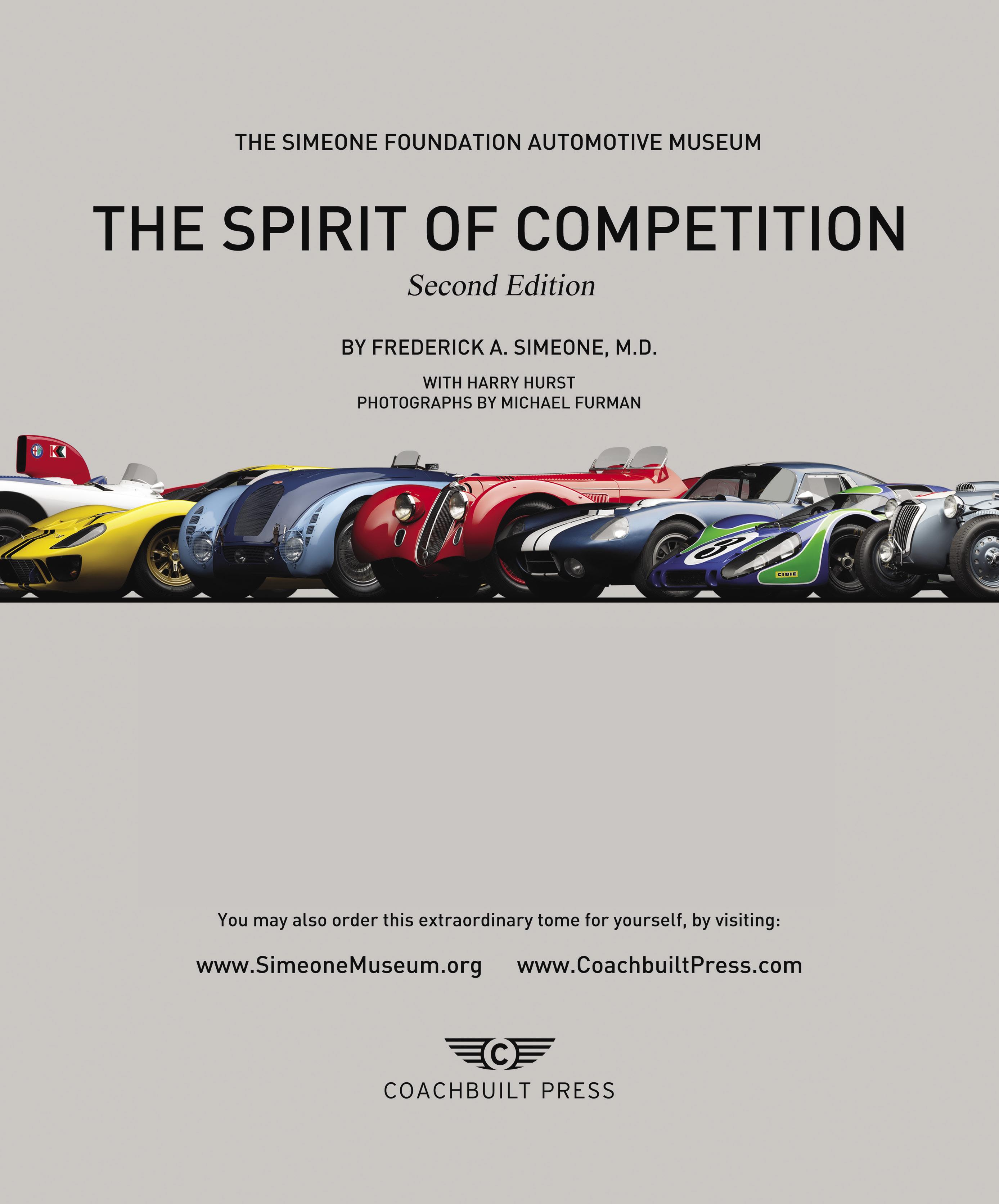
The renowned collection of Dr. Fred Simeone has received the most prestigious awards and accolades in the collector car space. The museum catalog has long been out of print, and with this updated second edition, is now available for immediate purchase at its worldwide release at Pebble Beach.®
Since opening in 2008, the collection has grown with new cars and features, all of which are presented here. The book format has been enlarged to an oversized square affording more material not included in the first edition.
ere is a relentlessness required to make a wine like PATRIMONY. No resource, not an ounce of e ort is spared in its pursuit. But the soul of the wine—that comes not from a heavy hand, but rather a discerning touch. We are ever mindful of this balancing act.
99 Points
PATRIMONY 2021 Cabernet Sauvignon e Tasting Panel Magazine September 2024







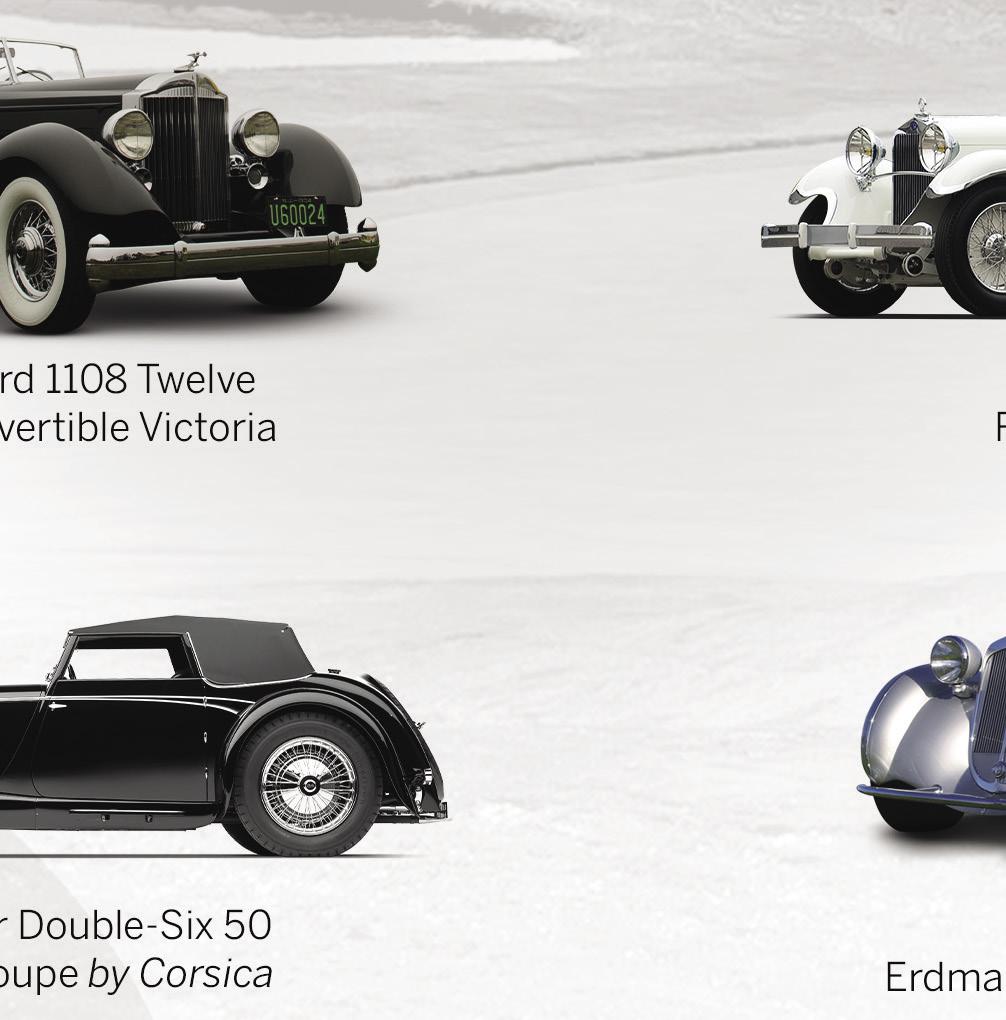





Pebble Beach Poster Artist since 2009


‘The Ultimate Lap’ Ltd edition print
w w w . t i m l a y z e l l . c o m
Original Paintings Limited Edition Prints Commissions Taken + 44 (0) 7974 900580
The Concept Lawn showcases the latest models and concepts—and often plays host to debuts.


The Acura RSX Prototype previews the brand’s next-generation allelectric model—a premium, performance SUV set to arrive at Acura dealerships in the summer of 2026. The first model engineered on a new Honda global EV platform, RSX will take Acura Precision Crafted Performance DNA into the future with its performance form design and cutting-edge technologies.
Finished in captivating new striking yellow pearl paint, the dynamic styling of the Acura RSX Prototype delivers on the design language previewed on the Acura Performance EV Concept one year ago. With an expressive coupe-like silhouette, powerful proportions, and high-tech details, the RSX Prototype demonstrates the brand’s commitment to performance vehicles in the zero emissions future.
The front fascia is bold and distinctive, evolving the brand’s unique Diamond Pentagon design language. A more dramatic lighting signature, including a striking split-headlight design with sharp and slim daytime running lights and low-mounted LED headlamps, confidently brings RSX into a new era.
Performance design details include deeply sculpted side surfaces, flush door handles, and an integrated ducktail-style rear spoiler. The stance of the RSX Prototype is wide and athletic, with flared wheel wells and large multi-spoke 21-inch rims that exhibit the bright red calipers of the large front Brembo brakes.
The production RSX will be built in Marysville, Ohio, on the same production line as the Acura Integra, demonstrating the flexible manufacturing capabilities of the company’s new EV Hub.

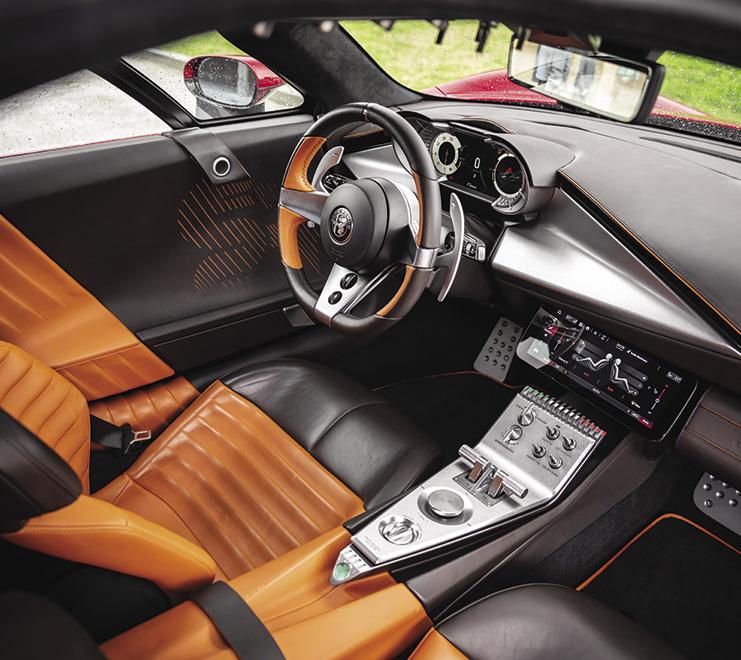

Inspired by the 1967 masterpiece often hailed as one of the most beautiful cars ever made—the original Alfa Romeo 33 Stradale—this new, limited edition 33 Stradale production car captures the soul of its predecessor while redefining what’s possible today.
Only 33 units will be handcrafted, each a bespoke creation tailored through the exclusive Alfa Romeo Bottega, where clients collaborate directly with designers to shape every detail—including selecting their own chassis number.
The new 33 Stradale, which makes its North American debut amidst Pebble Beach Automotive Week, is more than a tribute; it’s a statement

of passion, design, and performance. Available with a twin-turbo V6 delivering 630 horsepower, the 33 Stradale launches from zero to 100 km/h (62 mph) in under 3 seconds, with a top speed of 333 km/h (207 mph). Its carbon-fiber monocoque, double-arm suspension, and Brembo carbon-ceramic brakes reflect its motorsport DNA.
Inside, the cockpit-style cabin blends aviation inspiration with Italian craftsmanship—Alcantara, leather, and pure driving focus.
This is a return to fuoriserie, a celebration of Alfa Romeo’s daring spirit, and the start of a new chapter in performance artistry. Welcome to a dream realized. Welcome to the new 33 Stradale.



The Aston Martin Valhalla is the ultimate driver’s supercar. Even when surrounded by the world’s most forward-thinking automotive designs, the mid-engined hybrid Valhalla stands apart, marking a bold leap into Aston Martin’s high-performance, hybridized future.
At its core lies a 4.0-liter twin-turbocharged V8 hybrid powertrain producing more than 1,000 horsepower and more than 800 lb-ft of torque, capable of launching the car from zero to 60 mph in less than 2.5 seconds and with a blistering 217 mph top speed. Active aerodynamics, informed by the revolutionary hypercar Aston Martin Valkyrie, generate more than 1,300 pounds of downforce.
Fusing the performance-driven methodologies and technologies of Formula 1 with spectacular design and scintillating driving dynamics,

Valhalla is a supercar of extraordinary scope. Developed with extensive input from Aston Martin Performance Technologies—the engineering arm of the Aston Martin Aramco Formula 1 Team—the Valhalla benefits from deep expertise in aerodynamics, dynamics, and materials.
“There is no better place than the Concept Lawn to debut Valhalla in production form,” said Aston Martin CEO Adrian Hallmark. “It is a pure expression of what our future holds.”
With development now at an advanced stage, Valhalla’s appearance at the Pebble Beach Concours d’Elegance is both a celebration and a signal: Aston Martin is evolving—with class-leading performance, cutting-edge technology, and iconic design leading the way.



Wyclef Jean—megastar, pop sensation, and 1990s Fugees member— launched a prototype for his first-ever supercar in 2023. That supercar, the Attucks Apex APO, which is due to be released in the winter of 2026, has since been updated in several ways and now includes scanning technology that makes autonomous driving a possibility.
Wyclef Jean was the first American to import a McLaren F1 and a Pagani Zonda to the U.S., and his current collection of cars encompasses the wish lists of many enthusiasts. As his love for cars grew from a hobby to a major passion, it was natural that he took the next step, creating his own car with partner with Xxxx Elo, the owner of Supercar Rooms Miami. The partnership launched the automotive future and technology brand Attucks Future.

The Attucks Apex APO, which is powered by a 650 bhp rear-mounted electric motor with 580 Nm of torque and a 90 kWh lithium-ion battery, has a claimed top speed of 190 mph (306 km/h) and accelerates from zero to 60 mph in 2.3 seconds. Due to the lightweight monocoque carbon chassis, with a modular spaceframe and a central spine for maximum rigidity, the supercar has a claimed kerb weight of just 1200 kg. Aerodynamic bodywork and a flat floor, aided by a low center of gravity, exploit ground effect principles.
Given its tie to Wyclef Jean, this incredible future supercar is also equipped with an enhanced music and sound experience, designed to play sounds and songs to match your mood and maximize your driving experience.



EXP 15 is an all-new concept car from Bentley Motors that describes the future vision for Bentley design DNA.
Inspired by the 1930 Speed Six Gurney Nutting “Blue Train” Coupe, EXP 15 is a contemporary statement that showcases the next evolution of Bentley’s core design principles—upright elegance, the “endless bonnet” line, and the “resting beast” stance.
The car takes the form of an elevated three-door, three-seat coupé with a very strong presence, cocooning a conceptual interior cabin of the future that features a flexible seating layout. This “vision car” is intended both to illustrate the next iteration of Bentley’s core design language and to

inspire Bentley’s interior and exterior design teams in creating modern and progressive design directions for future product lines.
The concept made its global debut at Bentley’s headquarters in Crewe, England, on July 8, as part of the opening of a new Design Studio at the heart of Bentley’s campus. This 21st century design facility will be where every Bentley of the future will be sculpted, built in one of the factory’s original 1938 art deco buildings.
EXP 15’s appearance on the Concept Lawn is its public debut outside of the factory.



Gran Turismo—a unique category of extraordinary automobiles, a way of life. The first model from the Bovensiepen brand is presented in this automotive tradition.
The Bovensiepen Zagato masterfully combines Italian design with renowned Bavarian engineering. It is a unique automobile created with dedication and craftsmanship to excite automotive enthusiasts. Its shape is a harmonious composition of individual design features and bears the unmistakable signature of the traditional Milanese design studio Zagato. All design elements—from the elegant, elongated bonnet and side lines to the almost architectural design of the front and rear—hark back tothe tradition of iconic coupés, now in a modern, timeless interpretation. A true masterpiece of contemporary coachbuilding.

All components of this model, around 400 precision parts, were developed to bring to life what the name Bovensiepen stands for: Fine Driving.
The power of the Bovensiepen Zagato also comes from within: The 3.0 liter in-line six-cylinder engine generates an output of 449 kW (602 hp) and a maximum torque of 700 Nm. The acceleration from 0 to 60 mph takes just 3,2 seconds and the top speed lies beyond the 190 mph mark (per preliminary data).
Each Bovensiepen Zagato is created and assembled at our manufactory in Buchloe (Bavaria) by experts with decades of experience and a great passion for manual craftsmanship, and each automobile takes over 250 working hours to complete.



The SOLLEI concept vehicle is a masterclass in bespoke luxury, integrating iconic Cadillac innovation and design with inviting electric luxury. Blending sun (“SOL”) and leisure (“LEI”), SOLLEI represents an optimistic desire for open-air individuality, celebrating summer travel rich with unexpected discoveries and a sense of occasion.
SOLLEI imagines an all-electric, 2+2 convertible with a low, elongated body, accentuated by a wide stance and long coupe door. Honoring Cadillac’s bold heritage, the Manila Cream exterior finish, which originally appeared on 1950s models, is now revived by Cadillac craftsmen and meticulously curated and hand painted.
This sunlit saturation recurs on materials and finishes throughout, including distinctive sunburst motifs on lighting and embroidery.

An “Aurora” tint on metal finishes invokes the interplay of solar winds and earth’s atmosphere. Interior décor wrapped in unstained wood veneers pays homage to the natural color and grain pattern variations. Each piece is hand-cut and hand-laid using marquetry techniques, creating a beautiful focal point that draws the eye. SOLLEI is equipped with intuitive technology, including the brand’s signature 55-inch pillarto-pillar diagonal screen and an innovative bio-based material developed in collaboration with MycoWorks.
This ultimate expression of coach-built personalization pushes the possibilities of future bespoke commissions, with tailoring designed to reflect the limitless passions of its clientele.

Confident. Sleek. Elevated. The QX65 Monograph concept crossover marks a bold new chapter for INFINITI, continuing the brand’s evolved design direction. With its daring, unapologetic stance and graceful coupe proportions, the QX65 Monograph balances bold form with extraordinary character, making an unmistakable visual statement.
The QX65 Monograph is identifiable by its fastback coupe roofline, sculpted to deliver a sleek sense of speed. This powerful, graceful motion is a recurring theme in the concept and a key tenet of INFINITI’s Artistry in Motion design language. This is most evident in the pronounced upper arch silhouette, which contrasts with the muscular lower body. The concept artfully blends seamless forms with elevated, refined details. For instance, wheels with dramatically twisted, layered spokes are pushed far out to the corners to enhance Monograph’s purposeful posture.
Extended digital piano key lighting—a key INFINITI design signature— wraps across the nose, dramatically defining the front edge of the QX65 Monograph. It serves to highlight the dramatic grille, which has subtle bronze accents and a pattern inspired by the stirring movements of Japan’s bamboo forests in a storm—a design that signals dynamism and forward motion—anchored by INFINITI’s three-dimensional emblem.
At the rear, smoked taillights glow in vivid red. The concept is finished in Twilight, a rich, multi-layered paint inspired by the reds and golds of sunsets fading into the night. Depending on the light, the satin-finish paint shifts and evolves, mirroring the design’s movement and depth.
QX65 Monograph is a bold, evocative vision of INFINITI’s future— where heritage meets innovation in extraordinary form.



Karma Automotive is California’s first and only full-line ultra-luxury vehicle manufacturer, and the 2027 Karma Amaris makes its official Global Premiere amidst Pebble Beach Automotive Week. Amaris is the company’s first production two-door coupe and features a powerful Extended-Range Electric Vehicle (EREV) powertrain wrapped in stunning design. Amaris will accelerate from zero to 60 mph in less than 3.5 seconds, culminating with a top speed of 165 mph (estimated).
The powerful yet timelessly elegant carbon fiber and aluminum body of Amaris features the latest expression of Karma’s Comet Line design language, which is inspired by the path of a comet as it pierces the night sky. With Amaris, this feature line originates in the recessed cowl aft of the nose, arcing rearward across the hood then descending through the

doors to amplify the wide, aggressive rear track. The 22” Constellation wheels, crafted in forged aluminum, fully-establish the purposeful, fluid stance of Amaris. The voluptuous clamshell hood, incorporating Karma’s Target Lighting signature, creates a seamless transition and visual flow to the front fenders. The Backslash design element punctuates the space between the front wheels and the “swan doors,” which gracefully pivot upwards to dramatic effect. Its sleek rear glass profile concludes with an aero pass-through spoiler that reduces aerodynamic drag while creating rear axle downforce for increased stability at high speeds. The Americana-inspired side exhaust further signals performance and capability.
As its Comet Line suggests, Karma Automotive will take you to the extraordinary.

Lamborghini unveils the Fenomeno, a hypercar limited to just 29 units, celebrating 20 years of the Lamborghini Centro Stile. Debuting amidst Pebble Beach Automotive Week, the Fenomeno embodies the brand’s “Iconic and Essential” design philosophy and is the most powerful and fastest Lamborghini ever.
Powered by the most potent naturally aspirated V12 in Lamborghini’s history (835 hp) paired with three electric motors, the Fenomeno delivers a total of 1,080 hp. It accelerates from zero to 100 km/h in 2.4 seconds, exceeds 350 km/h, and boasts a record power-to-weight ratio of 1.64 kg/hp. The powertrain is integrated into a carbon-fiber monofuselage with a front frame made of Forged Composites.
The design is a bold manifesto of Lamborghini’s new stylistic language: sculpted surfaces, active aerodynamics, a long-tail profile, and turbinestyle carbon wheels. Advanced aerodynamic solutions include an S-Duct, air curtains, NACA intakes, and a signature omega-shaped rear wing.
Inside, the cockpit reflects the “Hyperdesign” concept: ultra-light materials, three digital displays, minimal physical controls, and a driver-focused layout. The manually adjustable racing suspension enhances performance, as well as the high-performance CCMR Plus carbon-ceramic brakes developed for maximum track efficiency.
The Fenomeno is fully customizable through Lamborghini’s Ad Personam program. A tribute to Lamborghini’s DNA—fusing art, technology, and extreme performance.
Lexus continues to evolve its progressive design language with the global debut of the Lexus Sport Concept.
This dynamic vehicle draws inspiration from prior Lexus highperformance coupe designs while forging a new, modern, and very dynamic visual identity for the Japanese luxury brand.
This latest coupe concept projects a sense of NEXT level power, athleticism, and supreme performance in a future Lexus coupe enabled by the promise of new technologies. The Lexus Sport Concept’s visual expression explores details and conventions in its design language that signal an expressive, more provocative way forward for future Lexus designs as the brand moves further into the realm of advanced electrification.

The Lucid Gravity redefined the SUV. Now, the Lucid Gravity X pushes the limits even further. Equipped to explore the world’s most untamed edges, it combines advanced on- and off-road readiness with the original model’s incredible range, extraordinary space, and world-class performance—boldly going where no electric SUV has gone before.
The Lucid Gravity X embodies refined ruggedness and quiet capability. Redesigned front and rear fascias improve approach and departure angles, while a widened track, lifted ride height, 21/22” all-terrain tires, and protective skid plates deliver enhanced trail performance. Utility rockers and integrated tow hooks enhance functionality, while its sleek silhouette retains Lucid’s exceptional aerodynamics and understated elegance.
Purpose-built for those who leave ordinary behind, the Lucid Gravity X is designed for unmatched versatility on the road and in the wild. A modular roof system with integrated crossbars, roof box, and accessory mounts supports overland excursions. Inside, flexible three-row seating, fully fold-flat seats, and a stowable third row offer impressive space for any combination of up to seven people and their gear.
The Lucid Gravity X brings bold new dimensions to outdoor exploration—an uncompromising, all-electric SUV ready to tackle tough trails by day and serve as basecamp for up to seven by starlight.

Maserati introduces MCPURA, a bold evolution of the brand’s MC20 halo car, which perfectly embodies the House of the Trident’s core values of performance, elegance, and sportiness.
Powered by the iconic 630-hp in-house Nettuno V6 engine with Formula 1-derived pre-chamber combustion technology, and engineered entirely in Modena, Italy, MCPURA delivers a visceral driving experience with refined Italian craftsmanship and cutting-edge design.
Handcrafted at the brand’s historic Viale Ciro Menotti plant, it features an updated carbon-fiber body, new styling with GT2 Stradale-inspired details, a redesigned interior with Alcantara accents, and a brand-new steering wheel design.
This super sports car is making its North American debut, in striking Al Aqua Rainbow finish, amidst Pebble Beach Automotive Week, having made its global debut at the 2025 Goodwood Festival of Speed.
MCPURA is available in both Coupé and Cielo convertible forms. The latter features a class-first PDLC glass roof that shifts from transparent to opaque at the touch of a button, offering an unparalleled open-air experience. Coupé and Cielo orders are now open for North American customers, with first deliveries and presence on showroom floors taking place later this calendar year.

The CONCEPT AMG GT XX serves as a pioneering technology program and offers an impressive glimpse into our future all-electric platform from Mercedes-AMG.
It encompasses cutting-edge technology and innovations, precision engineering, and an architecture designed from the ground up for limitless performance on the road and at the charger.
In the almost 60-year history of the Mercedes-Benz performance and sports car brand, the drive was always the heart of the vehicle, bar none. The team at Affalterbach are continuing this tradition with the CONCEPT AMG GT XX, which introduces a revolutionary drive technology in the form of innovative axial flux motors, which enable high power from an extremely compact package and enter series production at
Mercedes-AMG in 2026. Thanks to a peak output of over 1,000 kW, the CONCEPT AMG GT XX can reach top speeds of more than 360 km/h (224 mph).
Three axial flux motors are packaged into two High Performance Electric Drive Units (HP.EDUs). In combination with a new high-performance battery, the three axial flux motors attain a completely new level, particularly with respect to continuous power. This offers a new level of continuous performance that was almost unthinkable in the world of electric mobility—until now.
The new high-voltage battery in the CONCEPT AMG GT XX delivers a high power output with exceptional repeatability, guaranteeing the vehicle’s outstanding overall performance. Its charging performance likewise sets new benchmarks; charging is almost as fast as refueling.

Inspired by the legendary McLaren M1A, the car that launched a global brand, and the unbeatable MP4/4, the car that dominated the 1988 Formula 1 season in the hands of Ayrton Senna and Alain Prost, the Nichols N1A delivers an unadulterated connection to the road, all wrapped up in modern day Can-Am bodywork.
Conceived by Steve Nichols, McLaren’s former Chief Designer responsible for the MP4/4, and longtime collaborator John Minnet, the car is an exquisite demonstration of the delicate balance between sculpted exterior design, lightweight components, and performance. At just 900 kilos thanks to its bonded aluminum and carbon fiber chassis, and featuring a formidable 7.0-liter V8 engine paired with a manual 6-speed transmission, the N1A purposely delivers over 700 bhp to the car’s rear
wheels. When on the track, acceleration is visceral, grip is unparalleled, handling is balanced and purposeful.
What’s more unexpected is the performance of the N1A on the open road. Effortless, smooth, and stable; it’s a road-legal vehicle that’s equally at home on country roads and on the track.
To honor the 1988 F1 season, just 15 cars will carry the ICON88 moniker, along with a race-specific badge—a fitting homage to the year McLaren rewrote and forever defined racing history by securing 15 of the 16 race victories. This initial production run will deliver a rare collector’s item and long-term investment, designed and built by those who know how to win.



Orion Automotive’s Ascension, the world’s first Land Yacht, is a first-ofits-kind ultra-opulent SUV that reimagines the concept of mobile living. Blending hypercar performance with the elegance and scale of a full-size SUV, Ascension is a bespoke engineering marvel crafted for those who accept nothing less than extraordinary.
This purpose-built land yacht features a full slide-up hard wall roof, rear slide-out extension, and a tailgate lounge that transforms into a private outdoor retreat, expanding your space at the touch of a button. Inside, the experience continues with a lavish U-shaped lounge, full kitchen, spa-style shower, and a private upstairs bedroom cabin designed for true relaxation.

The front passenger swivel seat integrates seamlessly with the floor using our proprietary Sto-N-Go™ system, ensuring form and function meet without compromise. Every window opens—manually or automatically—while the open floor plan provides unrestricted movement from front to rear.
At the heart of the Ascension is the H.U.N. System™ (Hidden Until Needed), which elegantly conceals storage, appliances, and entertainment features until needed. It’s intelligent luxury, redefined.
Built to order and fully customizable, the Orion Automotive’s Ascension isn’t just transportation—it’s a statement of power, taste, and distinction. For those who live without limits, this is the future of elevated travel.



The Automobili Pininfarina Battista is a fully electric GT hyper car designed and individually hand-crafted in Italy.
With a power output of 1,900 hp and 2,340 Nm torque, Battista combines engineering and technology in a zero emissions package.
Its 120 kWh battery provides power to four electric motors, one at each wheel.
This bespoke model, “Battista Novantacinque,” was presented in May 2025 as a celebration of design heritage, a tribute to the 95 years of Pininfarina’s extraordinary legacy (pininfarina.it). The Novantacinque is finished in Exposed Signature Carbon Tinted Rosso Gloss—a color

deeply rooted in Italian culture, symbolizing passion, speed, and emotion. This is complemented by a livery that uses gold to symbolize glory and luxury, black for elegance, and carbon for performance; it is a true celebration of Italian artistry and innovation.
Inside, the Battista Novantacinque offers an immersive and luxurious environment. Pilota seats are upholstered in a combination of Black Leather and Black Alcantara, accented by duotone stitching in Black and Gold to echo the car’s exterior.



2025 has racing fans living a dream—on screen and on track.
In F1® The Movie, directed by Joseph Kosinski (of Top Gun: Maverick) and produced by Jerry Bruckheimer and Brad Pitt, cinema and motorsport converge in spectacular fashion. Pitt stars as Sonny Hayes, piloting a Porsche 911 GT3 R for fictional team Chip Hart Racing in a high-stakes endurance comeback that begins at the legendary 24 Hours of Daytona.
This summer, Chip Hart Racing crossed into competition at both Le Mans and Watkins Glen thanks to Manthey Racing and Wright Motorsports, which were instrumental in bringing the film to life by campaigning cars wearing the movie livery at both venues.
Meanwhile, AO Racing continues to deliver real world thrills to fans in the IMSA WeatherTech SportsCar Championship, where they are the defending GTD Pro class victors. Known for their daring race strategy and lighthearted dinosaur liveries, their 911 GT3 R nicknamed “Rexy” and his “Roxy” sister car are fan favorites in the paddock. Fans can see both cars on display together this year.
Just like the Chip Hart crew, AO Racing races with character: it’s bold, fun, and fan-focused. As F1® The Movie thrills theaters, AO Racing proves the underdog story is alive and well—on screen and on track.
AO Racing and Chip Hart Racing are Where Fiction Meets the Fast Lane.

The Superleggera Veloce12 Barchetta—where elegance meets the open air—is a tribute to Italian design, engineering heritage, and the raw thrill of manual performance.
The Superleggera Veloce12 Barchetta debuts amidst Pebble Beach Automotive Week, and it is not just a car but an experience. In a world of increasingly automated driving, the Superleggera Veloce12 Barchetta represents a return to something elemental: mechanical engagement, clean yet refined design, inspired by creative legacy and emotional connection. It’s a modern reinterpretation of a timeless concept, born from the Italian tradition of open-top performance and handcrafted excellence. The term barchetta, meaning little boat in Italian, harkens back to the postwar era of motorsport, when lightweight, open-bodied cars ruled the roads of Europe, and is nowadays synonymous with elegance,
minimalism, and performance. The Superleggera Veloce12 Barchetta channels this spirit into the 21st century.
At the core of this machine lies a naturally aspirated 5.5-liter F133 V12, delivering power through an iconic open-gate six-speed manual gearbox. This pairing offers an unfiltered driving experience that connects driver and road in a way few modern cars do. The design, as with all Touring Superleggera creations, is both sculptural and functional. Every curve is purposeful, every surface an elegant expression. The body, handcrafted in Milan, reflects a commitment to purity over excess. Stripped of unnecessary technology and distractions, the cabin prioritizes driving engagement above all else. This vehicle is more than a reinterpretation — it is a reawakening.
Influence the world’s most influential people. Reach our readers


The feats of engineering, style, and speed collected here this week are proof that how far you can go is only restrained by one thing: the limits of your imagination. For those who were born to fly, we offer a private aviation model designed for the way you move.



























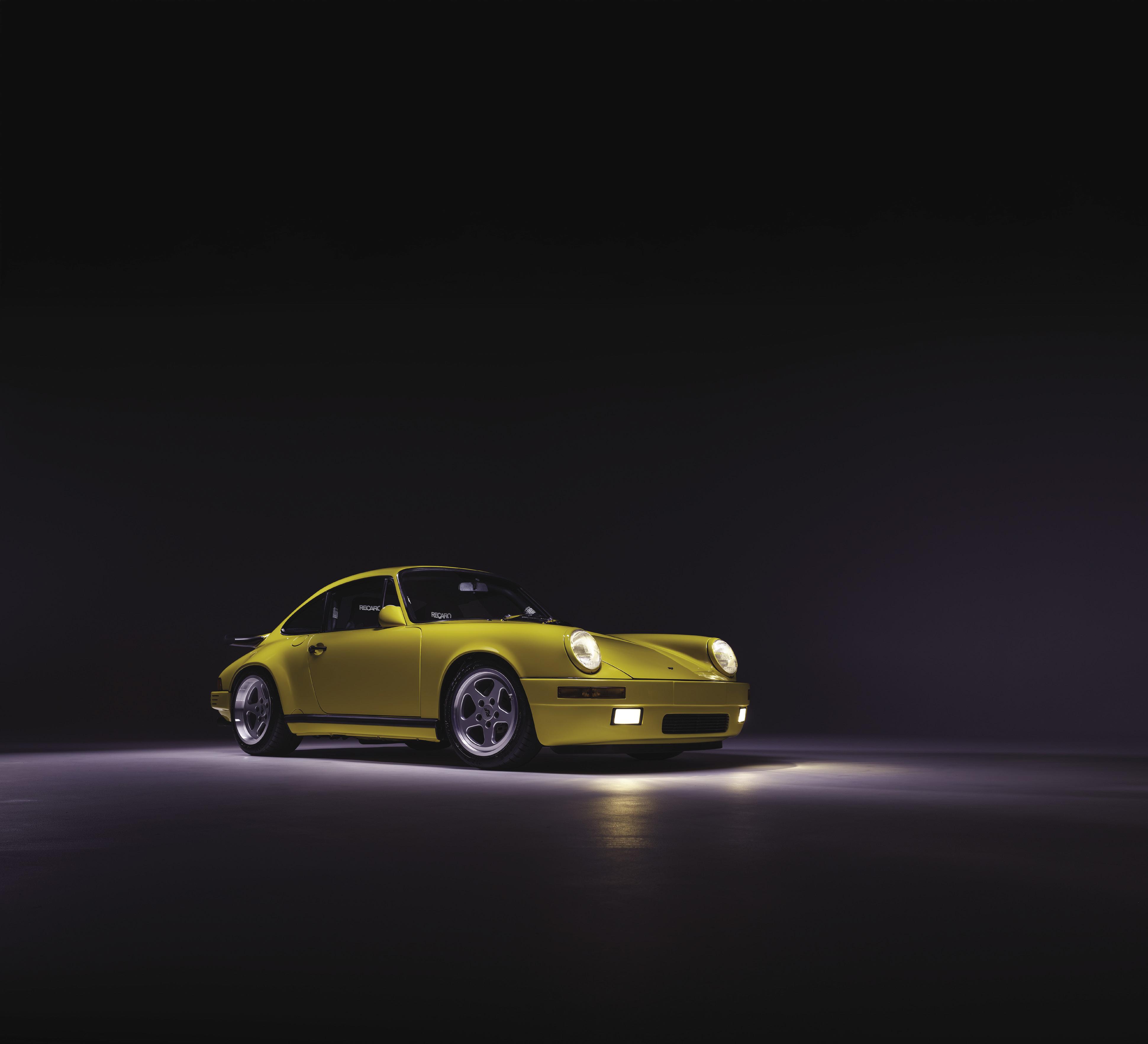
By David Burgess-Wise





Above left and right: A longchassis Invicta 3 Litre tours the Surrey countryside early in 1927 and gives way to Gypsy “Vardo” wagons at a local crossroads.
Left: Under the bonnet of the Invicta 3 Litre, a brass plaque on the valve cover gives maintenance instructions for the engine.

“I don’t believe that there was ever a machine which in looks and gadgetry generated such pangs of acquisitiveness,”
wrote the late Ralph Stein of the Invicta S-Type that he owned for some seven years post-World War II and foolishly swapped for a disappointing 2.5-liter Riley. Certainly the S-Type—long, low-slung, and endowed with possibly the most beautiful radiator badge ever—was perhaps the most gorgeously purposeful sports car of the early 1930s. Moreover, it was one of an exclusive coterie of cars of its day that could touch 100 mph. Indeed, I recall an epic ride back from the 24 Hours of Le Mans in the 1990s aboard a friend’s highly tuned S-Type when I saw an indicated 130 mph on the saucer-sized speedometer. . . .
The Invicta marque was the brainchild of Captain Noel Macklin, a veteran of the Great War. In 1901, the precocious 15-year-old Macklin had taught himself to drive at the wheel of his father’s Panhard & Levassor, continuously circling the carriage drive that surrounded London’s Royal Albert Hall. By 1911 he had moved on
to bigger things and bought the gargantuan 18-liter Fiat racer “Mephistopheles.” Early one morning the police timed Macklin at 83 mph on suburban Kingston Hill: the nationwide speed limit was only 20 mph, and he lost his license.
In 1919, Macklin and his friend Hugh Orr-Ewing essayed car manufacture with a small sporting car called the Eric Campbell (an amalgam of the pair’s middle names), a venture in which they were aided by engineer Willie Watson. The combination of a 1500-cc Coventry-Simplex engine in a prewar 7-hp Swift chassis proved “hot stuff,” and manufacture was taken over in 1920 by the HandleyPage aircraft company, thirsty for work after wartime contracts for their giant V/1500 biplane bombers had been cancelled. When the Eric Campbell proved unprofitable, production passed to the Vulcan Iron & Metal Works in 1922, but they ceased manufacture in 1926.

Undeterred, Macklin and Watson tried again in 1921 with a variation on the Eric Campbell named the Silver Hawk, “a competition car pure and simple.” That proved another recipe for commercial failure, and no more than a dozen Silver Hawks were built. Ephemeral though the Eric Campbell and Silver Hawk had been, they did launch the competition career of a remarkable young lady named Violette Cordery, who just happened to be Noel Macklin’s sister-in-law. Born in 1900, Violette had been a precocious driver like Macklin, as her daughter Sally Harrison recalled when I met her back in 2002: “When she was 14, Mother dressed in her grandmother’s clothes and lied about her age to get a driving license.” Violette Cordery would play a major role in the Invicta story.
Noel Macklin lived in the Surrey village of Cobham. Nearby was the home of his motoring enthusiast friends Oliver and Philip Lyle, directors of the family Tate & Lyle sugar refinery. They confided to Macklin that they wanted to build “a copper-bottomed first-class car” and were prepared to spend “quite a hefty sum on the project.”
Oliver Lyle was a great enthusiast for steam—indeed, he would later write a standard work on the efficient use of this “willing horse.” Reckoning that he had shifted gear
a million times driving gasoline automobiles, and that 900,000 of these shifts had been unnecessary, Lyle decided that a steam car, with its ability to develop maximum torque from a standstill, was the answer.
So Doble and Stanley steamers were imported from the States and subjected to a series of tests by Willie Watson. These concentrated principally on the Doble, “a magnificent piece of work” of which Watson declared that even a Rolls-Royce “could not equal its velvety silent effortless progress.” However, the Doble was fiendishly complex, and after deep consideration of the cost and complication of producing such a car in Britain, the project was abandoned. But then Philip Lyle’s wife Eileen remarked that she was sure she would never be able to change gear properly, to which Macklin gallantly responded, “I’ll build you a car on which you’ll never have to change gear.”
And after much argument and persuasion the Lyles agreed to back the project, provided that Macklin and Watson could create a gasoline car capable of climbing the notoriously steep and slippery Guildford High Street from a standing start in top gear.


The Cordery sisters Evelyn
and Violette during the record-breaking marathon that won Invicta a second Dewar Trophy at Brooklands in
Below: Watched by Violette, Evelyn chalks up the final score of their 30,000-miles-in30,000-minutes record session at the wheel of an Invicta 4½ Litre.

Above: Back from its 1927 world-girdling trip, Violette Cordery’s Invicta 3 Litre passes by the “In and Out”

Long, low, and lovely: the Invicta 4½ Litre S-Type was the very essence of speed.

Necessarily, since the production facility for the new marque—they called it “Invicta,” the Latin word for “unconquerable”—was Macklin’s sizeable garage, the Invicta was largely a combination of carefully chosen proprietary components, bodied by outside coachbuilders. To build the prototypes Watson secured some engineless chassis from the Bayliss-Thomas company—he had designed their new 11-hp model in the interim—and half a dozen 2-liter six-cylinder Coventry-Simplex engines were acquired to power them. Unfortunately, the engines were left outside without anti-freeze during an unforeseen sharp frost and all were ruined.
Fortuitously, this seeming disaster ultimately turned out to be a boon, for the Coventry-Simplex engine had failed to deliver the desired amount of low-speed pulling power. Investigation revealed the 2.7-liter Meadows 6, a robust power unit that produced a healthy amount of low-down torque, to be more suitable. Over the years Willie Watson was to work closely with Meadows engine designer R. S. Crump to tailor their engines to the particular needs of the Invicta. Helpfully, too, the brilliant Welsh engineer J. G. Parry-Thomas, who lived, worked, and raced at Brooklands, acted as design consultant to Invicta until his tragic death in 1927 attempting to set a new Land Speed Record on Pendine Sands in Wales with his 27-liter aeroengined car “Babs.” In 1925 Parry-Thomas was involved in a still-born project to create an Invicta powered by the attractively named 2891-cc Italian “FAST” (Fabbrica Automobili Sport Torino) engine. Another Invicta scheme that never materialized proposed using his big 7266-cc Leyland Eight (cylinder) engine.
The first production Invictas appeared in the summer of 1925. Tested by The Autocar, the Invicta proved itself capable of climbing all the magazine’s favorite test hills in top gear. Ample publicity was afforded the new marque by the redoubtable Violette Cordery, who made the Invicta’s competition debut that July by winning a half-mile scratch race at Brooklands from nine men (including Oliver Lyle) and defeating seven other lady drivers in an all-woman race. In March 1926 she led a team of six drivers who broke 33 Italian and four world long distance records from 9,500 to 15,500 miles (15,500 to 25,000 kilometers) at the Italian Monza race circuit with a new 3 Litre (2973-cc) version of the Invicta. And that July Violette and her team covered 5,000 miles on the Montlhéry track south of Paris at an average speed of over 70 mph. Invicta’s record-breaking success at Monza and Montlhéry earned the Cobham marque motoring’s most coveted award, the Royal Automobile Club’s Dewar Trophy, for 1926—the first time it had been won by a woman.
In 1927 the indefatigable Violette, scarcely over a debilitating bout of paratyphoid fever, set off in a virtually standard but heavily laden Invicta 3 Litre, accompanied by a lady friend, an RAC official, and a mechanic, on an ambitious endurance run that she described as “rather a lark.” It was, in fact, no lark but an officially-observed world-girdling tour “to show people that you can go round the world as comfortably and cheaply by car as by train— and much more interestingly!”
Back in London five months later, Violette had covered 10,266 road miles in Europe, Africa, Asia, and America, averaging 24.6 mph in this motoring marathon, her
mechanically trouble-free run interrupted only by a collision with a runaway trolley car in Algiers.
Her final record session saw Violette and her younger sister Evelyn covering 30,000 miles in 30,000 minutes in the latest 4½ Litre (4429-cc) version of the Invicta at Brooklands in 1929 to win a second Dewar Trophy for the company. Violette capped this in 1930 by driving eleven times round an 11-mile traffic route in London (121 miles) using top gear only and starting from rest in traffic 852 times, followed by return journeys from London to Monte Carlo (1740 miles) in third gear, London to John O’Groats (1370 miles) in second gear, and London to Edinburgh (826 miles) in bottom gear.
However, when in 1931 she married the dashing Army officer John Hindmarsh, who had been seconded to the Royal Air Force college at Cranwell, Violette renounced racing and record-breaking.
At the 1930 Olympia Motor Show, Invicta had revealed what the Evening Standard called “the mystery car of the show”—the new “100 mph” low chassis 4½ Litre S-Type that Watson had been developing in secret. Later described as “probably the best-looking car in the vintage tradition ever to be produced in England,” its chassis was an entirely new design, underslung at the rear, swept upwards over the front axle, and with a 9-foot 10-inch wheelbase against the 10-foot 6-inch of the high-chassis 4½ Litre. It spoke of speed and bore an entirely new radiator badge like a fantastic butterfly, a winged symphony in red, blue and gold enamel. Like the majority of Invictas, the hinge lines of its “proud, foursquare” hood were defined by rows of close-set raised rivet heads.
The entirely new chassis of the Invicta S-Type was designed for high speed—upswept at the front and underslung
Below: Beautiful as a butterfly: the gorgeous radiator badge of the Invicta S-Type. Bottom: Donald Healey and crew celebrate winning the International Sporting Club Cup, the premier award of the 1931 Monte Carlo Rally.



Under California skies: this 1932 Invicta S-Type carries four-seater tourer coachwork by Carbodies of Coventry.

The S-Type soon earned its sporting spurs: in January 1931 Donald Healey’s Invicta S-Type carried all before it in the Monte Carlo Rally, “the world’s greatest competition of its type for passenger cars,” by winning the premier International Sporting Club Cup, as well as the Le Journal Challenge Cup, l’Illustration Automobile Cup, and the Norwegian Automobile Club Cup. He was to come second in 1932 in the S-Type.
In 1931 Healey also finished the testing Alpine Rally in his Invicta S-Type, without incurring a single penalty point, to win a coveted Coupe des Glaciers. He repeated the feat the following year when two other Invicta drivers also finished with clean scores and won Glacier Cups.
Also upholding the sporting achievement of the S-Type was seasoned racing driver Raymond Mays who—along with the tuning skills of Peter Berthon and Murray Jamieson—developed a formidable hill-climbing car out of his “White Invicta,” which, with the aid of Meadows, developed some 160 bhp compared with the standard model’s 115 bhp. At the Shelsley Walsh hillclimb in 1932 this car beat a supercharged 7.7-liter Mercedes SSKL to set a new International Record for Sports Cars. It also broke the Mountain Lap Record for unsupercharged cars at Brooklands.
The Invicta S-Type was a great favorite of Rivers Fletcher, an amazing man whom I knew toward the end of his long life, which encompassed 70 years’ first-hand experience of
every kind of thoroughbred automobile. His verdict on a secondhand S-Type after some 400 miles at the wheel was lucid: “Steering that made the car respond to an inch, and complete controllability at ordinary high speeds, although the roads were wet part of the way and the rear tires were all but smooth. Tail slides occurred under acceleration in the wet, but they could be dealt with at once. . . . It even exceeded expectations.”
Unfortunately, the S-Type was the right car at the wrong time, for during the worldwide Depression that followed the Wall Street Crash of 1929 it was difficult to sell expensive cars—in 1931 the Car Mart dealership advertised S-Type tourers for a hefty £995—and eventually only some 77 Invicta S-Type chassis were produced. A 1498-cc “Small Invicta” offered for 1932 failed to save the day, and Invicta production at Cobham ceased in 1933. The company was taken over by the Earl Fitzwilliam and a few more Invictas were assembled at the company’s London depot. However, the continuing attraction of the low chassis S-Type of the 1930s has ensured a high proportion of survivors—56 are believed to exist today.
There have been two attempts to revive the company. In 1948 production of the fiendishly complicated Invicta Black Prince began at Virginia Water in Surrey. Again designed by Willie Watson, it had a twin-cam Meadows six-cylinder engine and all-round independent torque bar suspension. A Brockhouse “hydro-kinetic turbo-


transmitter” with an infinite variety of ratios replaced a conventional gearbox. Maybe 20 were built before the imposition of a double purchase tax made the Black Prince impossibly expensive. A second revival of the marque as a 180 mph Ford V8powered supercar in 2002 enjoyed little better fate, with a few cars built to bespoke order before manufacture ended a decade later.
Above: A former Raymond Mays “White Invicta,” this very sporting 1933 S-Type also carries tourer bodywork by Carbodies of Coventry.
Left: On its way to the Le Mans 24-hour race in the 1990s, this S-Type Invicta is welcomed by the staff of a favorite restaurant.
Below: The purposeful front aspect of 1932 Invicta S-Type “Mrs. Vic,” low-built for speed.






A TAXADVANTAGED LIFESTYLE IS JUST THE START

Clear Creek Tahoe has taken its place among the great mountain communities in America. A Coore + Crenshaw golf course rated #1 in Nevada, an iconic beachfront Lake & Ski House on Lake Tahoe, an award-winning mountaintop clubhouse and a family sports center are just part of the story. Add in the inviting tax benefits of Nevada residency, and it’s easy to see why so many have made Clear Creek home.

90% SOLD OUT
Homesites from $500,000 to $3M+ | New homes starting at $3.3M
Limited Non-Resident Golf Memberships Available












Capable of reaching acclaimed destinations, including the Pebble Beach Concours d’Elegance®.





























BY COLIN COMER




It can take even the most significant achievement and slowly work at erasing it, a little more with each passing year. After sixty years? It takes a legend to endure that with the strength of indelible ink, immune to being erased from our collective memory.
In the automotive world, only a very small number of cars have made such a mark. Even fewer remain aspirational to generation after generation. Possess performance so incredible that they serve as a benchmark for over six decades. Are so desired that an entire industry was created to simply create replicas of them, thousands more than were ever produced of the original car, all owned by people who just want to capture a little bit of the magic of the real deal, to walk into their garage and see the image that sparked a dream that will not fade.
This is the power, and indeed the legend, of the Shelby Cobra.

It begins with the original small block Cobra. Carroll Shelby was enamored with the idea of stuffing an American V-8 into a small British sports car, certainly fueled by his time behind the wheel of a J2 Allard, not to mention how many V-8 sports car “specials” were coming out of the woodwork in the early 1960s. The first Shelby Cobra (CSX2000), built by marrying Ford’s new lightweight 260 CID V-8 with AC Car’s Ace roadster, was terrorizing the streets of Los Angeles in 1962 after being built at Dean Moon’s shop. As crude as this first Cobra was, it proved that Shelby had indeed captured lightning in a bottle. Soon, the magic applied by Chief Engineer and mechanical genius Phil Remington fine-tuned the Cobra into a true weapons-grade machine. Remington and his band of “California hot rodders” at Shelby American employed no computer simulation, no chassis shakers, no teams of engineers, no weeks spent in secret at test tracks collecting data to see what shock absorber valving might offer an advantage at corner exit. No, Rem and his team did it the old-fashioned way—in competition. Early races showed the Cobra’s weaknesses through failure, and its strengths through all that was right from the start. Above all, it
showed the tenacity of the team behind the Cobra, and the fact that they wouldn’t quit until the car was right.
In short order nothing else in SCCA (Sports Car Club of America) competitions came close. The Cobras simply cleaned house, decimating the new Corvette Stingray, the Jaguar XKE, the Porsche, and the occasional Ferrari that ventured to take a swing at Shelby’s giant killer. After winning championships in the US, in 1964 the Cobra Team went to Europe to compete against the World’s best—and it came within a hair’s breadth of winning the World Manufacturers Championship for GT Cars with the Peter Brock–designed Cobra Daytona Coupe joining the venerable Cobra roadsters. Enzo Ferrari squeezed out a win only by strong-arming the FIA (the Fédération Internationale de l’Automobile) to cancel a race in Italy, leaving the Cobra team unable to collect enough points to win. They were back the following year with a vengeance, smarter and hungrier, and on July 4, 1965, they had enough points to clinch the Championship. It was the first time Ferrari lost the championship for GT cars in 11 consecutive years—and it was the only time an American


THIS IS THE POWER & INDEED THE LEGEND OF THE SHELBY COBRA.

car won the FIA World Manufacturers Championship for GT cars before or since.
To represent these beginning chapters of the Cobra story the Pebble Beach Concours is honored to display the first production Cobra (CSX2001). This car was shipped in July of 1962 to Carroll Shelby’s first official Distributor/ Dealership, Ed Hugus’s European Cars of Pittsburgh. Interestingly, due to Shelby’s shoestring budget while getting the Cobra program underway, he actually had Hugus take delivery of the first Cobras and complete them at his dealership given Hugus’s proximity to the shipping port in New York, as well as the expense and delay that Shelby would have incurred to truck these cars to Los Angeles for completion. Born a “Street” specification Cobra, CSX2001 was quickly converted into a competition car in period and has an impressive European race history.
Due to its tremendous success in competition, the Cobra quickly achieved a lofty position in the sports car world. But that position was at risk due to the competition catching up in cars such as Zora Duntov’s new Grand Sport Corvettes that soundly trounced Ken Miles in his 289 Cobra at Nassau in 1963. So it was Miles who decided to shove Ford’s new 427 CID engine into a 289 Comp Car (CSX2196). Ted Sutton was tasked with the cutting, hammering, re-configuring, and general hot rodding tricks it took to actually make the 427 fit in the lightweight Special that Miles envisioned as a competitor to the Grand Sport. Miles did the track testing and (ahem, limited) development, with input from Phil Remington. The result was an admittedly evil-handling machine, but the mighty
427 certainly provided the additional firepower Miles was looking for. It was, as we’d say today, a good proof of concept for a Big Block Cobra.
Shelby and Ford soon stepped in and, with a stronger and wider chassis, an all-new coil spring suspension designed by a team including Ford engineers Klaus Aning and Bob Negstad, aided by Ford’s new “supercomputer,” and countless other updates, the official 427 Shelby Cobra was born. The intent was for it to be an FIA homologated competition car for the 1965 season. Unfortunately, when the FIA inspectors showed up at Shelby American on April 29, 1965, the deadline, they found only 52 completed 427 Cobras of the 100 needed for FIA certification. This instantly relegated the car to SCCA and privateer competition; it could not be the giant killer Cobras Shelby had hoped to bring to Europe. This, coupled with the Ford GT40 program, meant the 427 Cobra would never make its mark in competition the way the 289 Cobra did.
While the 427 Cobra may not have been as successful on track as hoped, the 23 factory-built Full Competition 427 Cobras did make their mark in SCCA A-Production racing. CSX3018 is one such example of a privateer-raced 427 Comp Cobra. Its original owner Richard Messersmith purchased the car from Shelby American in 1966 and proceeded to race it in the SCCA at Midwest tracks such as Meadowdale, Wilmont Hills, and Road America.
On a much larger scale, CSX3009, also a Full Competition 427, was purchased by Skip Scott’s newly founded Essex Wire team. Under the Essex Wire banner, 3009 became
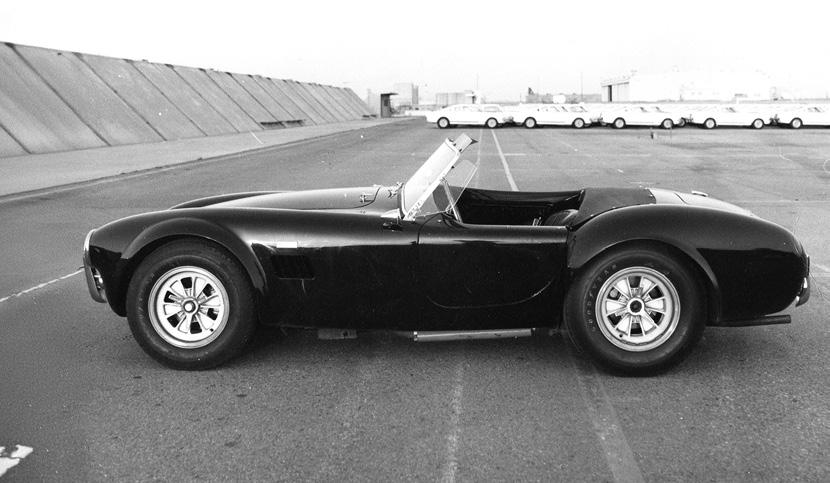
not only one of the most famous 427 Comp Cars, but also the most successful with numerous victories and three championship wins. Though not a Shelby Team car, Scott and Essex Wire received huge support from Shelby American as they certainly represented Shelby well on track.
Now, I know the mathematicians among us are saying “I thought there were 52 427 Comp Cobras, now you are saying 23?” I can explain. You see, it seems not everybody wanted to pay $9,500 for a full competition, not-street-legal Cobra. So Shelby took 29 of his full Competition-spec Cobras and “softened” them up a bit, turning them into street legal “Semi-Competition” (aka S/C) Cobras by detuning the engines, putting rubber bushings in key suspension points, installing an engine cooling fan and baffles in the sidepipes, and making a few other tweaks. One such S/C is CSX3042, delivered new to Grappone Ford, where owner John Grappone soon decided that he needed to own this Sapphire Blue Cobra himself. Grappone would keep CSX3042 in “inventory” until he sold it in 1982, making it the last new Cobra to ever be sold by a Shelby dealer.
Opposite page: The Essex Wire 427 Cobra (CSX3009) and mechanic Ray Heppenstal, with the 289 Competition Cobra of Tom Payne behind, at the Pensacola Florida USRRC Race in May 1965.
Left: The Narrow Hip 427 Cobra in a press photo taken at Shelby American’s LAX facility in 1965.
Below: Peter Brock (kneeling) chats with Carroll Shelby, seated in an early 260 Cobra, at Shelby's Venice, California, facility.

narrower rear fenders and narrower rear wheels. The result was the “Narrow Hip” 427 Cobra body, as displayed on the field by CSX3131. Just 32 Narrow Hip 427 Cobras were produced, and they are among not only the most rare but also the most desirable 427 Street Cobras as their trim proportions add a subtle visual elegance that is reminiscent of the original Small Block Cobras, albeit ones that have been working out with a trainer.
We’d certainly be remiss to not discuss the 427 Street Cobras, of which 260 were produced, with all of the wildly varying details you’d expect from a small manufacturer like Shelby American that was essentially selling a 1950s British sports car well into the 1960s. One variation involved Shelby’s attempt to make a 427 Cobra body with
But if a brutish “I can’t have enough tire to get all this horsepower to the ground” look is your thing, well then you’ll love CSX3173, an original wide-hip 427 Street Cobra finished in stunning Silver Mink. As an early production 427 it features a true 427 CID engine (versus the cost-cutting 428 CID engine that was used for roughly 100 cars in the middle of the production run) and other early features such as two four-barrel carburetors and small rectangular taillights.


Above: Gentleman racer Richard Messersmith is picture-perfect piloting his 427 Competition car (CSX3018) at Wilmot Hills Raceway in 1967.
Left: Ken Miles (center) in his finest church clothes, showing off an early 427 Cobra PR car at Shelby American in 1965.
Lastly, as a fitting bookend to CSX2001, we are fortunate to have CSX3360, the last 427 Cobra built. Like CSX3042, it was sold new from Grappone Ford and has led a sheltered existence. It represents the culmination of every running production change from the scant threeyear Big Block Cobra production run. By the time the last few Cobras were built, Shelby had returned to using true 427 CID engines, now with a single four-barrel Holley carburetor, the last iteration of the wide hip body, with four round taillights for better visibility, and other changes done either to make the cars better, less expensive to build, or, sometimes both!
From the 427 Cobra’s beginnings as competition car turned street car, and despite being launched at the dawn of the raging muscle car wars in Detroit, there was never anything like the 427 Cobra. Its brutal performance, racing pedigree, and street cred, not to mention its legendary zero to 100 to zero mph time of 13.2 seconds, cemented it as the performance yardstick against which all other cars were measured long after the Cobra went out of production in 1967. There was no question it would transition to legend, nor debate as to why it did so quicker than almost
any other car in history. The 427 Cobra is arguably the most iconic sports car of the twentieth century, despite its miniscule three-year, 313-car production run. It is the most replicated car in history, a poster car for the ages, a silhouette you’ll see in all forms of media from advertising to clip art when anybody wants to impart the image of the ultimate performance car. A car that has rightly earned its place on just about every enthusiast’s top ten list. A car that, no matter how many times you’ve experienced it, if you see one resting in the wild you can’t help but stop, stare, and hope somebody comes to start it soon so you can hear it and feel it in your chest.
While all of this may sound like a rich blend of myth and unbridled fan-boy hyperbole, I can assure you it is not. As somebody who has nearly fifty thousand miles of combined seat time in just about every variation of 427 Cobra, as well as many decades of Cobra ownership, I can certainly attest to experiencing any Cobra as a life-changing event. Which is why I wholeheartedly affirm that sixty years of the 427 Cobra is an anniversary well worth celebrating—even if all of these big-block machines rolling on to the lawn end up scaring some of the other cars.













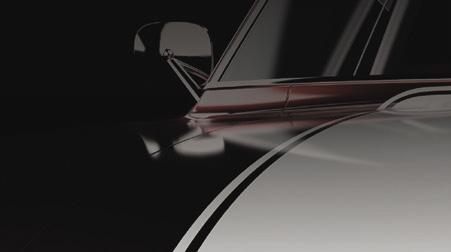

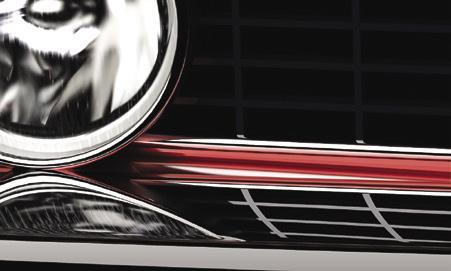














































To date, the Foundation has granted more than $20 million in financial support to the region’s best youth-focused nonprofits who are committed to providing a brighter future for all Monterey County youth.






































1950
1950 Edwards R-26
Special Sport Roadster
Sterling Edwards
1951
1951 Jaguar Mark VII Saloon
Mrs. Charles H. Hornberg Jr.
1952
1952 Jaguar XK120
Fixed Head Coupé
Glen Sorey
1953
1953 Austin Healey 100 Roadster
Peter Clowes
1954
1952 Jaguar XK120
Fixed Head Coupé
Barclay Cotter
1955
1931 Pierce-Arrow 41
LeBaron Town Cabriolet
Phil Hill
1956
1930 Bugatti Type 37 Grand Prix
Dr. Milton R. Roth
1957
1937 Rolls-Royce Phantom III
Mulliner Sedanca de Ville
Frank B. Cox
1958
1930 duPont Model G
Merrimac Town Car
J. B. Nethercutt
1959
1939 Bugatti Type 57C Atalante
J. B. Nethercutt
1961
1930 Packard 740
Custom Eight Roadster
Scott Newhall
1962
1913 Rolls-Royce Silver Ghost
London to Edinburgh Tourer
Alton H.Walker
1963
1931 Pierce-Arrow 41
LeBaron Custom Club Sedan
William Harrah
1964
1932 Bugatti Type 50 Coupé Profilé
William Harrah
1965
1927 Bentley 4½ Litre
Vanden Plas Tourer
Christopher F. Coburn
1966
1931 Bugatti Type 41 “Royale”
Binder Coupé de Ville
William Harrah
1967
1937 Rolls-Royce Phantom III
H. J. Mulliner Saloon
Ralph C. Shermund
1968
1964 Maserati Mistral Coupé
Stanley W. Good Jr.
1969
1934 Duesenberg J Murphy-style
Dual Cowl Phaeton
J. B. Nethercutt
1970
1931 Daimler Double-Six 50
Royal Limousine
J. B. Nethercutt
1971
1927 Mercedes-Benz S
Three-Door Tourer
Owen Owens
1972
1922 Hispano-Suiza H6B
Labourdette Skiff/Torpedo
Mr. & Mrs. Jules M. Heumann
1973
1939 Mercedes-Benz 540K
Special Cabriolet A
Mrs. Otis Chandler
1974
1929 Rolls-Royce Phantom I
Brewster Regent
M. L. Post

1975
1934 Packard 1101 Eight
Convertible Victoria
Robert Milhous
1976
1937 Bugatti Type 57SC Atalante
William Harrah
1977
1927 Packard 343 Eight
Murphy Convertible Sedan
Mr. & Mrs. Phil Hill
1978
1929 Duesenberg J
LeBaron Dual Cowl Phaeton
Peter Rosi
1979
1931 Chrysler Imperial CG
LeBaron Dual Cowl Phaeton
Mr. & Mrs. Gerry Jensen
1980
1933 Duesenberg SJ Rollston
Arlington Torpedo Sedan
J. B. Nethercutt
1981
1929 Duesenberg J
Murphy Convertible Coupé
Terry Radey
1982
1935 Mercedes-Benz 500K
Special Roadster
Tom & Gerd Perkins

1983
1930 Isotta Fraschini Tipo 8A SS
Castagna Special Sports Tourer
Irwin Ginsberg, M.D.
1984
1929 Cunningham V5410
All Weather Cabriolet
Mr. & Mrs. Kenneth Vaughn
1985
1939 Bugatti Type 57
Saoutchik Cabriolet
Jack Becronis
1986
1936 Mercedes-Benz 500K
Special Roadster
Arturo Keller
1987
1928 Minerva Type AF Hibbard &
Darrin Transformable Town Car
Thomas Lester
1988
1937 Alfa Romeo 8C 2900B
Touring Spider
John Mozart
1989
1922 Hispano-Suiza H6B
Labourdette Skiff
Robert L. Meyer
1990
1938 Bugatti Type 57SC Atlantic
Ralph Lauren
1991
1932 Chrysler Imperial CH
Speedster
Sam & Emily Mann
1992
1929 Rolls-Royce Phantom II
Brewster Town Car
J. B. Nethercutt
1993
1930 Mercedes-Benz SSK
Count Trossi Roadster
Ralph Lauren
1994
1933 Duesenberg J Rollston Torpedo
Convertible Victoria
Terence & Mary Beth Adderley
1995
1931 Isotta Fraschini Tipo 8B
Viggo Jensen Cabriolet d’Orsay
W. K. Haines
1996
1938 Delage D8-120
de Villars Cabriolet
Sam & Emily Mann
1997
1937 Talbot-Lago T150C
Figoni & Falaschi Coupé
William E. “Chip” Connor II
1998
1938 Bugatti Type 57SC
Corsica Roadster
John Mozart

1999
1932 Daimler Double-Six
Martin Walter Sport Saloon
George Lingenbrink & Charles Bronson
2000
1937 Delahaye 135 M
Figoni & Falaschi Cabriolet
Jacques & Betty Harguindeguy
2001
1930 Mercedes-Benz SS
Erdmann & Rossi Roadster
Arturo & Deborah Keller
2002
1934 Voisin C-15 ETS Saliot Roadster
Sam & Emily Mann
2003
1936 Bugatti Type 57SC Atlantic
Peter D. Williamson
2004
1938 Horch 853A
Erdmann & Rossi Special Roadster
Joseph & Margie Cassini III
2005
1937 Delage D8-120 S
Pourtout Aéro Coupé
Sam & Emily Mann
2006
1931 Daimler Double-Six 50
Corsica Drophead Coupé
Robert M. Lee
2007
1935 Duesenberg SJ
“Mormon Meteor” Speedster
Harry Yeaggy

2008
1938 Alfa Romeo 8C 2900B
Touring Berlinetta
Jon & Mary Shirley
2009
1937 Horch 853
Voll & Ruhrbeck Sport Cabriolet
Robert M. Lee
2010
1933 Delage D8 S de Villars Roadster
Jim Patterson/The Patterson Collection
2011
1934 Voisin C-25 Aerodyne
Peter & Merle Mullin
2012
1928 Mercedes-Benz 680S
Saoutchik Torpedo
Paul & Judy Andrews
2013
1934 Packard 1108 Twelve
Dietrich Convertible Victoria
Joseph & Margie Cassini III
2014
1954 Ferrari 375 MM
Scaglietti Coupe
Jon Shirley
2015
1924 Isotta Fraschini Tipo 8A
F. Ramseier & Cie
Worblaufen Cabriolet
Jim Patterson/The Patterson Collection
2016
1936 Lancia Astura
Pinin Farina Cabriolet
Richard Mattei
2017
1929 Mercedes-Benz S
Barker Tourer
Bruce R. McCaw
2018
1937 Alfa Romeo 8C 2900B
Touring Berlinetta
David & Ginny Sydorick
2019
1931 Bentley 8 Litre
Gurney Nutting Sports Tourer
The Hon. Sir Michael Kadoorie
2021
1938 Mercedes-Benz 540K
Autobahn Kurier
The Keller Collection at the Pyramids
2022
1932 Duesenberg J Figoni
Sports Torpedo
Lee R. Anderson Sr.
2023
1937 Mercedes-Benz 540K
Special Roadster
Jim Patterson/The Patterson Collection
2024
1934 Bugatti Type 59 Sports
Fritz Burkard/The Pearl Collection


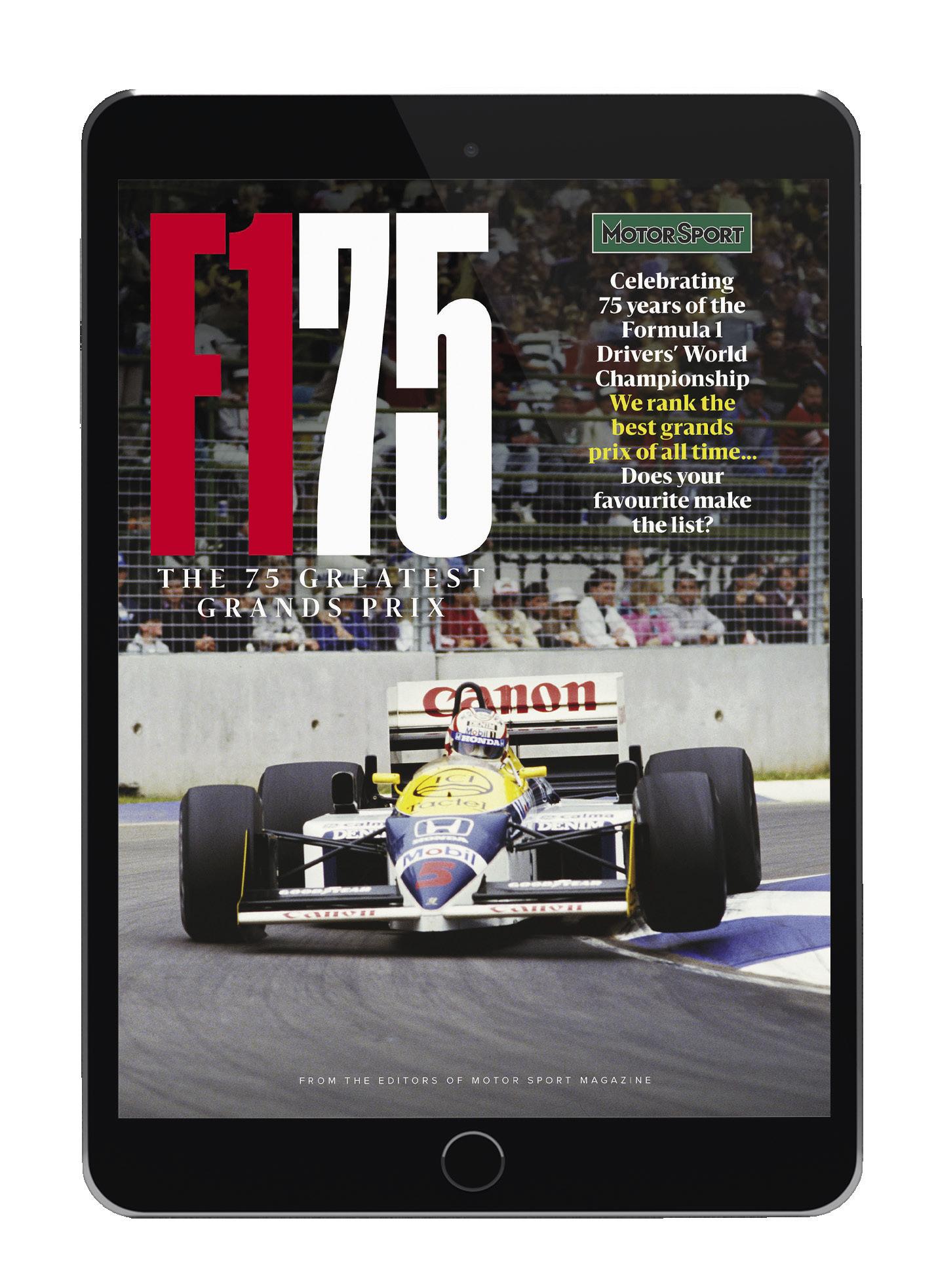





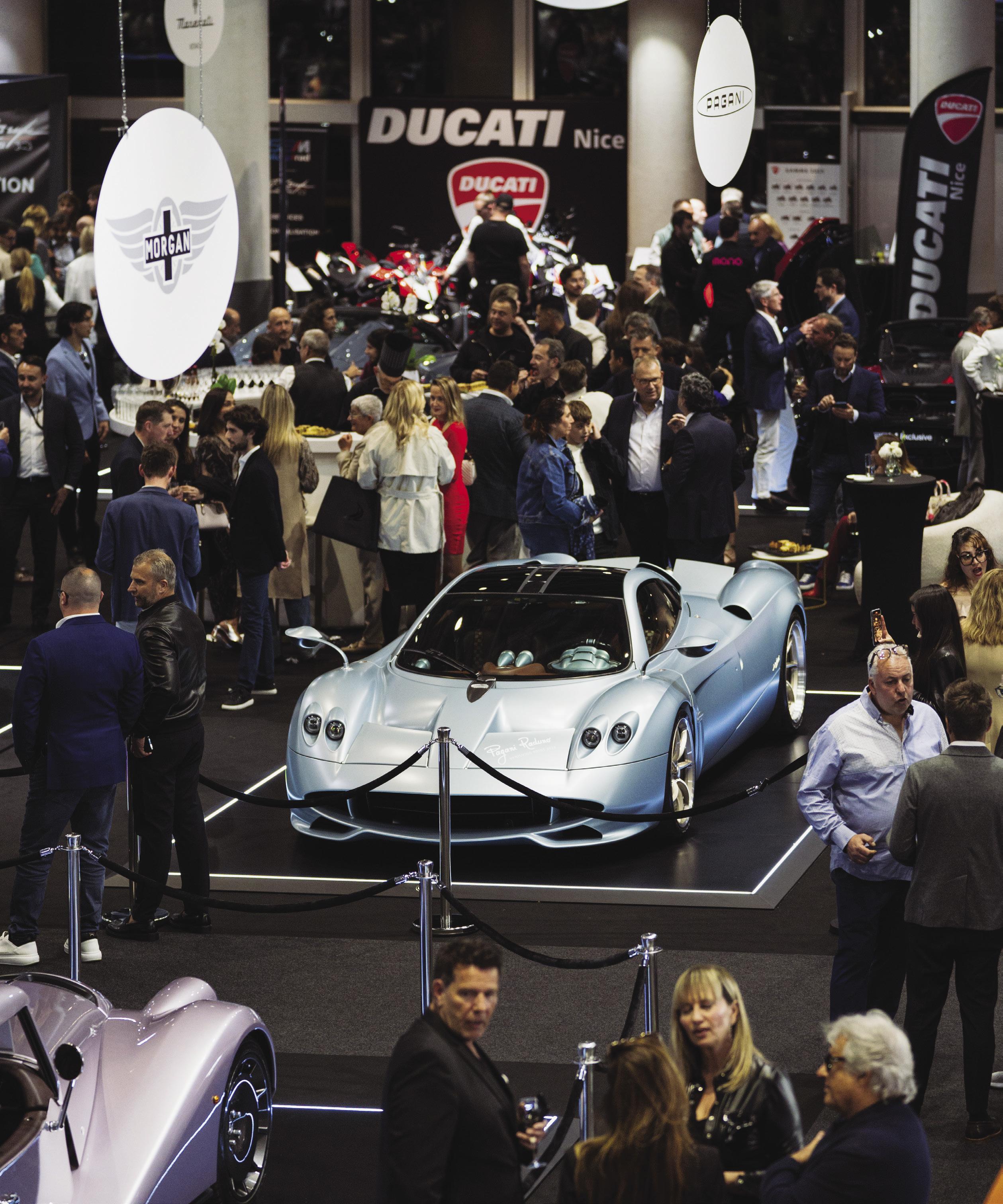

















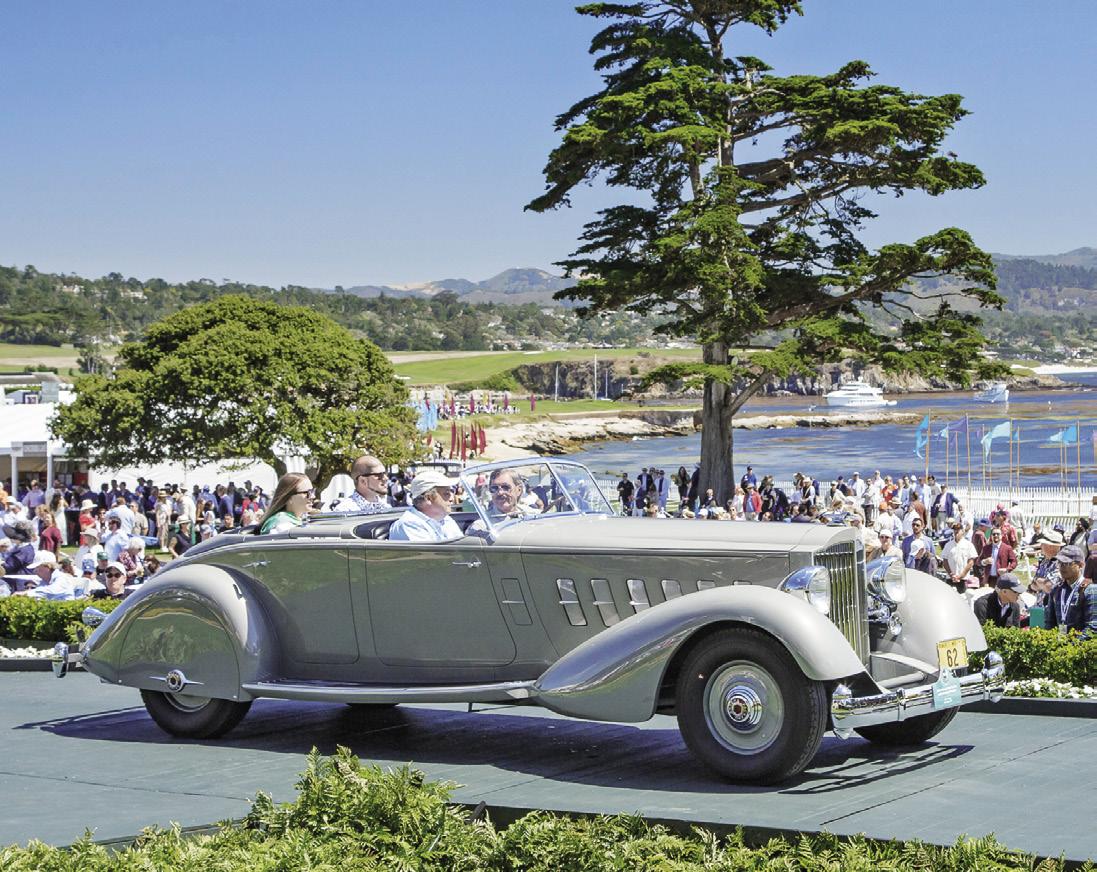





GWENN GRAHAM MOST ELEGANT CONVERTIBLE

1934 Packard 1108 Twelve Dietrich Convertible Sedan
THE JBS COLLECTION/JACK BOYD SMITH JR., ELKHART, INDIANA
JULES HEUMANN MOST ELEGANT OPEN CAR

1955 Maserati A6G/54 2000 Zagato Spyder
J. B. & DOROTHY NETHERCUTT MOST ELEGANT CLOSED CAR

1934 Packard 1108 Twelve Dietrich Sport Sedan LEHRMAN COLLECTION, PALM BEACH, FLORIDA
STROTHER M ac MINN MOST ELEGANT SPORTS CAR

1955 Maserati A6GCS Frua Spyder
ALEC ULMANN TROPHY

1934 Hispano-Suiza J12 Vanvooren Cabriolet THE HON. SIR MICHAEL KADOORIE, HONG KONG
ARTCENTER COLLEGE OF DESIGN AWARD

1956 Maserati A6G Zagato Berlinetta JONATHAN & WENDY SEGAL, SAN DIEGO, CALIFORNIA
ANSEL ADAMS AWARD

1962 Land Rover Series IIA 109” Special Station Wagon ANNE BROCKINTON LEE/THE LEE COLLECTION, SPARKS, NEVADA
BRIGGS CUNNINGHAM TROPHY

1934 Packard 1108 Twelve Dietrich Convertible Sedan THE JBS COLLECTION/JACK BOYD SMITH JR., ELKHART, INDIANA
CENTER FOR AUTOMOTIVE RESEARCH AT STANFORD (CARS) AWARD
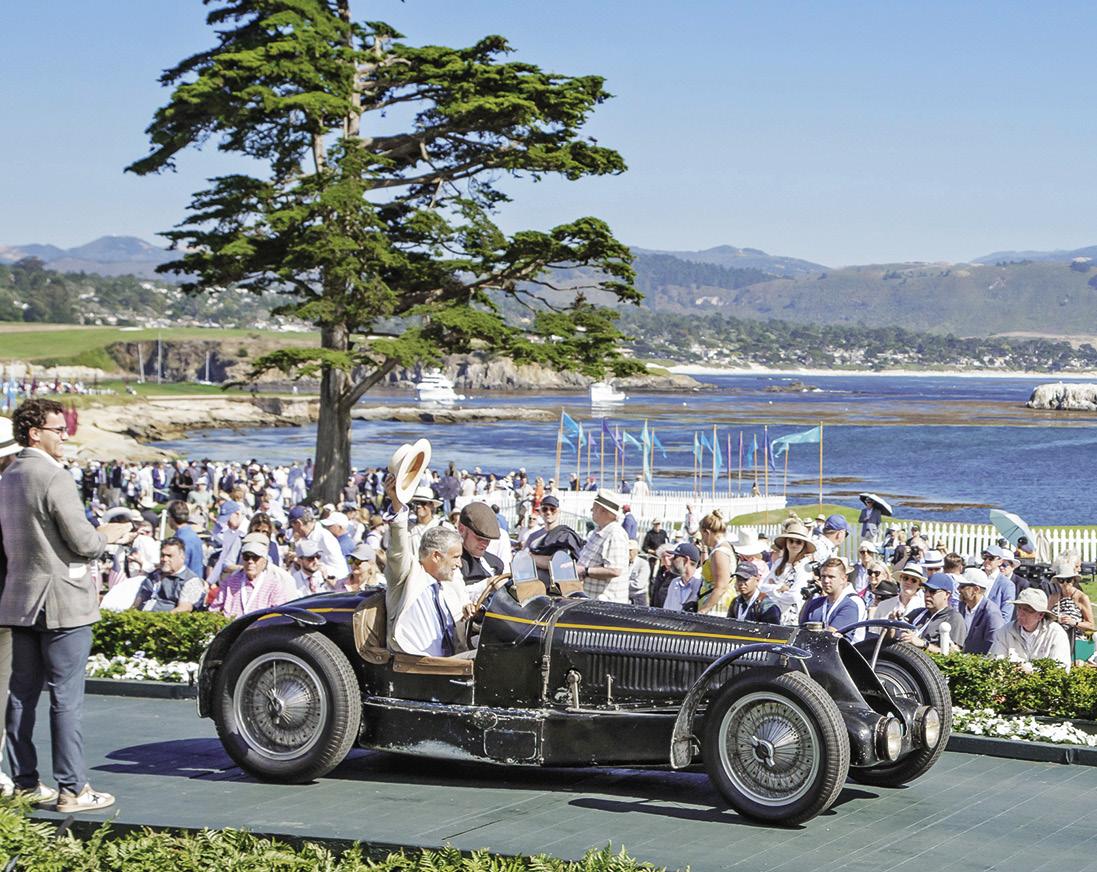
1934 Bugatti Type 59 Sports THE PEARL COLLECTION/FRITZ BURKARD, ZUG, SWITZERLAND
CHARLES A. CHAYNE TROPHY

1931 Marmon Sixteen LeBaron 2-4 Rumble Seat Coupe GARY SEVERNS, LONG BEACH, CALIFORNIA
CHAIRMAN’S TROPHY

1967 Ferrari 330 GTC Coupe Speciale HEINECKE FAMILY, BANGKOK, THAILAND
CLASSIC CAR CLUB OF AMERICA TROPHY

1930 Packard 734 Speedster Eight Victoria Coupe THE NETHERCUTT COLLECTION/ HELEN & JACK NETHERCUTT, SYLMAR, CALIFORNIA
DEAN BATCHELOR TROPHY

1966 Cannara Roadster GUY DIRKIN, CLERMONT, FLORIDA
FERRARI TROPHY

1973 Ferrari 365 GTB/4 Scaglietti Competizione Berlinetta
DAVID M ac NEIL, FORT LAUDERDALE, FLORIDA
ELEGANCE IN MOTION TROPHY

1954 Lagonda V12 Race Car (DP115/2) LAWRENCE STROLL, WARWICKSHIRE, UNITED KINGDOM
PREWAR TROPHY

1928 Aston Martin Sports Model “Feltham Flyer” Bertelli Two Seater PAUL & DEIRDRE LEE, STUDIO CITY, CALIFORNIA
FIVA POSTWAR TROPHY
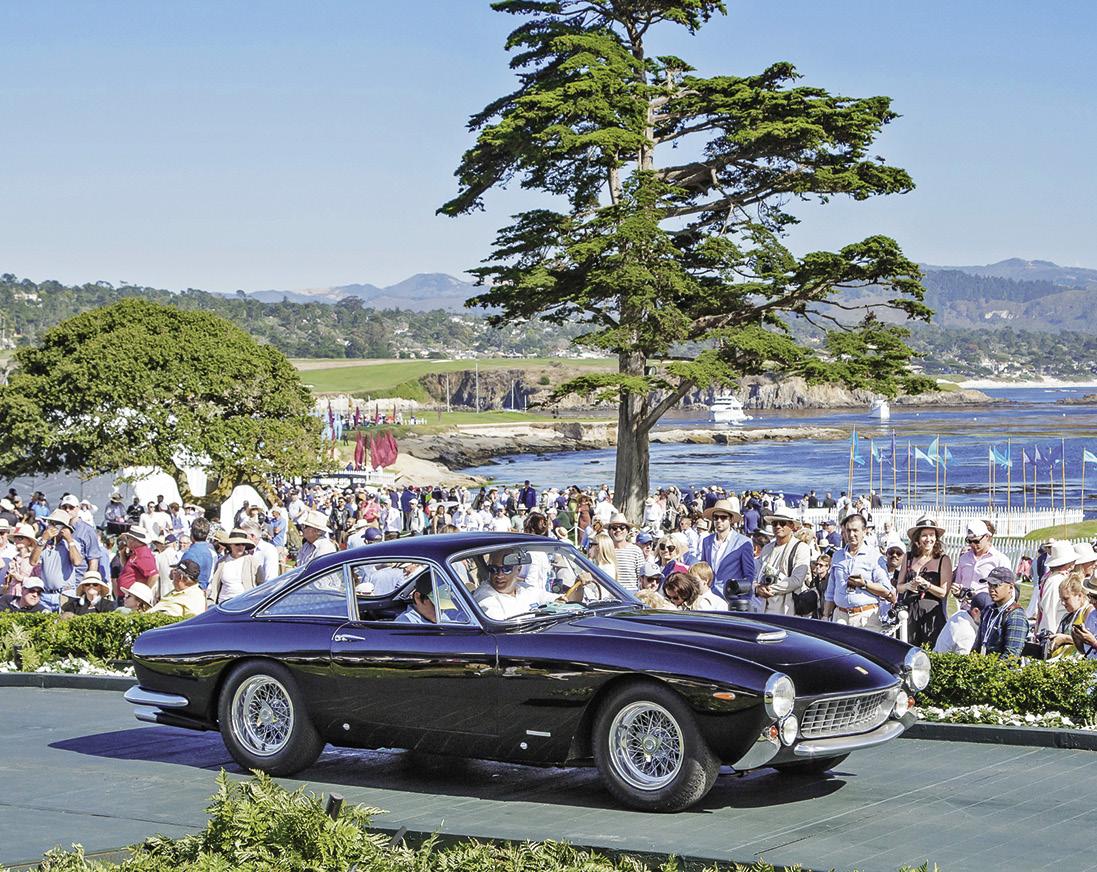
1964 Ferrari 250 GT Scaglietti Berlinetta Lusso
EARL WAGGONER & TONY OWEN, MANHATTAN BEACH, CALIFORNIA

1970 Lancia Stratos HF Zero Bertone Coupe
THE FRENCH CUP

1937 Bugatti Type 57SC Corsica Roadster

1930
LORIN TRYON TROPHY

Phillip Sarofim BEVERLY HILLS, CALIFORNIA
MERCEDES-BENZ STAR OF EXCELLENCE AWARD

1928 Mercedes-Benz 710 SSK Corsica Drophead
LUCIUS BEEBE TROPHY

1931 Rolls-Royce Phantom II Continental H.J. Mulliner Close-Coupled Weymann Saloon
RAJIV KEHR ADITYA DISPOMED PRODUCTS PVT. LTD.,
IMT MANESAR, INDIA
MONTAGU OF BEAULIEU TROPHY

1993 Jaguar XJ220C Le Mans Coupe
HENRY PEARMAN—HISTORIC CLASSICS COLLECTION, HEATHFIELD, UNITED KINGDOM
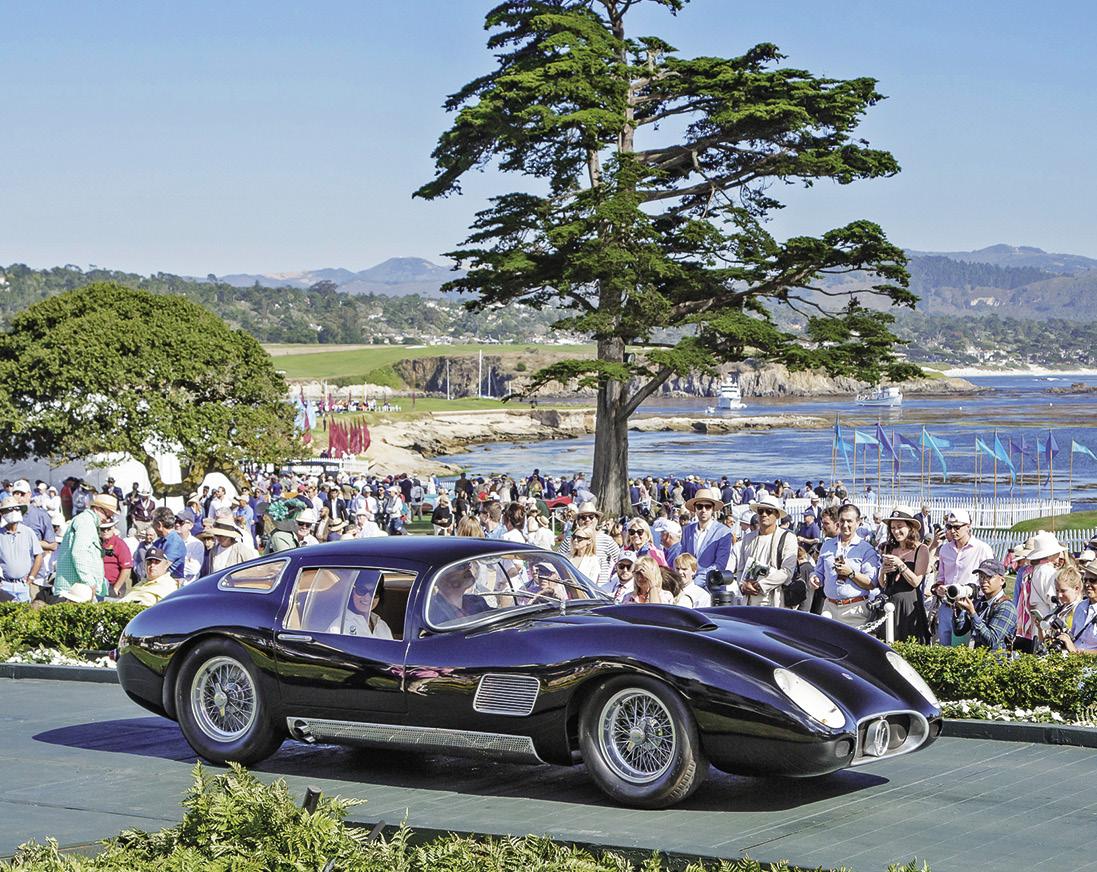
1957 Maserati 450S Zagato Berlinetta ROB WALTON,

1956 Maserati 250F Open Wheel Race Car LAWRENCE AURIANA, GREENWICH, CONNECTICUT

Cars line up to cross the awards ramp and receive their trophies and ribbons.
ANTIQUE

1916 Pierce-Arrow 48 B-4 Vestibule Suburban BRADLEY & ANDREW GREENE, PORTOLA VALLEY, CALIFORNIA
AMERICAN CLASSIC OPEN

1933 Chrysler CL Imperial Custom LeBaron Phaeton ACADEMY OF ART UNIVERSITY, SAN FRANCISCO, CALIFORNIA
PACKARD EARLY (PRE-TWIN SIX)

1914 Packard 4-48 Seven-Passenger Touring ROSS & BETH MYERS, BOYERTOWN, PENNSYLVANIA
AMERICAN CLASSIC CLOSED

1934 Packard 1108 Twelve Dietrich Sport Sedan LEHRMAN COLLECTION, PALM BEACH, FLORIDA
PACKARD 125 TH ANNIVERSARY
OPEN CUSTOM COACHWORK

1934 Packard 1108 Twelve LeBaron Sport Phaeton
ROLLS-ROYCE PREWAR

1938
DUESENBERG

1933 Duesenberg SJ LaGrande
MERCEDES-BENZ PREWAR

EUROPEAN CLASSIC TOURING EARLY

1923 Hispano-Suiza H6B Fernandez et Darrin Cabriolet
SAM & EMILY MANN, ENGLEWOOD, NEW JERSEY
EUROPEAN CLASSIC SPORT

1933 Bugatti Type 55 Roadster
EUROPEAN CLASSIC TOURING LATE

1938 Delage D8-120 Letourneur et Marchand Aérosport DANA & PATTI MECUM, GENEVA LAKE, WISCONSIN
PREWAR PRESERVATION
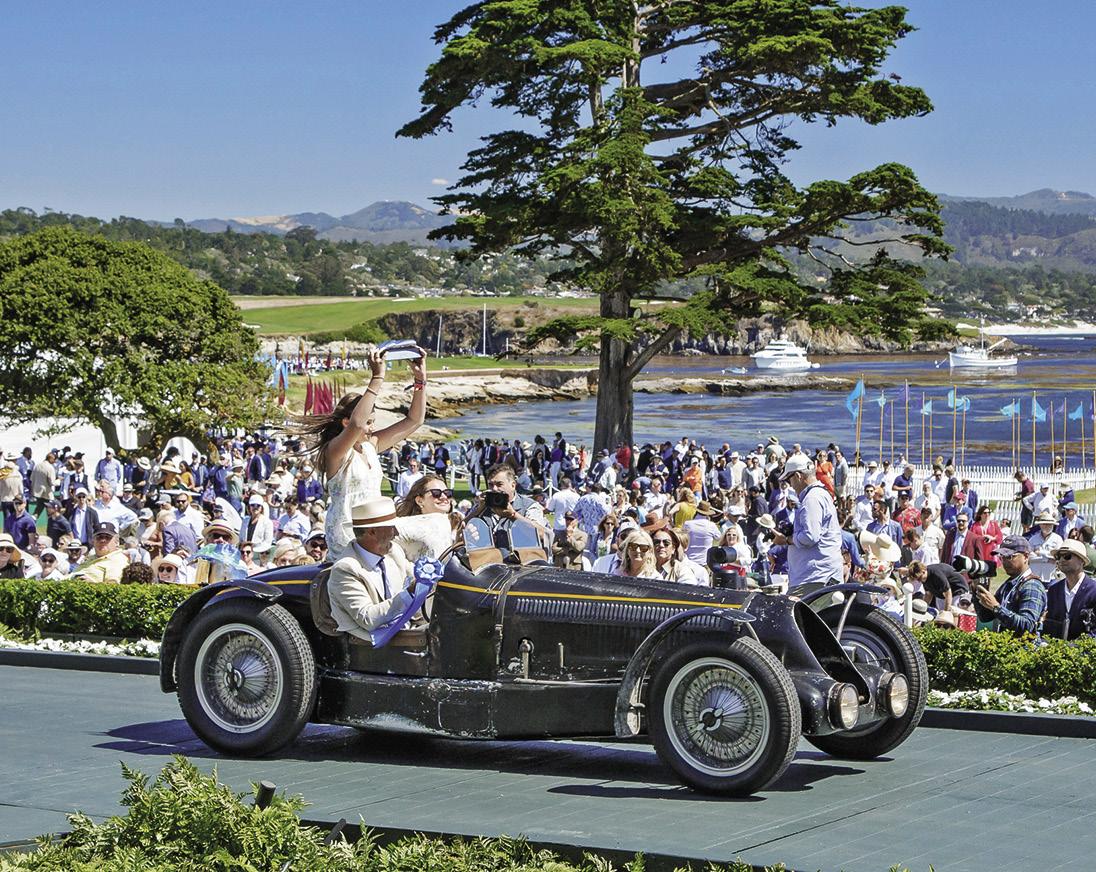
1934 Bugatti Type 59 Sports THE PEARL COLLECTION/FRITZ BURKARD, ZUG, SWITZERLAND
POSTWAR PRESERVATION

1965 Serenissima 308V Fantuzzi Spyder
TOM M c GOUGH SR./TOM M c GOUGH JR., SHOREVIEW, MINNESOTA
FERRARI LATE

1962 Ferrari 250 GTO Scaglietti Coupe
TOM HARTLEY JNR., SWADLINCOTE, UNITED KINGDOM
FERRARI EARLY

1954 Ferrari 375 MM Ghia Coupe
TOM & JILL PECK, IRVINE, CALIFORNIA
POSTWAR SPORTS RACING

1955 Jaguar D-type Race Car
MARK HADDAWY, LOS ANGELES, CALIFORNIA
POSTWAR SPORTS

1971 Lamborghini Miura P400 SV Bertone Coupé Speciale
DEVON M ac NEIL, WELLINGTON, FLORIDA
MASERATI ROAD CARS

1955 Maserati A6G/54 2000 Zagato Spyder
CHRIS SHANE, MANHATTAN BEACH, CALIFORNIA
POSTWAR TOURING

1948 Talbot-Lago T26 Grand Sport Saoutchik Fastback Coupé
ROBERT KUDELA, CHROPYNĚ, CZECH REPUBLIC
MASERATI RACE CARS

1956 Maserati 300S Fantuzzi Spyder
ROBERT DAVIS, NEW YORK, NEW YORK

1951 Maserati A6G 2000 Frua Spyder HENRIK JORST/COOL CLASSICS INTERNATIONAL, RENO, NEVADA

1973
1990 s BPR & FIA GT RACE CARS

WEDGE-SHAPED CONCEPT CARS & PROTOTYPES EARLY


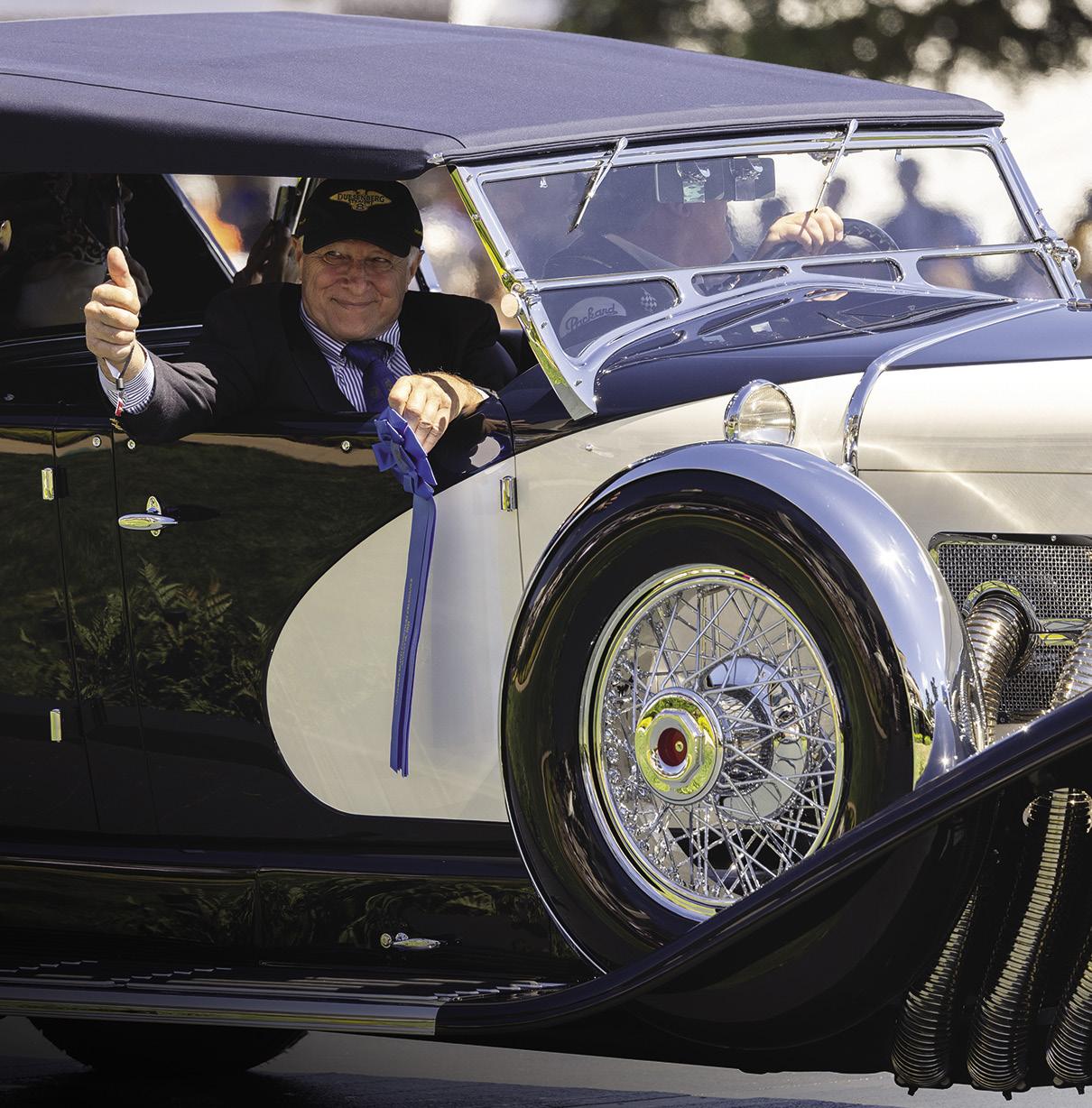







Ideal for entertaining, gifting, and selfindulgence for the most discerning palates.
Visit our San Francisco store, Tiburon Lounge, or website for delivery nationwide.


Hothouse Media: we are the team behind the world’s most respected classic and collector car publications and events. From Octane to Magneto, The Concours Year to The International Historic Motoring Awards and Concours on Savile Row – plus bespoke publishing for Hagerty, M1 Concourse, and Radical Motorsport – we shape opinion, celebrate excellence, and reach the most passionate and influential enthusiasts worldwide.
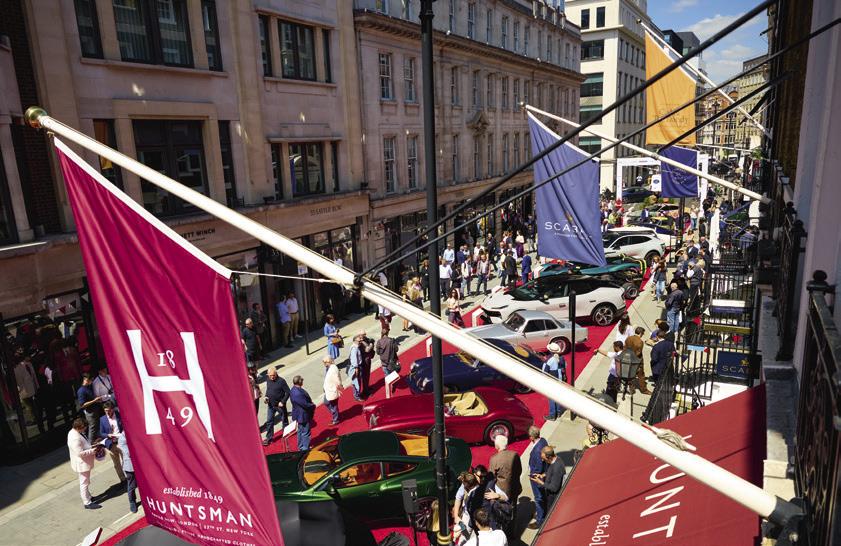












Best of Show is chosen from among the First in Class winners through a simple tally of the independent and secret ballots cast by the Chairman, the Chief Judge, the Chief Honorary Judge, Chief Class Judges, Honorary Judge Team Leaders and selected Class Judges. This top award is sponsored by Rolex, Coachbuilt Press, DAOU Vineyards, Dom Perignon, and Brilliant Stars. The Best of Show Trophy is perpetual and is maintained at Pebble Beach. The winner is presented with a personalized reproduction of the perpetual trophy, a Rolex watch, a studio session and portfolio by photographer Michael Furman, a model of the Best-of-Show-winning car created out of diamonds and jewels, fine wine from DAOU, and Dom Perignon Champagne.
The final nominees for Best of Show will be presented with an elegantly mounted automotive sculpture created from the Pebble Beach Concours d’Elegance Trophy designed by world-renowned artist Emmanuel Zurini.
Our Class Winners are selected by our Class Judges based on originality, authenticity, and proper and excellent preservation or restoration. Class Awards are created from an original sculpture designed by Emmanuel Zurini and are polished stainless steel mounted upon walnut bases. This year’s Preservation Class Awards are sponsored by Meguiar’s, Inc.
J. B. & Dorothy Nethercutt Most Elegant
Sponsored by The JBS Collection, this award goes to the most elegant closed car present. This trophy is named for the couple who won our top award, Best of Show, a recordsetting six times. J. B. & Dorothy Nethercutt established the standards of authenticity and quality to which all Concours entrants now aspire.
Graham Most Elegant
Sponsored by Lalique North America, this award goes to the most elegant convertible present. The trophy is named for the woman who was involved in founding the Pebble Beach Concours d’Elegance.
Jules Heumann Most Elegant
This award goes to the most elegant open car present—a car that has no side windows, though it may have side curtains, as compared to a convertible, which generally has rollup windows. The trophy is named for our former Chairman who was a guiding light to this Concours for over 45 years.
Strother MacMinn Most Elegant
Sponsored by William E. Connor & Associates, Ltd., this trophy goes to the most elegant sports car present. The trophy is named for a respected automotive designer, instructor and historian who was Chief Honorary Judge of the Pebble Beach Concours d’Elegance.
Special Awards, including Elegance Awards, are generally selected by special committees of Honorary Judges. While most Special Award Trophies are perpetual and are maintained at Pebble Beach, winners are presented with an inscribed sculpture created from the Pebble Beach Concours Trophy or with another unique trophy.
Alec Ulmann Trophy, sponsored by The Davis Family and in memory of Oscar Davis, is awarded to the most exciting Hispano-Suiza present. The trophy is named for the founder of the Sebring races. Ulmann was an important contributor to the hobby and to this Concours.
Ansel Adams Award is presented to the most desirable touring car of its era. The trophy is named for the photographer who served often as an Honorary Judge at this Concours. The winner receives a photograph donated by the family of Ansel Adams.
ArtCenter College of Design Award, sponsored by Ron Lee and Leslie Carol, goes to the car that showed the best use of new technology in its era, has groundbreaking style and engineering, and is considered to have had the greatest impact on car design today.
Briggs Cunningham Trophy, sponsored by Ford Motor Company Design, is awarded to the most exciting open car present. The trophy is named for a great American sportsman and automobile creator and collector.
Chairman’s Trophy is awarded to the most deserving car present as selected by the Chairman.
Charles A. Chayne Trophy, sponsored by Bill & Cheryl Swanson, is awarded to the car with the most advanced engineering of its era. The trophy is named for a former General Motors Vice President of Engineering who was a great supporter of this Concours.
Classic Car Club of America Trophy, sponsored by The Joseph Cantore Family, is awarded to the most significant classic car present.
Dean Batchelor Trophy, sponsored by Ford Motor Company, is awarded to the most significant car related to our Hot Rod heritage. Dean Batchelor was a noted writer and historian.
Elegance in Motion Trophy, sponsored by Gooding Christie’s, is awarded to the car deemed to be most elegant in motion. To qualify for this award, a car must have successfully completed the Pebble Beach Tour d’Elegance.
Enzo Ferrari Trophy, sponsored by The Candy Store, is awarded to the best Ferrari present. The trophy is named for the Maestro himself.
FIVA Trophies, presented by Hagerty Drivers Foundation, go to the best preserved prewar and postwar cars as determined by a special committee guided by Fédération Internationale des Véhicule Anciens (FIVA) regulations.
The French Cup is awarded to the most significant car of French origin.
Gran Turismo Trophy, sponsored by Polyphony Digital, is awarded to the most significant car present balancing both artistic beauty and performance at the highest level, and most desired for inclusion in Gran Turismo.
Lincoln Trophy, sponsored by Lincoln, goes to the most significant Lincoln present.
Lorin Tryon Trophy recognizes an automotive enthusiast who has contributed significantly to the Pebble Beach Concours d’Elegance. It is named for the man who served as this event’s Co-Chairman for nearly three decades—a man whose passion and expertise drew the most elegant cars to Pebble Beach year after year.

Lucius Beebe Trophy, sponsored by Laura & Jack Boyd Smith Jr., is awarded to the Rolls-Royce considered most in the tradition of Lucius Beebe, a bon vivant who served among our early judges.
Mercedes-Benz Star of Excellence Award, sponsored by Mercedes-Benz, is presented to the most significant MercedesBenz present.
Montagu of Beaulieu Trophy, honoring Edward Lord Montagu, is awarded to the most significant car present of British origin.
The LAP of Luxury Award presented by LAPIS, and established in 2025, is awarded to the ultimate luxury show car.
The Phil Hill Cup, sponsored by Mark and Sharon Newman, is named for a great participant and friend of both the Pebble Beach Concours d’Elegance and the Pebble Beach Road Races. The trophy is awarded to a significant race car.
Tony Hulman Trophy, sponsored by the Indianapolis Motor Speedway Foundation, is awarded to the most significant open wheel race car present. Hulman owned the Speedway for decades, and he said “Gentlemen, start your engines” before each Indianapolis 500.

















Sign up today to experience the in-depth writing, stunning imagery and award winning design on the cars, people and stories that really matter











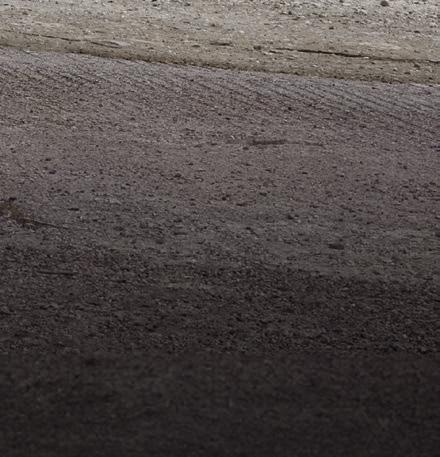

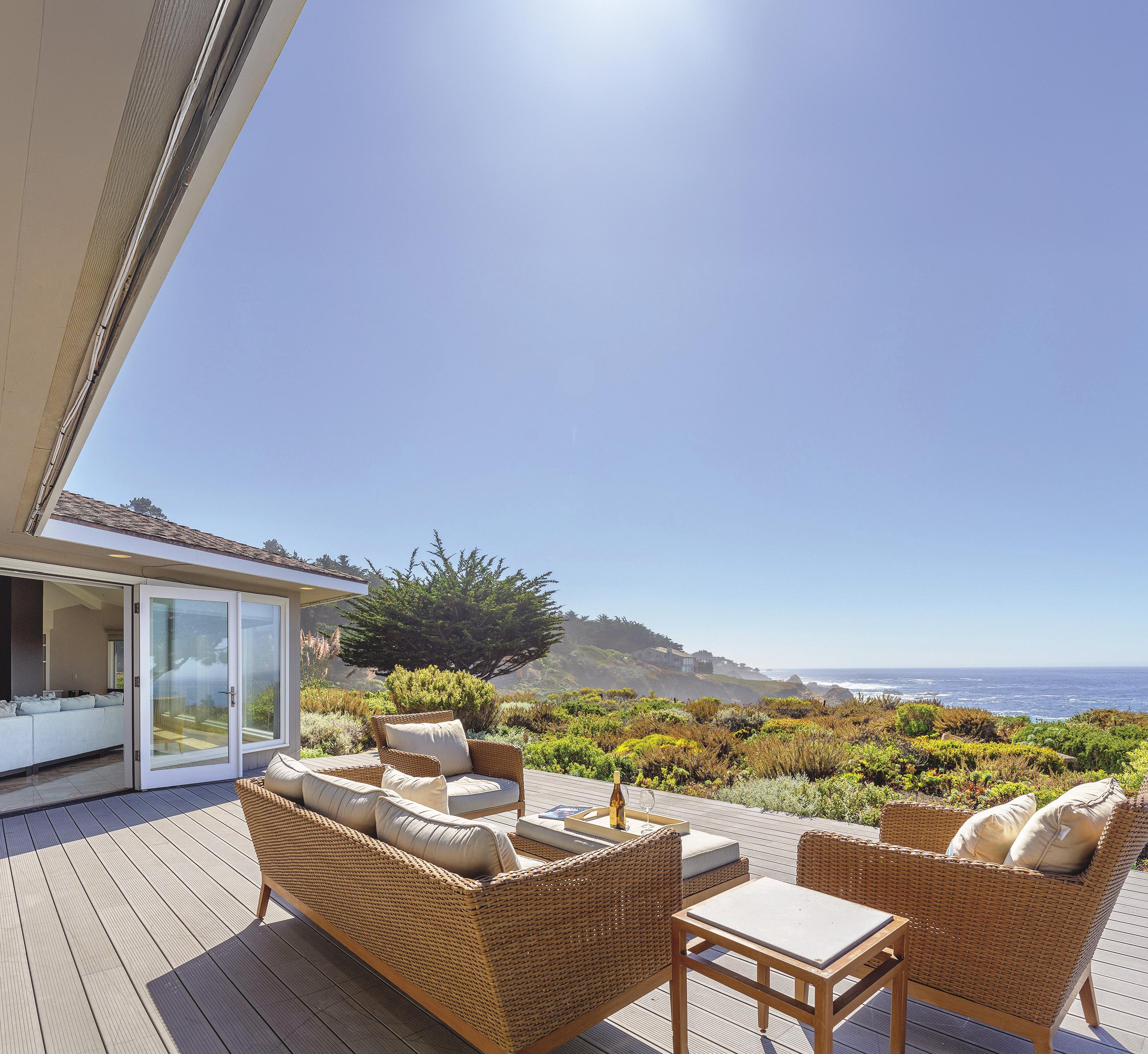
Sanctuary Vacation Rentals offers an array of exceptional vacation residences across the Monterey Bay region, available for nightly, monthly, and longterm stays. We seamlessly blend refined resort accommodations with an atmosphere of relaxed elegance, providing all the conveniences of home. Featuring Ocean’s One Eleven, a standout among our coastal retreats. Our office is in downtown Carmel-by-the-Sea, NW Corner of Mission & 8th.




In 1989, new Range Rovers embarked on an ambitious trip to traverse the most demanding portion of the U.S. Continental Divide, scaling the highest mountain passes.


Journeys to distant places—particularly those where adventurers must navigate off road forging their own path—often require very special vehicles. Since its inception in 1948, Land Rover vehicles have aided explorers in traversing the globe, crossing the most challenging terrain. A remarkable collection of these historic vehicles have been curated for the 2025 Pebble Beach Concours, conveying stories of perseverance and courage amidst breakthrough expeditions. Special thanks go to Land Rover Classic, the British Motor Museum, and select collectors, for their contributions to this exhibit.
Barbara Toy, an Australian actress, playwright, author, and legendary adventurer, conducted numerous expeditions in Land Rovers starting in 1950 with her original, 80'' soft-top Series I nicknamed “Pollyanna.”
After enjoying huge success with the first adaptation of an Agatha Christie book into a play in the late 1940s, Toy decided to buy a Land Rover and drive it from London to Baghdad to visit a friend. Over the course of the next 10 years, she drove “Pollyanna” extensively in the Middle East and North Africa, and it was the first Land Rover to circumnavigate the globe. Notably, Barbara always traveled alone with Pollyanna, trusting that all would eventually be well. Her first long-distance journey in Pollyanna was recounted in her book A Fool on Wheels: Tangier to Baghdad by Land-Rover, and this was quickly followed by books on

additional adventures with Pollyanna: A Fool in the Desert, A Fool Strikes Oil and Columbus Was Right!
Needless to say, Land Rover was appreciative of Toy’s promotion of the marque, and they persuaded her to exchange Pollyanna for the latest Series II model in late 1959. Barbara recounts the sad moment when she returned Pollyanna to the Solihull factory in her book In Search of Sheba. Thirty years later, in 1989, Barbara was able to buy back Pollyanna when the then-owner died. Toy noted that she had to pay five times the original price for it—but at least Pollyanna had been well looked after. The following year, the pair of them—Barbara in her eighties and Pollyanna in her forties—set off to circle the globe a second time, incorporating Australia and the Far East.
Barbara commented in 1998 that if she were to drive a then-current Land Rover Defender overland she would want Pollyanna along as a support vehicle!
1955 Land Rover Series I 86
Station Wagon “Oxford”
In its day, the 1955–56 Oxford and Cambridge Far Eastern Expedition was the longest overland journey ever undertaken by a motor vehicle—covering a distance of 18,000 miles in six months and six days—and even today is often cited as the greatest such expedition.
Left: Barbara Toy with her faithful companion, a 1950 Land Rover Series I Soft Top nicknamed “Pollyanna.”
Below: A glimpse of Pollyanna from outside and in.


Inspired by the 1954 Oxford and Cambridge Trans-Africa Expedition, six students from those two august universities decided to be the first to journey by motor vehicle from London to Singapore, navigating through the Middle and Far East, including countries that were officially closed to visitors, such as Burma.
As recounted in participant Tim Slessor’s book First Overland and documented in a series of three films created by Sir David Attenborough for the BBC, the expedition set off from Hyde Park on September 1, 1955, in two Land Rovers soon dubbed “Oxford” and “Cambridge” and traveled through France, Monaco, Germany, Austria, Yugoslavia, Greece, Turkey, Syria, Iraq, Iran, Afghanistan, Pakistan, India, Nepal, Burma, Thailand, and Malaya— finally arriving in Singapore on March 6, 1956.

Above: The Land Rovers “Oxford” and “Cambridge” amidst their 1955 journey from London to Singapore— a journey often cited as the greatest expedition ever made in modern motorized vehicles.
Right and top right: The 1955 Expedition was forced to make its way across a multitude of rivers and streams, whether by fording them directly or bartering for transport.


“Oxford” (SNX891) was later used by the British Ornithologists’ Union for an expedition on the South Atlantic island of Ascension, where it stayed for decades until moving to the even more remote island of Saint Helena before being rescued and restored by a British enthusiast.
More recently, in 2019, Oxford completed her original journey backwards from Singapore to London and she circumnavigated the world for Land Rover’s 75th celebration.
In 1957, two young Canadian lads embarked on a fourcontinent, 19-country, 60,000-kilometer journey exploring some of the world’s most remote wild and natural places. The expedition was the brainchild of Bristol Foster,


a biologist and ecologist, but he knew he couldn’t do it alone, so he asked his friend Robert Bateman, an artist and naturalist, to join him. After mapping out their route, they opted for a custom-built Land Rover Series I that they nicknamed the “Grizzly Torque” and set off.
Over the next 14 months, they traveled the world, painting, filming, and photographing people and wildlife, collecting specimens, and documenting them. In rural India, a bicyclist darted in front of them, and they crashed, rolling the Grizzly Torque. Much to their amazement, a busload of people stopped, surrounded the vehicle and set it upright.
Upon their return to Canada, the Grizzly Torque was sold and eventually lost. But it was recently discovered and restored—now as then, complete with paintings made along the journey and oil and water cans at the rear labelled “gin” and “tonic.”
1971 Range Rover “Darien Gap Expedition”
A 250-mile stretch of swamp and impenetrable jungle known as the Darien Gap connects Panama and Columbia, and it has stymied the possibility of a road between the North and South American continents. In the early 1970s, local activists and action committees sought to draw publicity to the problem by staging an expedition to cross the Darien Gap with motor vehicles—and the idea was enthusiastically taken up by the British Trans Americas Committee.
Left: The 1971 Range Rovers used on the Darien Gap Expedition traveled the 18,000-mile length of the Americas, from Alaska to Cape Horn between December 1971 and June 1972.
Below: The Range Rovers spent nearly half of their time trying to cross the swampland that separates Panama and Columbia.
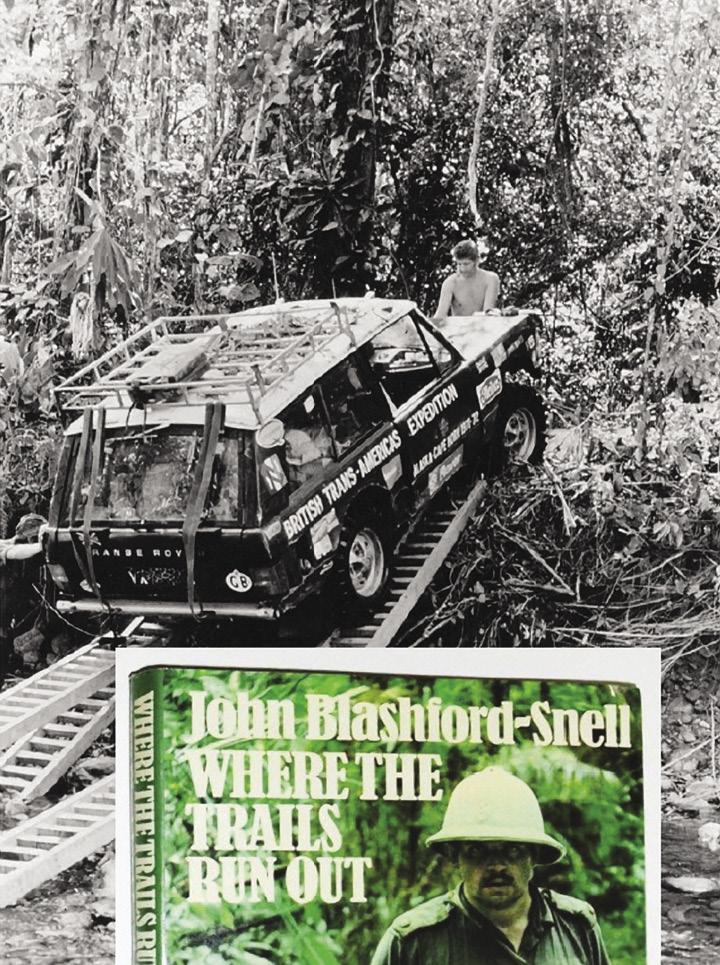
Rover supplied two Range Rovers as transport for the expedition, which was led by Colonel John Blashford-Snell and crewed by members of the 17th and 21st Lancers. Between December 1971 and June 1972, the Rovers covered the full 18,000-mile length of the American continent from Alaska to Cape Horn. But more than half of that time—99 days—was spent fighting their way through the Darien Gap. An advance team, traveling on foot, charted a possible path and cleared trees when needed. But the weight on the Rovers—which had been fitted with roof racks, bridging ladders, capstan winches, double front bumpers, big off-road tires, and additional stowage compartments for a vast amount of equipment and supplies—proved a difficult challenge, and they had to be retrofitted and much lightened amidst the jungle. Range Rover’s chief development engineer, Geof Miller, flew to Panama to accomplish this task.
The Range Rover had only recently been launched, in June of 1970, and this expedition ultimately proved the vehicle’s off-road capabilities.
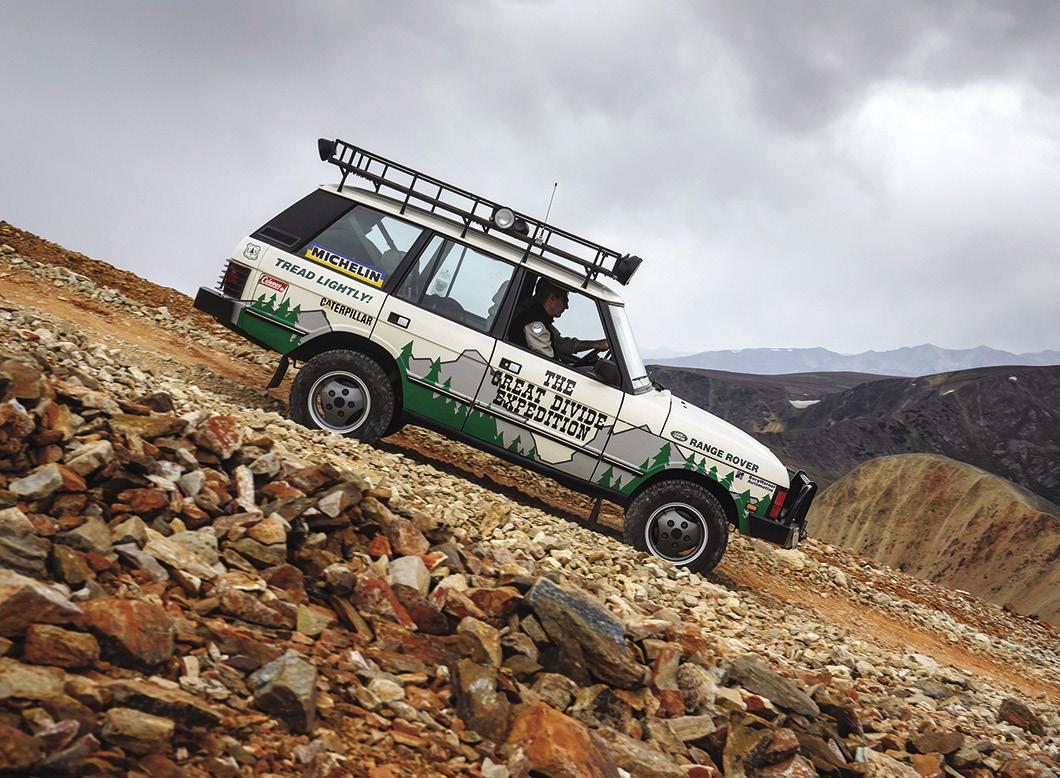

1990 Range Rover “Great Divide Expedition”
In 1989 Land Rover embarked on an ambitious adventure to traverse the most demanding portion of the Continental Divide amidst the Rocky Mountains in Colorado.
A caravan of standard-but-expedition-prepared 1990 Range Rovers navigated their way along a punishing route on a drive Land Rover christened the “Great Divide Expedition.” The 13-day, 1,100-mile route navigated narrow rocky trails with steep drop offs, and some of the mountain passes reached over 13,000 feet (4,000 meters).
Bill Baker, then-head of public relations for Land Rover North America, was looking for a unique way to launch the then-new 1990 model year Range Rover in the U.S. when off-road specialist Tom Collins mentioned that he had been planning for years to forge a path across the Divide at the highest possible point—and Bill jumped at the idea.
The 1990 Range Rovers traversed Red Cone Pass at 12,800 feet, as well as Mosquito Pass at 13,188 feet.
The 1989 Great Divide Expedition, crossing some of the highest passes in the Colorado Rocky Mountains, is proof that epic journeys still wait to be conquered—even in our midst.

Conquering the difficult terrain amidst breathtaking imagery cast the expedition as a great modern Land Rover journey, and the expedition was repeated on its 25th anniversary, using both original and then current Range Rover models.
Land Rover Defender “Camel Trophy”
The Camel Trophy, an adventure competition held annually from 1981 to 2000, ultimately drew 500 amateur competitors from 35 countries to traverse remote and challenging locations. On most of these events, teams drove factory-prepared Land Rovers to their limit and beyond, off road in locations as varied as Borneo, Mongolia, Brazil, Papua New Guinea, Australia, Siberia, and Tanzania. Often called the “Olympics of 4x4,” these competitions generally focused on the driving and navigational skills of a two-person team, with the winning team receiving the Camel Trophy.
The Land Rover Defender not only competed but also served as a support vehicle through most of these events. This Defender was used by the U.S. team in the 1998 event held in Tierra Del Fuego. The Land Rover Freelander was the primary competitor that year, but each team also had a Land Rover Defender to increase their capacity for the support equipment needed for a Latin American adventure amidst the winter season.


The greatest. Most powerful. Fastest in its class. Nothing in its eyeline. No one to bow down to. Raise the bar. Embarrass the benchmark. Do it once. Twice. Obsessively. Relentlessly.
Crown with 900Nm. Tailor with carbon fiber. Roll in magnesium. Prime with Apple CarPlay Ultra. P1.
Bar none. For speed. For luxury. An SUV. That can move like that? Made like this. In Britain. No feeling like it. Five seats. Zero peers. No shortcuts. No shortage. No other name. No other option. The only choice.
Discover DBX S and DBX707

































by JULIE
or the last half a century, BMW Art Cars have provided a platform for renowned artists from across the world to creatively express their fascination with automobiles. The initiative came from French racing driver and art lover Hervé Poulain, who, together with then BMW Head of Motorsport Jochen Neerpasch, asked his artist friend Alexander Calder to paint a car. The result was a completely reimagined BMW 3.0 CSL, which went on to compete in the 24 Hours of Le Mans in 1975, becoming a crowd favorite.
In the years that followed, art icons like Frank Stella, Roy Lichtenstein, Andy Warhol, Robert Rauschenberg, Esther Mahlangu, David Hockney, Jenny Holzer, Jeff Koons, and Julie Mehretu have enriched the collection, each in their own individual style. The BMW vehicles that have been turned into works of art using a wide variety of graphic and artistic techniques are as different as the artists themselves—from pure racing thoroughbreds to production vehicles and rare sports cars. The results are all vastly different. No two vehicles are alike.

BMW Art Car collaborators are selected by an independent worldwide jury of gallerists and curators, and the artist always maintains complete creative freedom throughout the entire process.
BMW Art Car No. 4 by Andy Warhol proved that a work of art can be not only beautiful, but also lightning fast around the racetrack. In 1979, German race driver Manfred Winkelhock, together with Frenchmen Hervé Poulain and Marcel Mignot, took this unique mid-engine

BMW M1 Procar to second place in its class during the legendary 24 Hours of Le Mans.
Warhol’s addition to the BMW Art Car collection came during a period when the artist was experimenting with abstraction and gestural painting. In a departure from the pop iconography that defined much of his earlier work, Warhol’s BMW Art Car embraced a more visceral, dynamic approach. Poulain himself described Warhol’s creative process as performative. Like his BMW Art Car predecessors, and ultimately his successors, Warhol received no fee in exchange for his work. Unlike his fellow artists, most of whom first designed a scale model then had the car painted with the help of a team, the American jumped in and painted the car by himself in one shot. To create his speedy masterpiece, the legendary pop artist applied over thirteen pounds of paint by hand in just 28 minutes. “I attempted to show speed as a visual image,” said Warhol in explanation. “When an automobile is really traveling fast, all the lines and colors are transformed into a blur.”
Space, movement, and energy have always been central motifs in Julie Mehretu’s work. For the design of BMW Art Car No. 20, the Ethiopian-born, New York-based contemporary artist transformed a two-dimensional image into a three-dimensional representation for the first time, succeeding in bringing dynamism into form. Mehretu used

the color and form vocabulary of her monumental painting “Everywhen” (2021–2023) as a starting point for her design. Its abstract visual form results from digitally altered photographs, which are superimposed in several layers of dot grids, neon-colored veils, and the black markings characteristic of Mehretu’s work. “In the studio, where I had the model of the BMW M Hybrid V8, I was just sitting in front of the painting, and I thought: What would happen if this car seemed to go through that painting and becomes affected by it?” the artist said in explanation of her inspiration. “The idea was to make a remix, a mashup of the painting. I kept seeing that painting kind of dripping into the car. Even the kidneys of the car inhaled the painting.” The fusion of image and vehicle was realized with the help of 3D mapping, which transferred the motif to the contours of the vehicle. The elaborate lightweight foiling allowed for the fully transformed BMW M Hybrid V8 to compete at the 24 Hours of Le Mans in 2024.
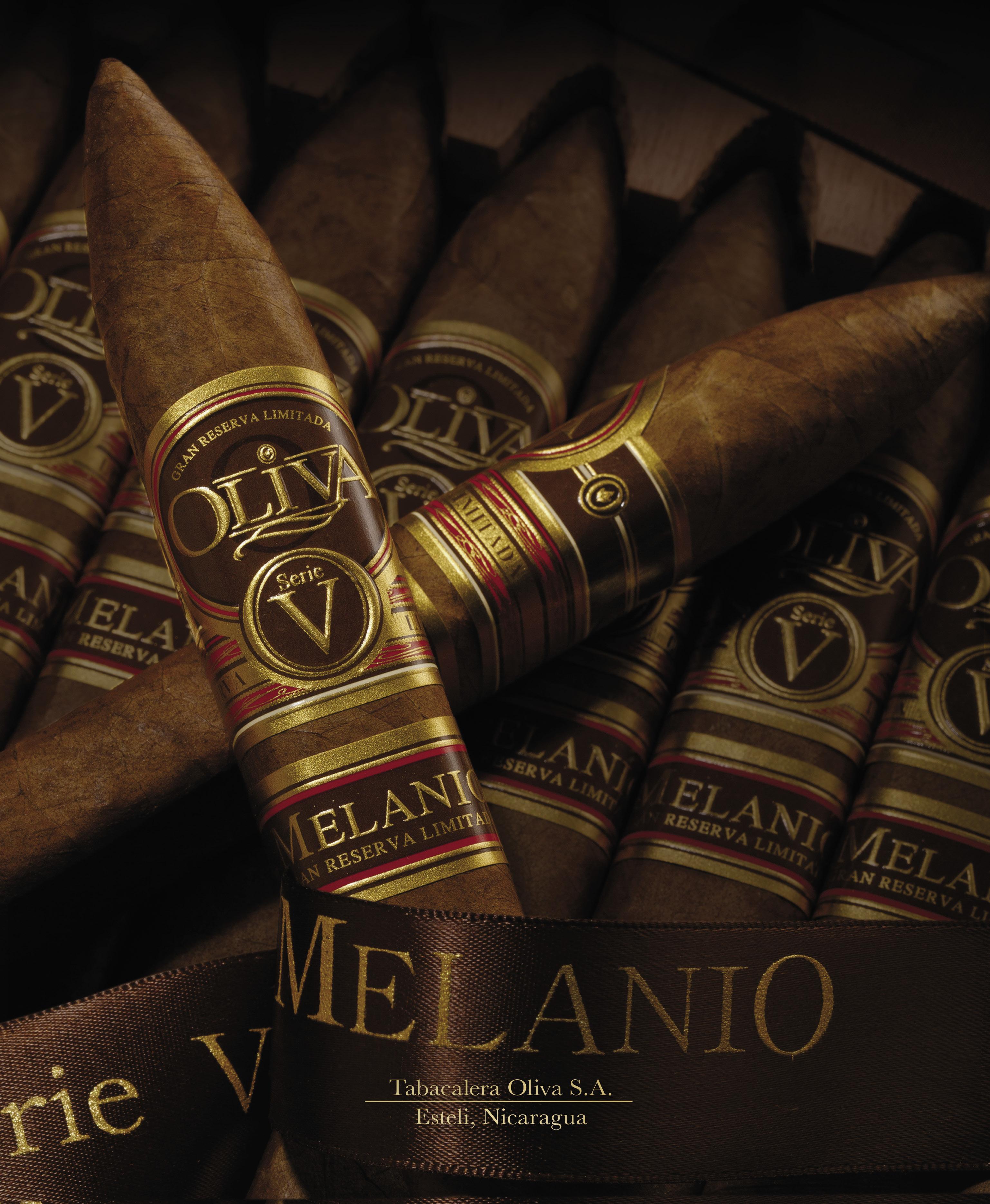

CALIFORNIA’S COASTAL GEM IS HERE IN CARMEL-BY-THE-SEA
Transport yourself to another world in this charming, fairytale village where hidden surprises are around every corner. Explore inspiring car events, restaurants, wine tasting, boutique shops, art galleries, and the famous Ocean Avenue and Carmel Beach. Carmel-by-the-Sea welcomes you and please visit responsibly. get inspired at carmelcalifornia.com



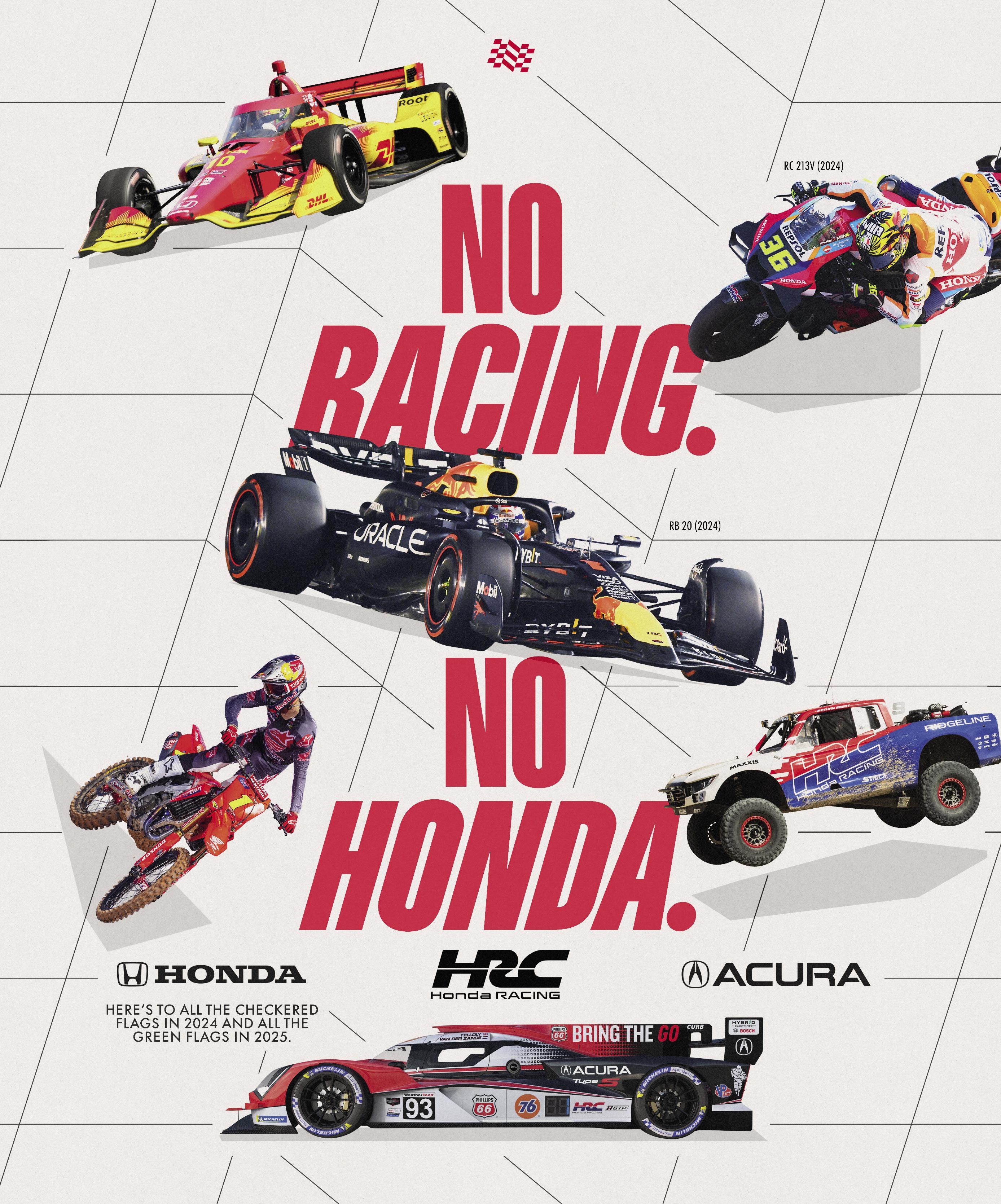
Thornton High pilots his Moretti 750 Gran Sport Rocco Motto Barchetta through Del Monte Forest while competing for the Pebble Beach Cup in the 1954 Pebble Beach Road Races.
Opposite page: After restoring his 1955 Moretti 750 Gran Sport Michelotti Berlinetta, famed automotive journalist Karl Ludvigsen drove it on the Mille Miglia.

By Ken Gross


In August 1954, a small sports coupe called a Moretti 750 appeared on the cover of Road & Track. The sight of that car simply stopped me in my tracks. It resembled a miniature Ferrari, but with exquisite proportions. And when I opened the magazine to read the road test, I learned it was seriously tiny. Its engine was a 45-cid (750-cc), dual overhead camshaft, I-4 with twin Weber carburetors, developing an impressive 51 bhp. With a driver aboard, the tiny GT weighed just over 1,200 pounds, for a power-to-weight ratio that rivaled larger, more powerful marques. Its sleek aluminum body was functionally curvaceous, and its skinny alloy wheels completely filled the radiused wheel wells. Capable of 100 mph, mounted on a tubular chassis, equipped with independent front suspension and a crisp 4-speed gearbox, the little coupe’s level of sophistication left a typical British two-seater of the period for dead. I wanted to learn more about it.
Turns out, the company had begun many years before.
Giovanni Moretti was a talented Northern Italian motorcycle engineer from Turin, who founded his eponymous company, Fabrica Automobili Moretti Torino, in 1925, making this year its 100th anniversary. Moretti’s wellengineered single-cylinder 175-cc motorcycles were successful in competition almost from the outset. But the advent of World War II put his ambitious plans to build automobiles on hold. During the conflict, Moretti produced and sold a clever battery-powered line of small three- and four-wheeled trucks and even offered alternative fuel-powered vehicles. Anticipating a postwar need for small, affordable cars, Moretti’s “La Cita” coupe, introduced in 1946, rivaled Fiat’s Topolino. “La Cita” is a Piedmontese word for “little.”

As a small automaker with limited resources, Moretti didn’t have the means to advertise widely, so the firm resorted to clever promotion. In March 1951, a journalist named Gino Piccoli and Luciano Albiero, a photojournalist, embarked on a five-continent world tour, driving a stock Moretti 600 Giardinetta. The intrepid duo covered more than 75,000 miles (!) before returning to Rome, ensuring that many people worldwide were now aware of the Moretti brand.
The Moretti 600 was more expensive than a contemporary Fiat Topolino, due in part to its size; it had a slightly longer wheelbase and could carry four grown adults, where the smaller Topolino could accommodate just two adults and two children. The more exclusive Moretti was also essentially a beautifully hand-built car—just one example was produced every three days in the company’s small workshops in Via Mantova—while Fiat could churn out 200 Topolinos daily at its giant Mirafiori plant.
Moretti soon pulled off another astounding feat. Between December 31, 1952, and February 20, 1953, a pair of Moretti 750 two-door sedans contested the grueling
Algiers-to-Capetown Rally, traveling over 10,000 miles across the desolate and rugged African continent. Sponsored by fuel company Caltex, the two cars finished in first and second places in their class, and Moretti lost no time trumpeting their victory.
Encouraged by his early success, Giovanni Moretti had even more ambitious plans. By the early 1950s, Moretti was producing unique little coachbuilt Gran Turismo cars—as both coupes and spiders. Moretti was unique among most of the Italian “etceterini” manufacturers because, at the outset, he designed and built his own single- and double-overhead camshaft engines, gearboxes, suspension, and differentials in-house. The majority of Moretti’s small Italian rivals adapted modified Fiat components, because they were cheaper and readily available. Moretti cars were relatively expensive, but with designs by Count Ravelli di Beaumont and Giovanni Michelotti, along with smart-looking coachbuilt bodies from famed carrozzerias like Motto and Vignale, a few discerning customers felt they were worth the price.
After one gets over the sheer audacity of this diminutive coupe, the real surprise is in driving it.
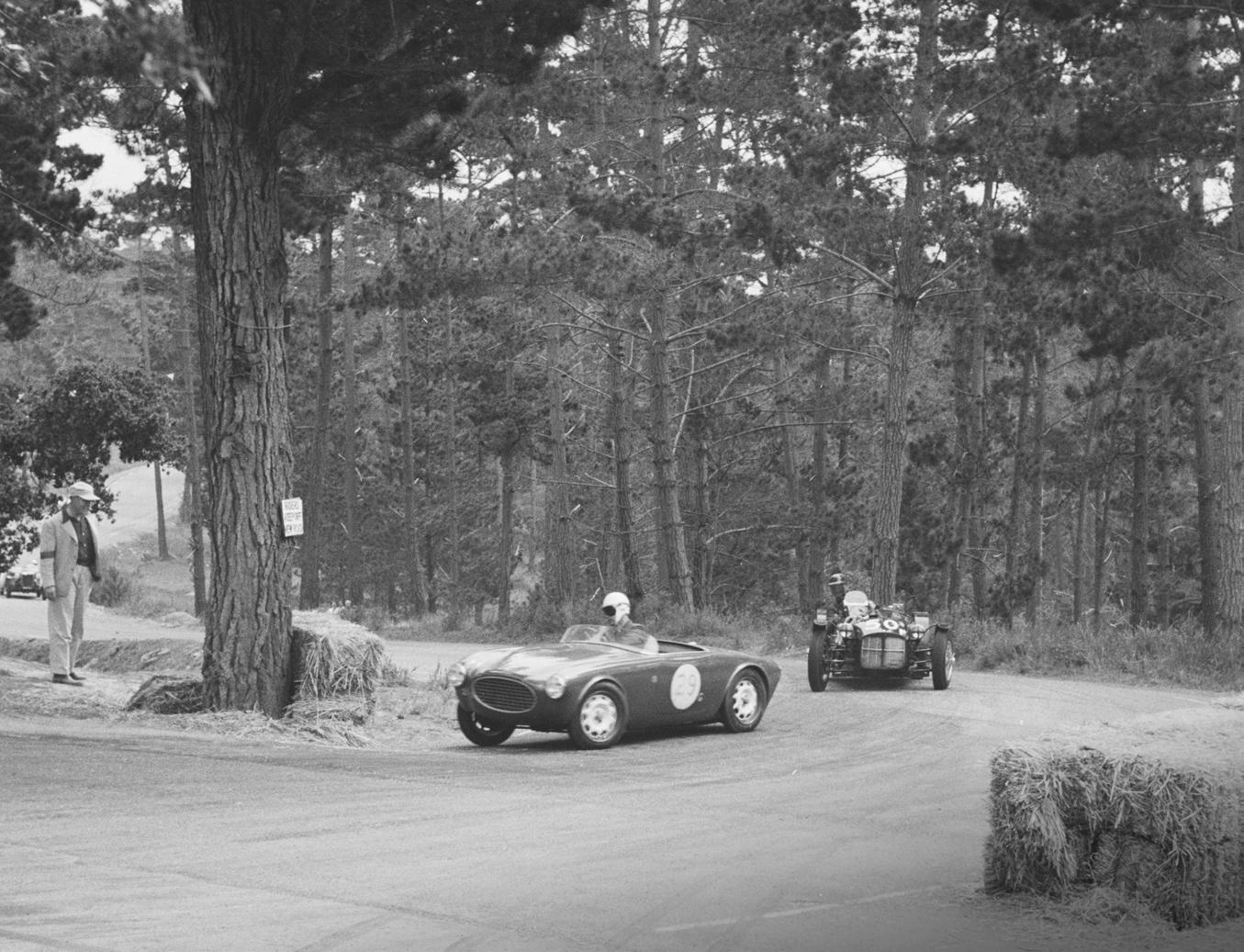



The Moretti 750GT totally charmed Road & Track’s editors. (The design has mistakenly been attributed to Ghia, but Alessandro Sannia, in his definitive tribute to Moretti, says that most likely it was designed and built by Rocco Motto). “After one gets over the sheer audacity of this diminutive coupe,” the testers enthused, “the real surprise is in driving it. . . . Once inside, there is really ample space in all directions, thanks to the very low, bucket-type seats. The starter rasps like a Fiat and the 750-cc engine bellows with a resounding rap.” R&T tester and famed Cal Club racer Jack McAfee repeatedly buzzed the little twin-cam four over 7,000 rpm in each gear, saying that the noise level “was better than the average Ferrari coupe.” The glowing review concluded by saying the Moretti was “one of the most appealing automobiles we’ve ever driven.”
Famed international automotive journalist Karl Ludvigsen recalls, “I was a leader in the recognition of the 750-cc Moretti proposition. This allowed me to visit Moretti when it was still functioning, and to obtain some bits and pieces from Giovanni Moretti without which my car would never have run. I liked to say, not inaccurately, that it took 10 years to restore the Moretti from a virtual wreck, and another 10 years to be sure it was working properly. This culminated in our entry in the modern Mille Miglia Storica in 1998. She ran like a bird, just great, with [my] wife Annette as my navigator.
“The little Moretti was a ball to drive. Its twin-cam engine had ample urge and developed a pleasant shriek as revs rose. It had fine balance on its narrow tires. Its only flaw
was a steering linkage for the right front wheel that went around the engine from the left front wheel! It didn’t always get the message!”
Karl’s Moretti later went to Italian auto collector Lawrence Auriana. We’re delighted to be showcasing that car and three similar 750 Gran Sports in the Moretti class at Pebble Beach. It will probably be the first time in years there have been three Moretti GTs together anywhere.
In 1953, Moretti introduced the sleek, 80-bhp 1200 Grand Sport, and it entered its stylish new coupe in the Stresa Concours d’Elegance that year. Although that result is not recorded, Moretti 1200s subsequently won the Gran Premio at the Cortina d’Ampezzo Concorso d’Eleganza in July 1954 and repeated that win at Rimini that August.
But Fiat wasn’t standing still. The newly redesigned Fiat 600 was priced even more affordably than its Topolino. Moretti countered with its snappy new and restyled 750 and 1200 models, but they were priced at 2.2 million lire, more than three times their Fiat counterparts.
At the 1954 Turin Motor Show, Moretti launched the 500 Coupe, and this was quickly followed by the 600 Spyder. Moretti authority Alessandro Sannia noted that “competing with the Fiat 600 in the same sector would be virtually impossible. The only alternative Moretti could come up with was to make an intermediate product halfway between the two main Fiat models in order to offer anyone not happy with the Fiat 600 a car that looked more like an 1100.”
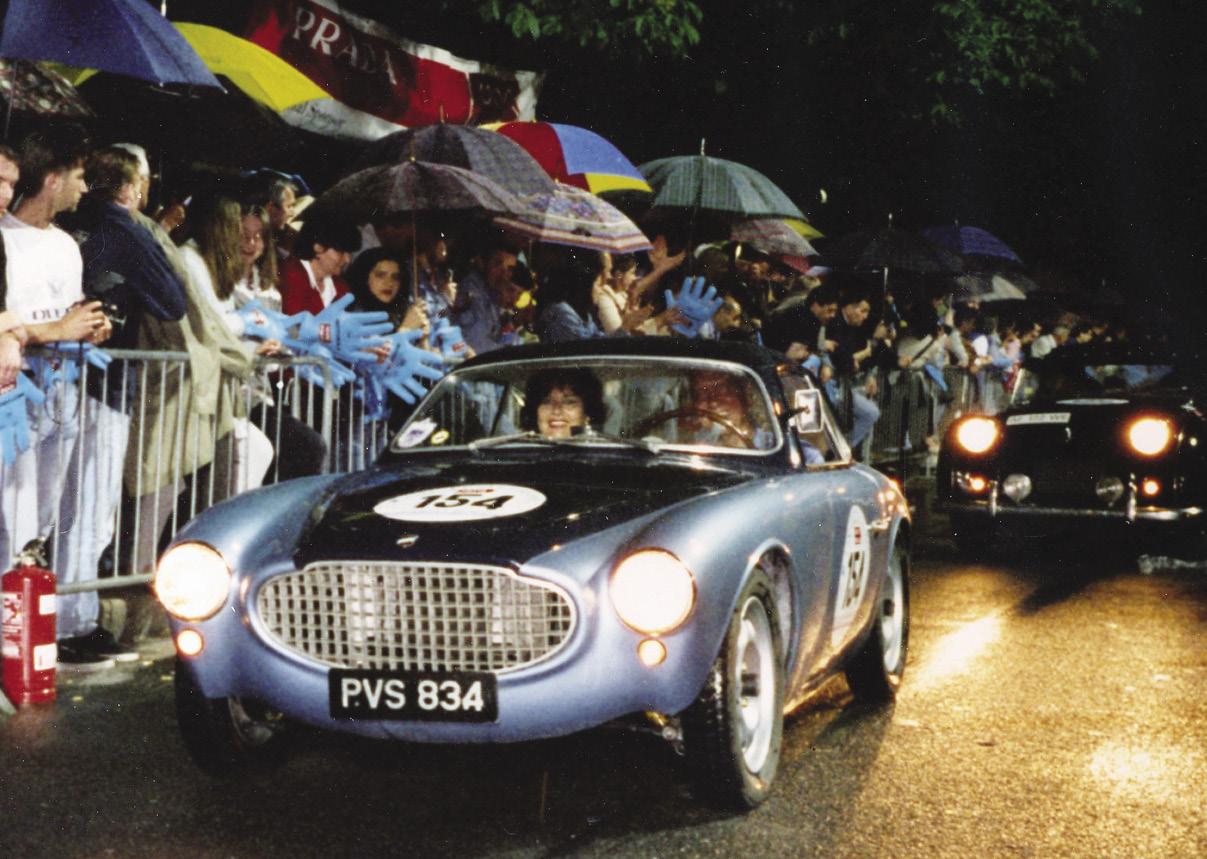
For 1956, Moretti commissioned famed designer Giovanni Michelotti to create a beautiful but easier-to-build twodoor coupe body. It was not a derivative of the Gran Sport, but it used the SOHC I-4 from the previous sedan. The new car was called the 750 “Tour du Monde,” evoking Piccolo and Albieri’s grand adventure. At the same time Moretti produced the Elaborata models, which were basically cosmetically improved Fiats, and special-bodied cars with his sophisticated engines. Moretti benefitted from a close friendship with Fiat boss Gianni Agnelli, so he could offer smartly upgraded Fiats, which he bought at favorable discounts, equipped with uprated trim and more luxurious interiors, thus differentiating those cars from the basic Fiat saloons.
A bewildering number of models ensued, as Moretti searched for that one elusive car that would catch the wealthier public’s fancy and fill the order books. A line of small-capacity 600-cc and 750-cc 4-cylinder cars comprised the growing Moretti lineup. Over the next few years, always in small series, Moretti’s wide and diverse range of vehicles was unusual for such a small marque. Some cars were powered by SOHC Moretti engines while others featured exotic Moretti-designed twin-cam power plants. But they were still relatively pricey, and that largess couldn’t last. By the 1960s, Moretti, like other etceterinis, had turned to building handsome and more reasonably priced cars using modified Fiat mechanicals. Moretti Sportiva coupes and spiders, first on the Fiat 1100 and later on the 1200 chassis, were stylish and sporty, with airy cabins, hood scoops, and even fender portholes to distinguish them from more prosaic Fiats. With these
Below: This early 1953 Moretti 750 Gran Sport Berlinetta was driven and tested by John Bond of Road & Track
Bottom: This 750 Mota Michelotti Spyder is thought to be the car shown at the 1955 Brussels Auto Salon.


models, Moretti transitioned from being a limited production automaker to a coachbuilder.
Once volume ensued and prices leveled off, annual sales exceeded 1,000 cars, offered in numerous body styles, including small station wagons. Although this was not enough to ensure the company’s survival, that did not stop Moretti from trying. To further gain attention, like many Italian automakers, the little company became heavily involved in motorsports internationally. Moretti cars competed in every form of racing, including the 24 Hours of Le Mans. Recognizing racing’s huge potential, in competition with Alfa Romeo, Fiat, Siata, OSCA, and other small marques, Moretti aggressively targeted the U.S. market.
Surviving brochures and colorful print advertisements from the late 1950s attest to the keen interest these cars generated. In the 1950s Morettis were fierce competitors in the 750-cc Class H in SCCA, with multiple class victories. Race-prepared Morettis competed successfully in the Del Monte Forest at Pebble Beach, and at Palm Springs,




March Field, Offutt Air Force Base, Torrey Pines, and other California tracks. Moretti even offered a rear-engine monoposto (single seater) open-wheel race car capable of nearly 110 mph.
Moretti highlights from the 1960s included the 1500 “Golden Arrow” show car, a stylish Fiat-based roadster styled by Giovanni Michelotti. Moretti’s production version used Fiat 1200 and 1500 components. They were followed by gran turismos based on the Fiat 1800 and 2100, with design cues like twin headlights that reflected prevailing trends. In 1963, at the Turin Show, Moretti displayed a Fiat-based 2500 SS model that had a top speed of over 135 mph. The coupe’s rakish split grille, side vents, and dramatic roofline hinted at even greater things to come. But the later Sportiva coupes and spiders, on chassis as small as the Fiat 850, resembled shrunken Fiat Dinos, arguably not a comparison that would improve sales.
As time went on, to keep the lights on, Moretti was building a range of commercial vehicles, including a minivan-like proposal for a multi-passenger taxi. A plethora of restyled
then-contemporary Fiats, including 124s, 125s, 127s, 128s, jazzy Fiat Pandas, along with mini-jeeps and other offroad ephemera, marked the long, slow transition toward the inevitable end. By the 1980s, restyled small Fiats, available on special order, were simply not a viable business any longer. Moretti closed its doors in 1989. Today, we celebrate the founding of Moretti 100 years ago and delight in the stylish, distinctive, and agile little cars produced in the company’s heyday, back in the 1950s and 1960s. The class on the lawn this weekend represents pure Moretti at its best.
As for me, I’d still love to come across an unrestored 750 Gran Sport, tucked away in a garage. The purity of this “baby Ferrari” forever holds an irresistible appeal for me, just as it did when I first saw it on that Road & Track cover, long ago.
The Pebble Beach Concours d’Elegance would like to thank Dr. Mark Brinker for proposing the Moretti Centennial Class and helping to gather the participants.

















BY MARK DIXON

Only rarely have we had the opportunity to gather all of the first six generations of the Rolls-Royce Phantom here. The last such gathering (shown here) took place in 2011.

ver since it was founded by Charles Rolls and Henry Royce in 1904, the Rolls-Royce marque has been synonymous with quality. In 1907, a 40/50 hp Rolls-Royce known as The Silver Ghost was driven non-stop for 15,000 miles to prove its reliability, and when the car was stripped to check for wear afterwards, the total bill for replacement parts came to just over two pounds sterling— about ten dollars at the time. The Silver Ghost was the reason that Rolls-Royce could justifiably claim it made “the Best Car in the World.”
When the time came to replace the 40/50 hp model, any new car would have to be truly exceptional. And so it proved, to the extent that the Rolls-Royce Phantom— which celebrates its centenary this year—has been around longer than any other car nameplate in history. Should you have the resources, you can order a new Phantom today, 100 years after the name was introduced.
Yes, there have been gaps in production. The temporary inconvenience of World War II saw Rolls-Royce switch to making engines for aircraft instead of motor cars, and there have been other hiatuses along the way. But the name has such resonance and prestige that it has never been retired, simply paused until it could be reintroduced when the time was right. As Rolls-Royce itself states, the Phantom remains its “flagship”—the ultimate and rarest car it makes.
This 1929 Rolls-Royce Phantom I is one of just 21 bodied by Brewster as an Ascot Phaeton, so named for the famous royal horserace. Opposite top left and right: This 1929 Phantom I bears a luxurious Brewster Derby Phaeton body.

On its launch in 1925, the new model was actually dubbed the New Phantom, to distinguish it from the longestablished and similarly titled 40/50 hp Silver Ghost, although the name was soon shortened simply to Phantom. The new car was an evolution rather than a revolution, using an overhead-valve 7.7-liter version of the Ghost’s 7.0-liter side-valve straight-six that developed a third more horsepower but attracted lower road tax in its home country due to its engine configuration. Even so, the New Phantom could only manage about 80 mph at a time when Bentley’s 3 Litre achieved the same with an engine of less than half the size—although the typical Rolls-Royce owner would be an older businessman or aristocrat who prioritized comfort and luxury over the vulgar pursuit of “scorching.”
Most early Phantoms were built in the Rolls-Royce Derby factory, but for a brief period some were also built in the United States. Rolls-Royce bought a disused factory in Springfield, Massachusetts, and began making Silver Ghosts there in 1921 to exactly the same impeccable standards as their British siblings. The New Phantom rolled off the Springfield production line in late 1926 and its advertising was frequently aimed at the frazzled businessman who needed time to decompress after a tough day in the office—“Day after day, the rush of business
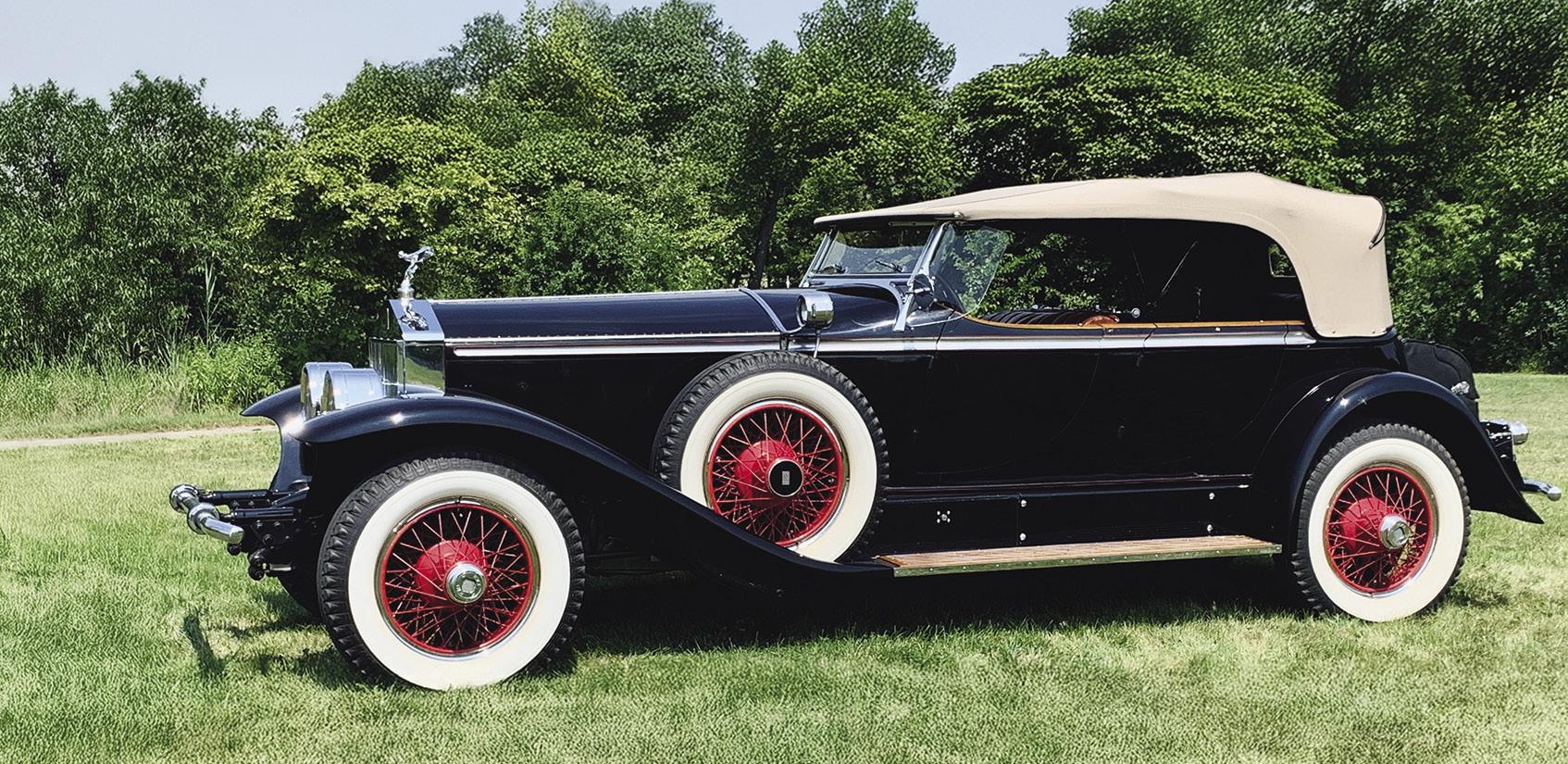
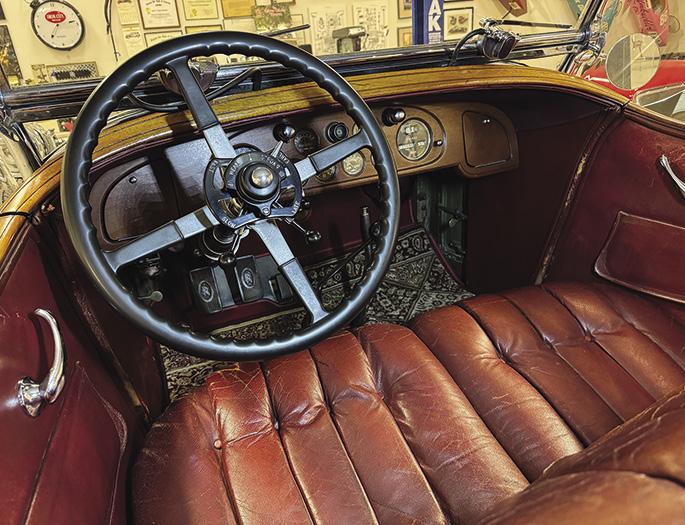
This sporting 1933 Phantom II bears a Brewster Henley Roadster body—one of just nine built and eight remaining.



rips and hammers at your strength and nerves…” as one advert put it—by relaxing in the peaceful environs of a Rolls-Royce. However, when the 1929 Wall Street Crash all but killed sales, Rolls-Royce decided it wasn’t worth re-tooling for the Phantom II, and it closed the Springfield works the following year.
Like many top-end manufacturers of the time, Rolls-Royce focused on building chassis that would then be clothed with coachwork of the customer’s choice. In the United Kingdom, two of the most prolific Phantom coachbuilders were Hooper and Barker but there were many others: Park Ward, Joseph Cockshoot, Thrupp & Maberly, Gurney Nutting, and Rippon Bros among them. Initially, the same process applied to the US-built cars, too, but because many US buyers simply wanted to order a finished car straight off the showroom floor, the company began to offer complete cars with “Rolls-Royce custom coachwork” in late 1923. Three body styles were available—each designed by Rolls-Royce, built under contract by one of three outside coachbuilders, and given names cozily redolent of Olde England such as “The Pall-Mall,” “The Oxford,” or “The Pickwick.” In 1926, Rolls-Royce was able to buy long-established Brewster & Company of Connecticut, and most Springfield cars were thereafter given Brewster bodies.
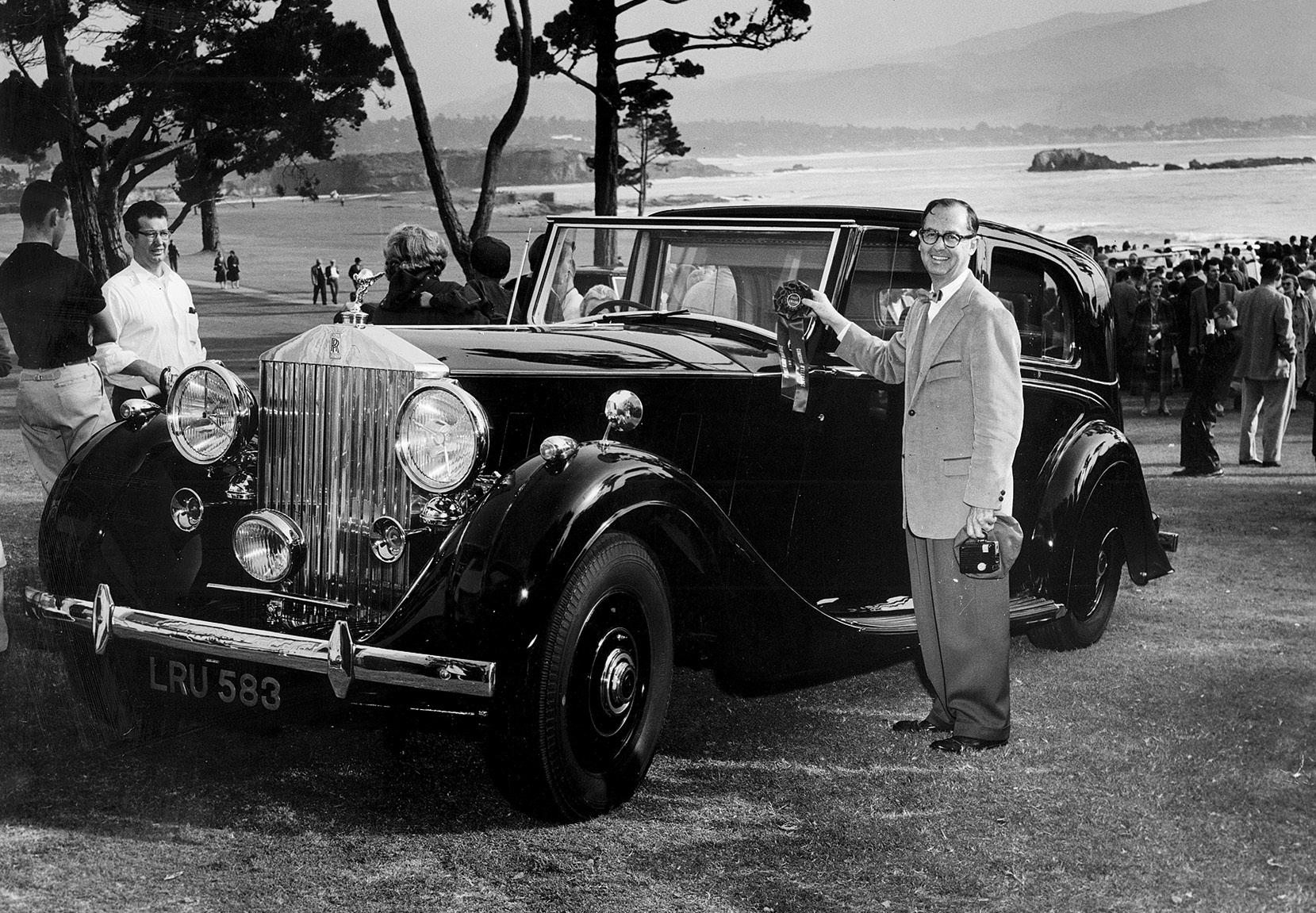
1920s turned into the 1930s the customer base became more democratized, particularly in Hollywood, with customers including Charlie Chaplin and Marlene Dietrich — although the latter’s Phantom, a 1930 model with ultrarare Hibbard & Darrin coachwork, was gifted to her by Paramount Studios exec Jack Warner.
Just as body styles evolved, so too did the technology they clothed. Rolls-Royce had a policy of continuous technical evolution, and the Phantom II of 1929 incorporated several major improvements over its predecessor. Among the most significant changes were a crossflow cylinder head that boosted power to around 120 bhp and a new chassis, which had semi-elliptic rather than cantilever springs at the rear and a part-centralized lubrication system. (On the Silver Ghost, hapless chauffeurs were required to attend to 99 oil and grease points!) Unlike the original Phantom, which had a chassis-mounted gearbox separate from the engine, the Phantom II combined engine and gearbox into a single unit that, together with a revised rear axle, allowed a lower chassis and potentially sleeker body designs.
Rolls-Royce Ghosts and Phantoms had long been popular with native royalty in British-dominated India but as the
Meanwhile, the Phantom’s perceived stateliness had been causing considerable anxiety to Sir Henry Royce. The New Phantom had scarcely been launched before he’d authorized the construction of some experimental “Sports Phantoms” with lighter and more streamlined bodywork. This awareness of the growing potential market for owner-drivers who wanted more “go” with their “show” would eventually result in the short-chassis Phantom II Continental, with its more rakish driving position and stiffer suspension, announced in 1930.
Including the Springfield cars, around 3,500 Phantom I chassis were built and there were nearly 1,800 Phantom IIs. But a huge change was on the horizon: the introduction of a new V12 for the Phantom III in 1936. During its development, this model was the last Rolls-Royce in which Sir Henry Royce had a hand before his death in 1933.
The Phantom III was a particularly large car; its rolling chassis weighed over 1.8 metric tons (4,032 U.S. pounds), and adding four-door coachwork often brought that up to about 3.5 metric tons (7,840 U.S. pounds). In compensation, the V12 engine was technically advanced,


with its cylinder heads and block built of aluminum alloy, with overhead valves operated by a single camshaft, and with a complex form of hydraulic tappet adjustment to ensure near-silent operation. Just as importantly, there was independent front suspension for the first time in a Rolls-Royce, which helped lighten the steering, and servo-assisted brakes. Unfortunately, the outbreak of war in September 1939 brought an end to production after a few more than 700 chassis, and Rolls-Royce turned its attention to building another kind of V12 engine: the Merlin, which powered Spitfire and Hurricane fighters, and Lancaster bombers.
The Phantom name reappeared in 1950, and we have Prince Philip, husband of the future Queen Elizabeth II,
Left: The first Phantom IV was built for the Duke of Edinburgh and then-Princess Elizabeth. This example, with Hooper Landaulet coachwork, was also built for the royal couple and remained in their service for over four decades and traveled extensively.
Below: Her Majesty Queen Elizabeth II exits the Landaulet in Lagos in 1953.


to thank for that. While visiting the Rolls-Royce and Bentley factory at Crewe in northern England— Rolls-Royce had acquired its financially beleaguered rival in late 1931—the Prince was very taken with an experimental straighteight-powered sporting Bentley, nicknamed the Scalded Cat. He hinted that it would be rather nice to have such an enjoyable car in the Royal Mews, and in due course Rolls-Royce built what was intended to be a one-off but became a strictly limited series of 18 cars intended for Heads of State: the Phantom IV. The Phantom IV remains the only Rolls-Royce to have been powered by a straight-eight engine, a refinement of the B-series modular design that was used by the British Army for military vehicles in four-, six- and eight-cylinder configurations.
The Prince and then-Princess took delivery of the first Phantom IV in 1950, and it became an official State car on the accession of Her Majesty to the throne in 1952. So it was that, after having used Daimlers and Lanchesters almost exclusively since 1900, the Royal Family switched to RollsRoyce motor cars for the second half of the 20th Century.
The Phantom V (1959–1967) and Phantom VI (1968–1990), which were built on lengthened and strengthened Silver Cloud chassis, are indelibly associated with Elizabeth II’s reign; their unashamedly traditional appearance— separate front wings abutting a huge Palladian radiator grille, and lofty bodywork designed to let crowds view the Royal occupants—as much of a reassuring constant in a world of change as Her Majesty herself. Unlike the halcyon prewar days, when independent coachbuilders abounded, the realities of postwar rationalization meant that nearly all Phantom Vs were bodied by just three firms—Park Ward, James Young and H. J. Mulliner—plus the combined company Mulliner Park Ward that was formed when RollsRoyce folded Mulliner into its “in house” coachbuilder Park Ward in 1959. Mulliner Park Ward also effectively became the de facto couturier for almost all of the 374 Phantom VIs made.
With 6.3-liter (6.7-liter from 1979) V8 engines coupled to automatic transmissions, and modern luxuries such as air conditioning and electric windows, these final iterations of the old-school Phantoms were ideal parade cars. But, just as in the hedonistic 1920s and ’30s, they were popular with show-biz types, too. The ultimate anti-Establishment gesture was made by serial Phantom owner John Lennon,

This 1972 Rolls-Royce Phantom VI was bodied by Mulliner Park Ward as a formal State Landaulette, with complex opening top often used by royalty or government officials in ceremonial parades.
who had his 1965 Phantom V repainted in bright yellow with psychedelic Romany Gypsy-inspired motifs, and then traveled with his fellow Beatles in it to Buckingham Palace later that year to collect their MBEs.
By the 1970s, the Phantom VI, with its separate chassis and 1940s-derived looks, was becoming notably dated in technological as well as styling terms. But the Royal Family continue to appreciate their Phantoms, even now; three remain in the Royal garages—the original Phantom IV and two VIs from 1978 and 1987—along with a pair of special-bodied Bentley limousines that were presented to the Queen for her Golden Jubilee in 2002. Poignantly, all five vehicles were used on the day of Her Majesty’s State funeral almost three years ago.
After a turbulent couple of decades in Rolls-Royce’s history that culminated in it being bought by Volkswagen in 1998 and then relaunched by BMW five years later, the firm’s resurgence was triumphantly marked by the launch of the dramatic new Phantom VII in 2003, which evolved into the Phantom VIII in 2017. The VII, in particular, is fast becoming a modern classic; AC/DC rock star Brian Johnson treasures his 2007 example, and comic actor Rowan Atkinson recently bought back his 2004 car and is restoring it. Examples of these 21st century Phantoms may soon join their predecessors on the lawn at Pebble Beach.








Car Week is back—roaring with racing engines, classic cars, and automotive excitement. Amid the thrill, remember to take the right path. That means enjoying all the wonders of Monterey County responsibly, so future generations can too. Let’s take the right path—together.



















B r u n c h 1 0 - 2 • L u n c h 1 1 : 3 0 - 4 • D i n n e r 4 - 1 0 • L a t e N i g h t 1 0 - 1 2 B a n q u e t s • W e d d i n g R e h e a r s a l s W e d d i n g A f t e r P a r t i e s • H
4 0 0 Ty l e r S t . , M o n t e r e y, C A 9 3 9 4 0 • i n f o @ t u r n 1 2 b a r a n d g r i l l . c o m • w w w. t u r n 1 2 b a r a n d g r i l l . c o m • ( 8 3 1 ) 3 7 2 - 8 8 7 6
F i l l‘eru p !
a n e x c e p t i o n a l b a r, a n d a f e s t i v e l i v e l y a t m o s p h e r e !



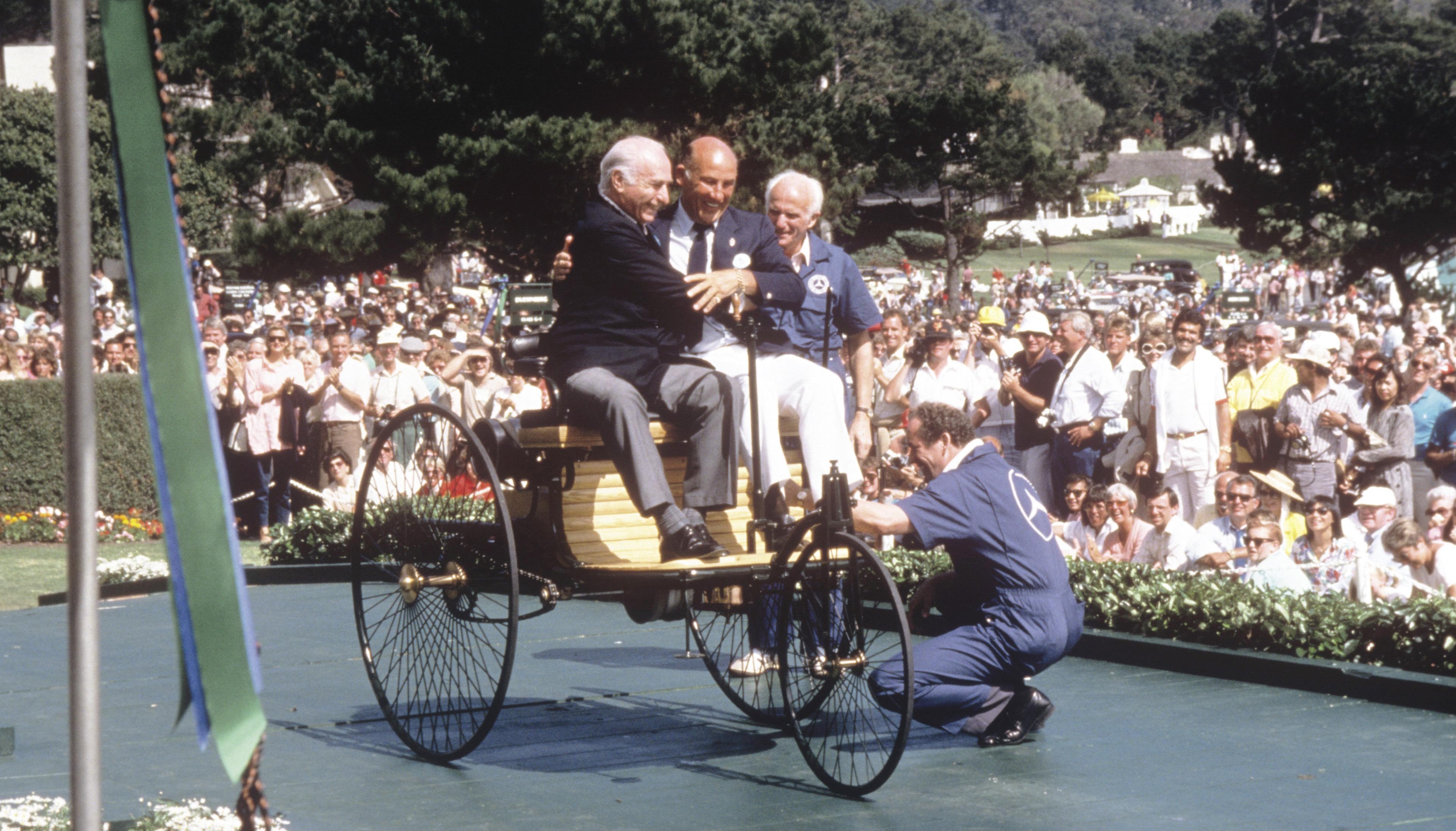
It was a moment that drew gasps of worry followed by raucous laughter and applause.
The year was 1986, and we were celebrating the first-ever centennial of a marque—Mercedes-Benz.
Judges decided to award the Charles A. Chayne Trophy, which celebrates the car with the most advanced engineering for its day, to a car that had no equivalent— no competition at all—in its era: Carl Benz’s 1886 Patent Motor Wagon.
Mercedes had built and brought a replica of the original to showcase at the Pebble Beach Concours, and former Mercedes racing greats Juan Manuel Fangio and Stirling Moss were on hand to drive it across the ramp.
Given the go, the two drivers accelerated, hit the edge of the ramp at an angle—and the tri-wheeler nearly toppled. Fangio and Moss grabbed for each other as nearby Mercedes mechanics came running to keep the Benz upright.
And all was well in the end.





